inbox and environment news: Issue 570
February 5 - 11 2023: Issue 570
NSW Government Shows Contempt For Democratic Process With 5th Introduction Of Floodplain Harvesting Regulations
Plastic Ramp Put In At South Avalon Beach
Tawny Frogmouth - Warriewood
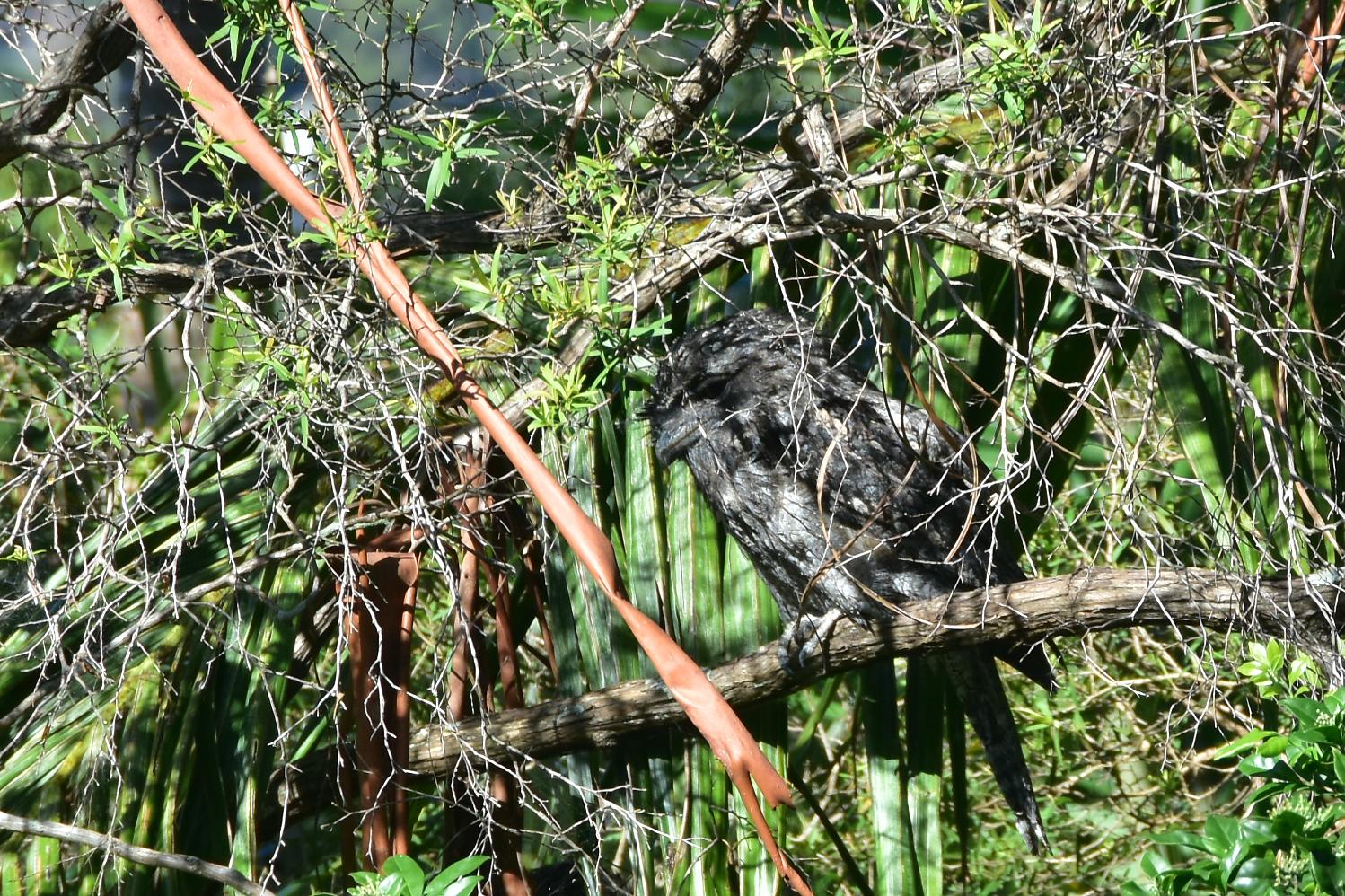
Pittwater Spotted Gum Nest Hollows
Another 2022 Greening Our City Grant For Council
- developing or updating urban forest strategies and street tree master plans
- developing and enhancing tree asset databases
- analysing tree canopy data to identify priority planting areas
- engaging the community through workshops and educational campaigns to promote the benefits of trees and canopy cover.
Belrose Gets A New Mountain Bike Track
On January 30 2023 Council announced the opening of another mountain bike trail at Belrose. Wyatt Ave Bike Park in is a purpose-built facility for youngsters and new riders to safely practice and learn skills before progressing to more challenging trails like Bare Creek and Manly Dam.
Northern Beaches Mayor Michael Regan said Council’s own Landscape Construction Team worked with Trail Care to deliver a high-quality result and ensure the best outcome for the riding community.
“Riders of all ages will be super pumped to have a site they can call their own to practice their skills before they even consider going to the much more advanced Bare Creek and Manly Dam tracks.
“The site’s loop trail includes a beginner loop and mini flow loop; climb and descent, technical features, and gravity zone features, as well as bike launching area, a viewing platform, and so many environmentally conscious elements including 1050 new trees planted.
“This project would not have been possible without the instrumental work of local mountain biking advocacy and consultancy group Trail Care who helped design the park based on feedback from local skills coaches and parents of local riders to gain a clear understanding of what the community needed.” Mayor Regan said.
Trail Care’s Matt Ward is thrilled Council is supporting and investing in this growing sport.
“The new park provides awesome opportunities for kids and new riders to progress. Perhaps they've never ridden a bike on dirt before; here they can build confidence on corners, rock rolls, drops, and jumps. It's the ideal stepping stone towards other Council facilities like Bare Creek and Manly Dam.
“Working in collaboration with Council on this project has led to great outcomes, bringing together amazing landscaping work with local trail design knowledge. The end result is one of the best-looking skills parks I've seen.” Matt Ward said.
“We’re also so grateful to the local member for Davidson, Jonathan O’Dea, for securing use of the site and advocating for this project. He has been instrumental since its inception, and it will be one of the many projects which will become his legacy.” Mayor Regan said.
Member for Davidson, The Hon, Jonathan O’Dea said he’s delighted to see all the hard work on the project has paid off.
“I was pleased to negotiate for the State Government to dedicate the land for community recreation on the basis that Northern Beaches Council took responsibility for planning and developing a new facility.
“Wyatt Ave Bike Park is designed for younger and less experienced riders and provides a safe introduction to an exciting and energetic sport. It is a wonderful complement to the neighbouring Bear Creek Bike Park” Mr O’Dea said.
In addition to 1050 new plants, 950 tonnes of excavated construction material from local construction sites formed the trail subbase, as well as 120 cubic metres of recycled mulch.
Council encourages all riders at any of the bike parks to wear appropriate safety gear.
Update: 1105 Barrenjoey Rd Palm Beach Development Proposal Refused - Appeal Dismissed
“Future development will maintain a building height limit below the tree canopy and minimise bulk and scale whilst ensuring that future development respects the horizontal massing of the existing built form. Existing and new native vegetation, including canopy trees, will be integrated with the development. Contemporary buildings will utilise facade modulation and/or incorporate shade elements, such as pergolas, verandahs and the like. Building colours and materials will harmonise with the natural environment. Development on slopes will be stepped down or along the slope to integrate with the landform and landscape, and minimise site disturbance. Development will be designed to be safe from hazards.The design, scale and treatment of future development within the commercial centres will reflect a 'seaside-village' character through building design, signage and landscaping, and will reflect principles of good urban design. Landscaping will be incorporated into building design. Outdoor cafe seating will be encouraged.A balance will be achieved between maintaining the landforms, landscapes and other features of the natural environment, and the development of land. As far as possible, the locally native tree canopy and vegetation will be retained and enhanced to assist development blending into the natural environment, to provide feed trees and undergrowth for koalas and other animals, and to enhance wildlife corridors.”
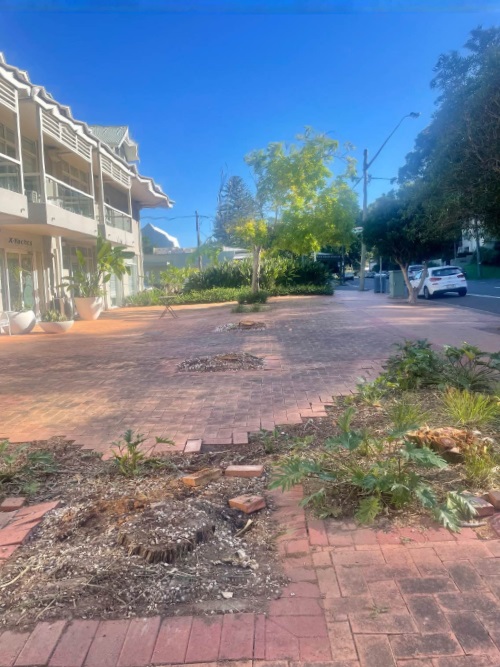
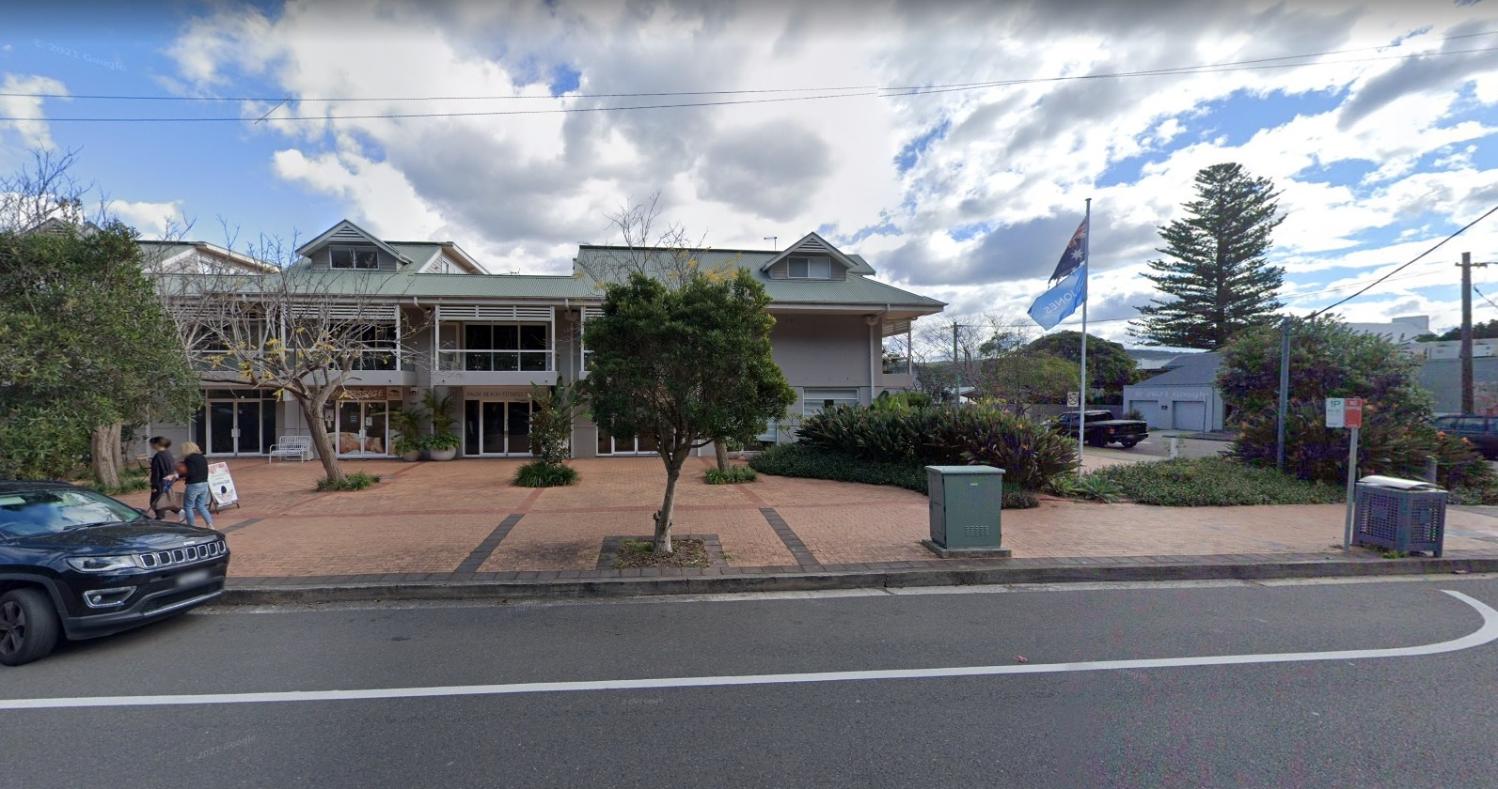
Council Land At Bangaroo Street North Balgowlah: Update

Ace Demolition & Excavation Pty Ltd Convicted Of Supplying Information About Waste Knowing That The Information Was False Or Misleading
- pay fines totalling $943,650; and
- pay the Environment Protection Authority’s legal costs.
NSW Government Mulls Approval For Coal Project That Would Produce 8 Times NSW Yearly Greenhouse Emissions: Has Approved 18 New Coal And Gas Projects During Current Term
HVO North is within five (5) years of mine closure. As such, detailed mine closure planning for the HVO North operations should have commenced in accordance with its current conditions of approval. The Scoping Report identifies that mine closure and final rehabilitation will be deferred, as the Project will be extended for a further 25 years.Council considers that reliance on the potential for a new Project approval is not an adequate justification to delay mine closure planning for the current operations. In addition, given the short time frame until the current approval expires, Council considers that it would be imperative to include detailed mine closure planning the EIS, and that the EIS must include a timetable for completion of a detailed mine closure plan and a stakeholder engagement plan to underpin closure planning outcomes, under both scenarios – if the Project gains approval, and if it does not.
Hunter Gas Pipeline Approval Will Damage Climate, Culture, Koalas, Farming Communities State Those In Its Path: Liverpool Plains In Santos Sights
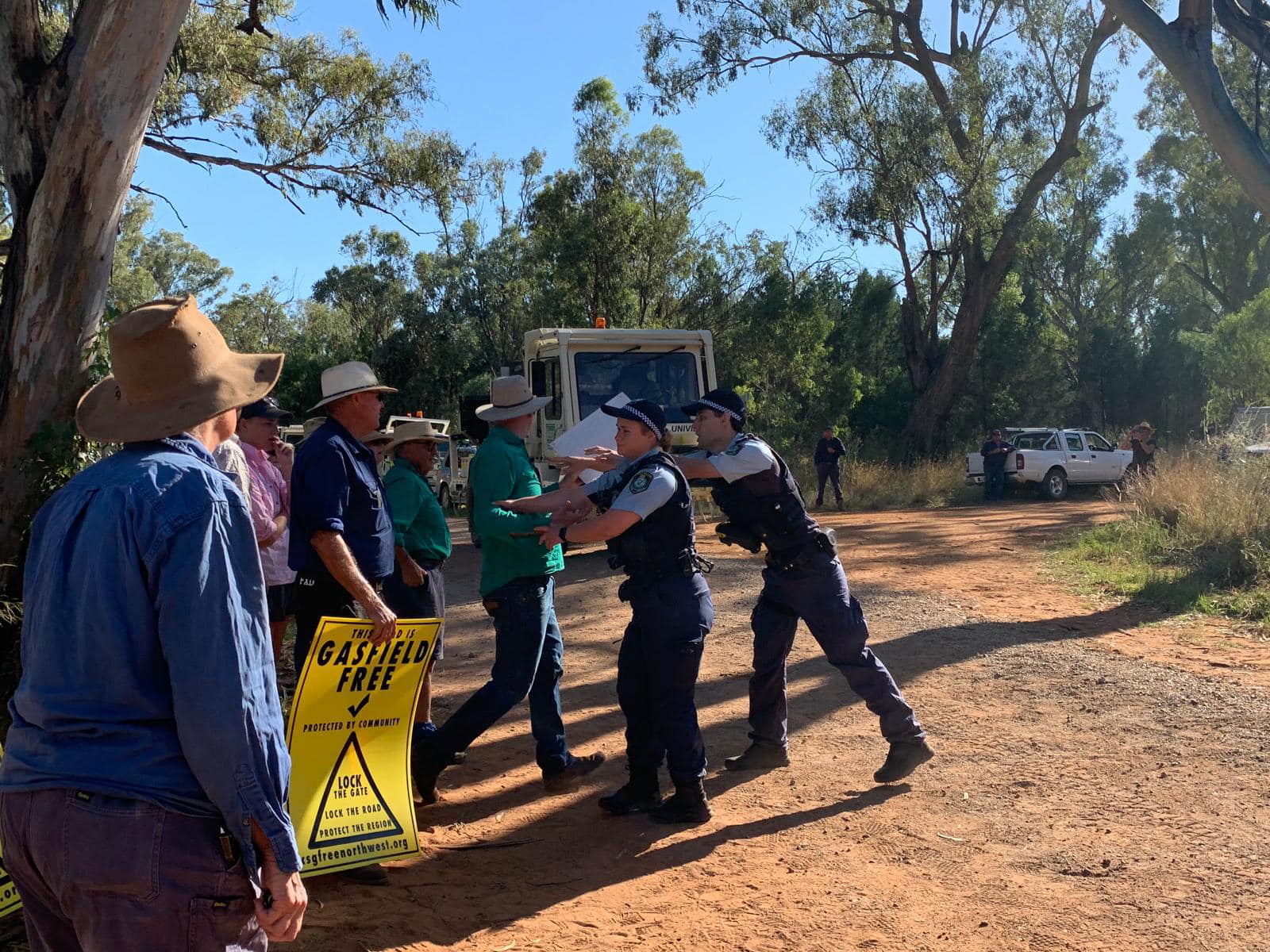
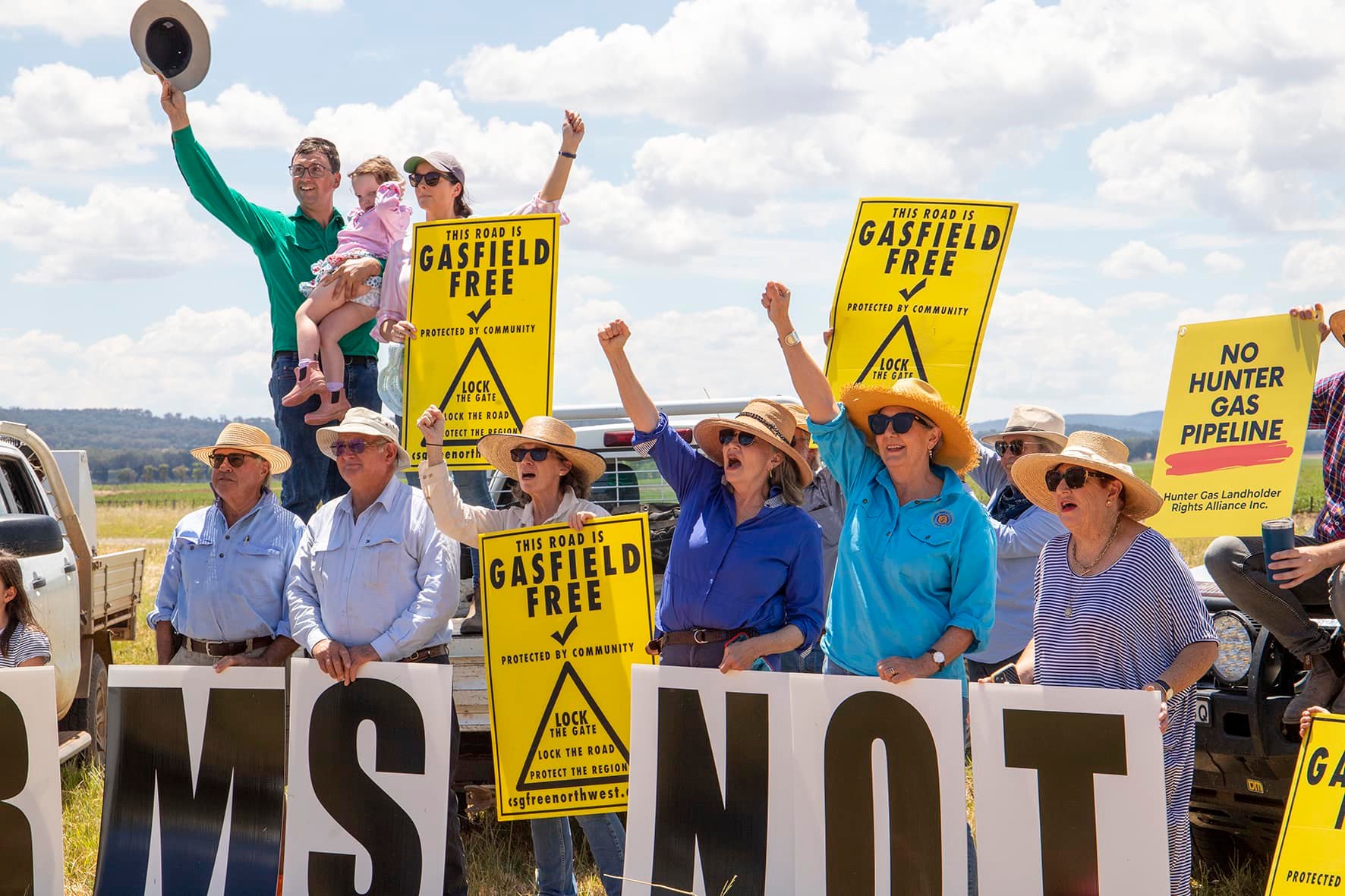
Greens Announce Plan To Solve Soft Plastics Crisis
- Immediately redirect the entirety of the more than $800 million per annum waste levy towards dealing with the waste crisis
- Dedicate $100 million from the Waste Levy towards establishing soft plastics recycling schemes.
- Establish a ‘Plastics Reduction Taskforce’ to develop a s soft plastics recycling strategy
- Mandate procurement targets for recycled plastic content in single use plastics as well as products like roads and pathways, railway bollards and street furniture.
- Expand the trial of curbside soft plastics recycling to Sydney.
- Support and invest in small businesses with existing soft plastics recycling schemes to scale up.
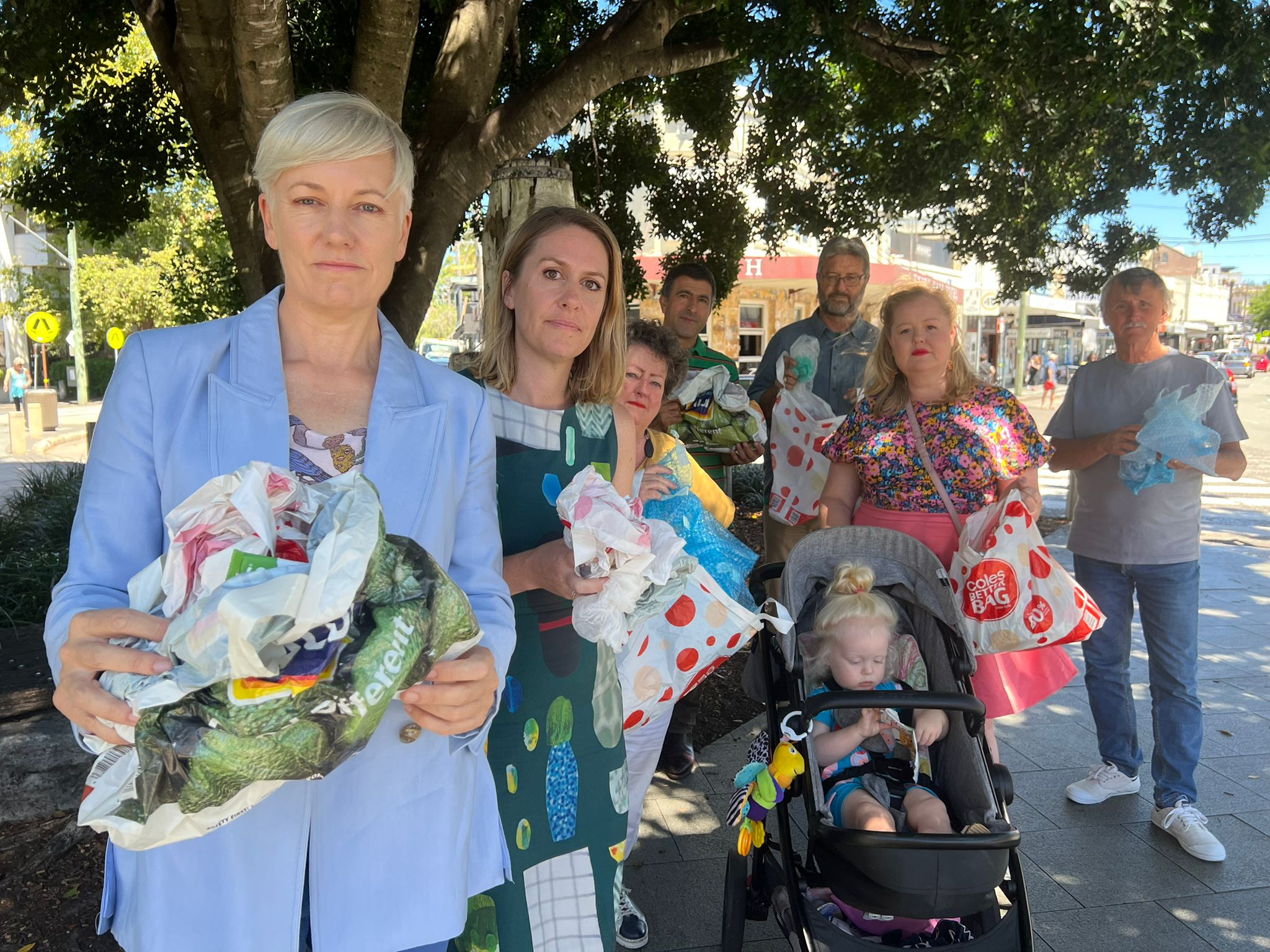
Supermarkets On Notice To Clean-Up Soft Plastic Stockpiles: NSW EPA
Prune Viburnum Hedge Agapanthus Flowers To Prevent Spread Into Bush Reserves
PNHA: January 11, 2023
Now is the time to prune the berries off the Viburnum hedge and dehead those old Agapanthus flowers. Put these prunings into your green waste bin. Both are now weeds of bushland as their seeds travel.
Photos: Pittwater Natural Heritage Association (PNHA)
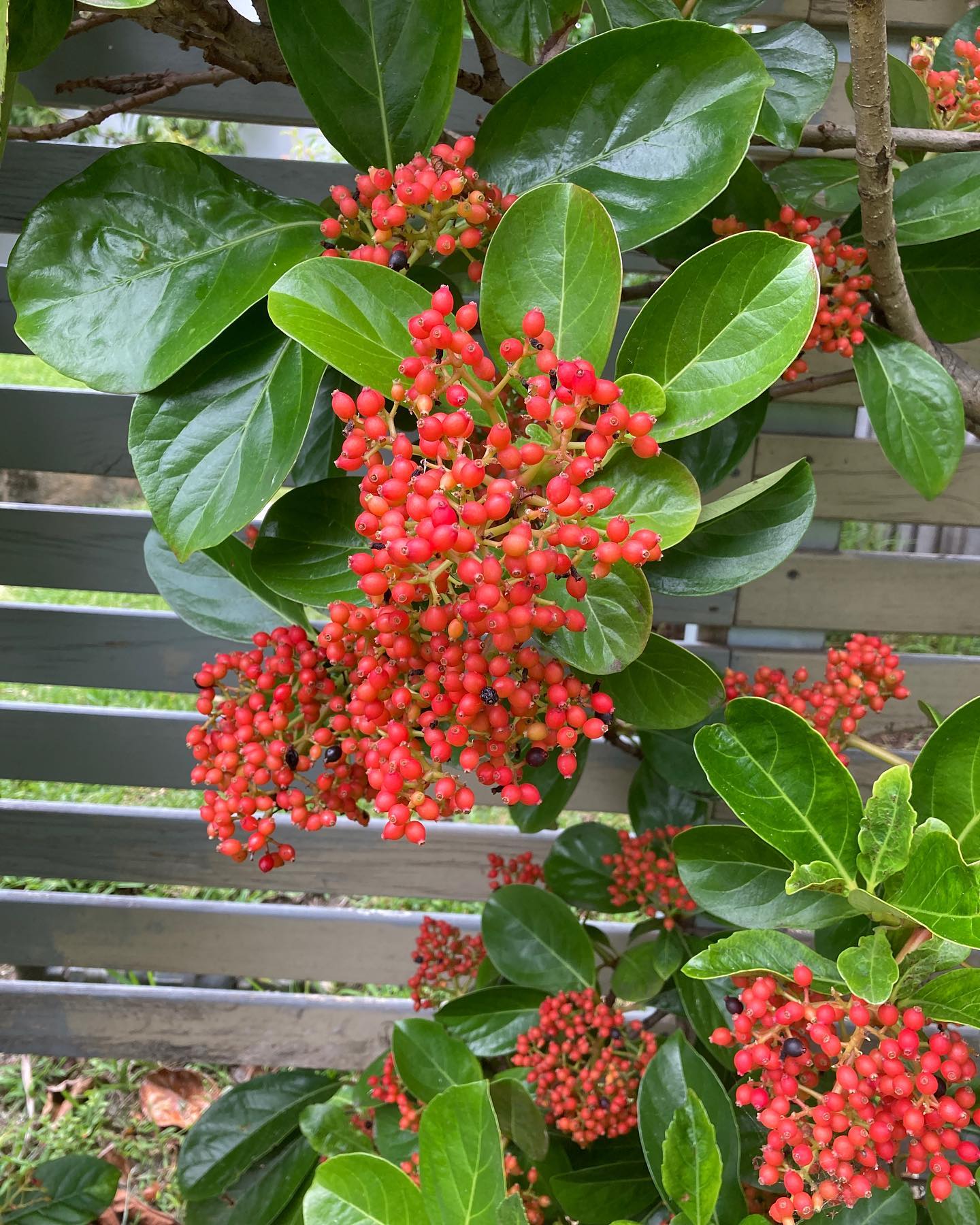
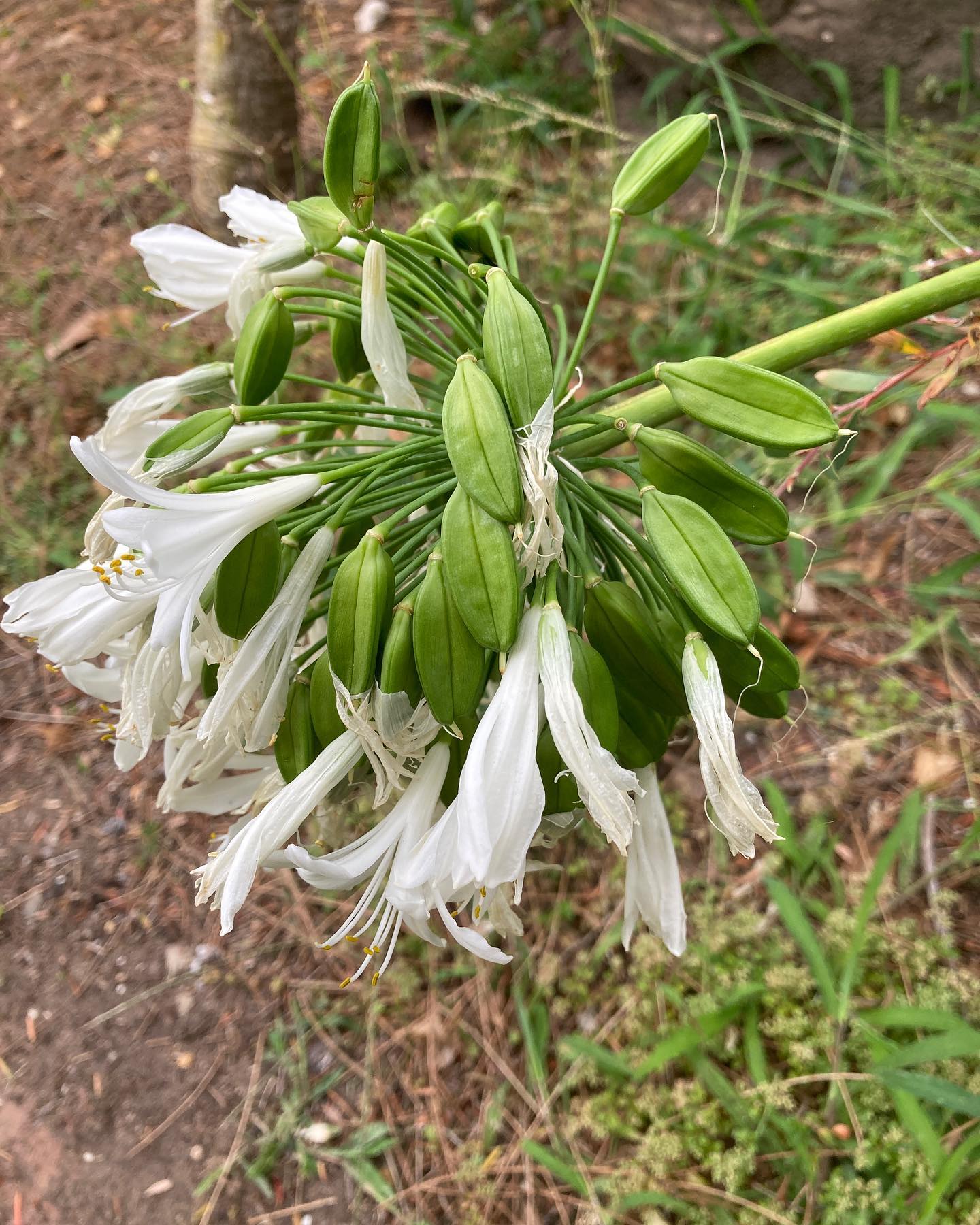
Sydney Wildlife (Sydney Metropolitan Wildlife Services): Rescue Care Course - February 2023
Our next course starts on the 4th of February. It runs for 3 weeks in a self-paced format online and then a 1 day practical session at the end on the 26th February. Both sessions must be passed to join Sydney Wildlife Rescue and rescue and care for our native wildlife.
Visit the sign on page for full details: https://smws.wildapricot.org/RCC-Trainee-Application-Form
The cost of the course is $120 and you will receive membership, manuals and equipment to help you. All new members are fully supported with a mentor when they join. Join us and make a difference to the wildlife in your area.
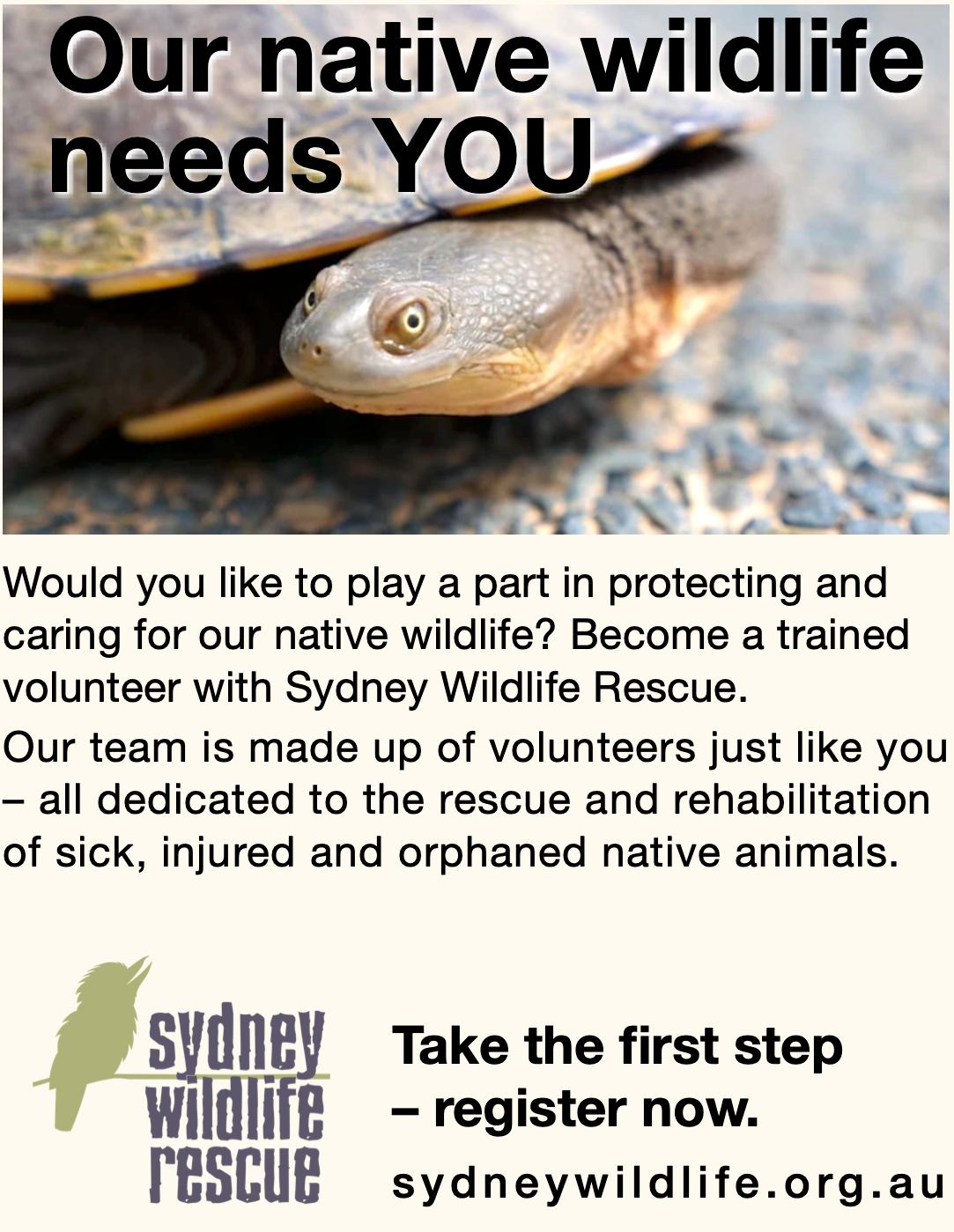
New Marine Wildlife Rescue Group Launched On The Central Coast
A new wildlife group was launched on the Central Coast on Saturday, December 10.
Marine Wildlife Rescue Central Coast (MWRCC) had its official launch at The Entrance Boat Shed at 10am.
The group comprises current and former members of ASTR, ORRCA, Sea Shepherd, Greenpeace, WIRES and Wildlife ARC, as well as vets, academics, and people from all walks of life.
Well known marine wildlife advocate and activist Cathy Gilmore is spearheading the organisation.
“We believe that it is time the Central Coast looked after its own marine wildlife, and not be under the control or directed by groups that aren’t based locally,” Gilmore said.
“We have the local knowledge and are set up to respond and help injured animals more quickly.
“This also means that donations and money fundraised will go directly into helping our local marine creatures, and not get tied up elsewhere in the state.”
The organisation plans to have rehabilitation facilities and rescue kits placed in strategic locations around the region.
MWRCC will also be in touch with Indigenous groups to learn the traditional importance of the local marine environment and its inhabitants.
“We want to work with these groups and share knowledge between us,” Gilmore said.
“This is an opportunity to help save and protect our local marine wildlife, so if you have passion and commitment, then you are more than welcome to join us.”
Marine Wildlife Rescue Central Coast has a Facebook page where you may contact members. Visit: https://www.facebook.com/profile.php?id=100076317431064
- Ph: 0478 439 965
- Email: marinewildlifecc@gmail.com
- Instagram: marinewildliferescuecc

Watch Out - Shorebirds About
.JPG.opt1460x973o0,0s1460x973.jpg?timestamp=1663629195339)
Possums In Your Roof?: Do The Right Thing

Aviaries + Possum Release Sites Needed

Bushcare In Pittwater
Where we work Which day What time
Avalon
Angophora Reserve 3rd Sunday 8:30 - 11:30am
Avalon Dunes 1st Sunday 8:30 - 11:30am
Avalon Golf Course 2nd Wednesday 3 - 5:30pm
Careel Creek 4th Saturday 8:30 - 11:30am
Toongari Reserve 3rd Saturday 9 - 12noon (8 - 11am in summer)
Bangalley Headland 2nd Sunday 9 to 12noon
Bayview
Winnererremy Bay 4th Sunday 9 to 12noon
Bilgola
North Bilgola Beach 3rd Monday 9 - 12noon
Algona Reserve 1st Saturday 9 - 12noon
Plateau Park 1st Friday 8:30 - 11:30am
Church Point
Browns Bay Reserve 1st Tuesday 9 - 12noon
McCarrs Creek Reserve Contact Bushcare Officer To be confirmed
Clareville
Old Wharf Reserve 3rd Saturday 8 - 11am
Elanora
Kundibah Reserve 4th Sunday 8:30 - 11:30am
Mona Vale
Mona Vale Beach Basin 1st Saturday 8 - 11am
Mona Vale Dunes 2nd Saturday +3rd Thursday 8:30 - 11:30am
Newport
Bungan Beach 4th Sunday 9 - 12noon
Crescent Reserve 3rd Sunday 9 - 12noon
North Newport Beach 4th Saturday 8:30 - 11:30am
Porter Reserve 2nd Saturday 8 - 11am
North Narrabeen
Irrawong Reserve 2nd Saturday 2 - 5pm
Palm Beach
North Palm Beach Dunes 3rd Saturday 9 - 12noon
Scotland Island
Catherine Park 2nd Sunday 10 - 12:30pm
Elizabeth Park 1st Saturday 9 - 12noon
Pathilda Reserve 3rd Saturday 9 - 12noon
Warriewood
Warriewood Wetlands 1st Sunday 8:30 - 11:30am
Whale Beach
Norma Park 1st Friday 9 - 12noon
Western Foreshores
Coopers Point, Elvina Bay 2nd Sunday 10 - 1pm
Rocky Point, Elvina Bay 1st Monday 9 - 12noon
Friends Of Narrabeen Lagoon Catchment Activities

Gardens And Environment Groups And Organisations In Pittwater
We’ve lost a giant: Vale Professor Will Steffen, climate science pioneer

One of Australia’s leading climate scientists, Professor Will Steffen, died on Sunday. Steffen has been hailed as a leading climate thinker, selfless mentor and gifted communicator. He is survived by his wife Carrie and daughter Sonja. Steffen’s colleagues and friends remember him here.
John Finnigan - Honorary Fellow, CSIRO
The last time I talked to Will was in early January. We had a drink or two before I left for a few weeks work in the United States. He was looking forward with optimism to an operation to get rid of the cancer he had dealt with for a year so he could get on with his life. Unfortunately, there were complications.
The world has lost an enormously influential environmental scientist. And I’ve lost a very dear friend.
Will Steffen and I were close friends for more than 40 years. I came from England to Canberra in the 1970s, and Will came from the US. At that time, it seemed like everyone in Canberra was from somewhere else. As a result, we formed a kind of family. We’d look after each other’s children, or do babysitting so the others could go cross-country skiing. Will and his wife Carrie looked after our kids and we looked after theirs.
I was a scientist at CSIRO when Will joined us as an editor and information officer. Very soon, his obvious scientific intelligence meant he was headhunted to the nascent International Geosphere Biosphere Program, an international consortium of scientists. This was the early 1980s, when the field now known as Earth system science was just taking off. Will proved enormously effective, not just as a manager but as a synthesiser and broadcaster of his group’s ideas.
Many of those ideas are now mainstream but back then, they were radical. Ideas such as the Great Acceleration – the sudden increase in our impact on the environment since the 1950s, brought about by trends such as spiking fossil fuel use, and population growth.
After Nobel laureate Paul Crutzen proposed that the world had entered a new geological epoch, the Anthropocene, Will ran with the concept. He helped popularise the idea that our collective activity is now a force as potent as natural forces in shaping our planet.
Will was also a skilled rock and ice climber who climbed mountains all over the world. In 1988 he was part of the ANU expedition which climbed Nepal’s 7,162 metre Mount Baruntse, an icy spire east of Everest. Of his climbing, Will once said:
Climbing is like science. To get up a hard rock or ice climb, just like when you’re solving a problem in the carbon cycle, you have to be ultra-focused, you have to make holistic decisions and you have to be absolutely aware of your surroundings. When you come off a big climb, you really appreciate the beauty of what’s around you. That’s the buzz you get in science when you solve a big problem and suddenly see how it all fits together.
In the best of ways, Will could also be a stubborn bugger. He refused to let things defeat him – whether on the mountain or taking on climate deniers. On the latter, he was never accommodating. And he’d never fall for their leading questions. He knew how easy it was to edit an interview to twist his words and was smart enough to insist interviews were live.
I remember one interview where he was asked if he accepted carbon dioxide was good for humanity. I might have made the mistake of saying “yes, at certain levels”. But Will knew how to avoid those traps. He said something like: “No. That’s the wrong way to think of it.” He never got boxed in.
During the decade of political climate wars in Australia, Will got a lot of abuse on social media. At one stage, his office at the Australian National University had to be locked down due to death threats. It didn’t stop him.
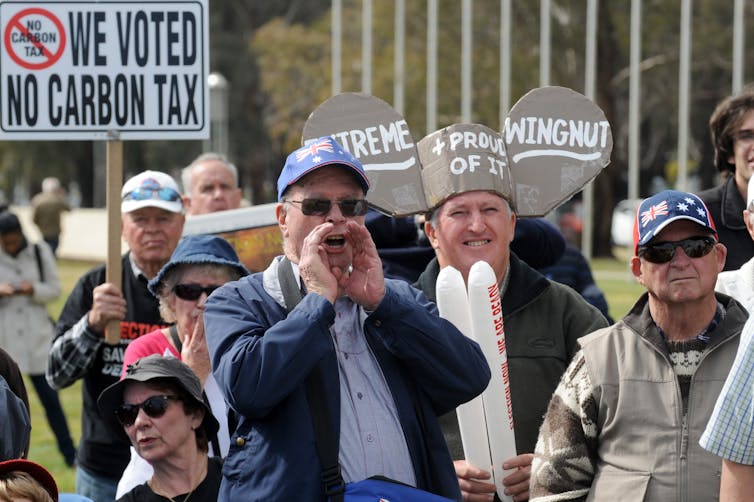
He never saw deniers or obstructionist politicians as his personal enemies. He didn’t waste his time on the negativity of climate politics. While he was angry at the way the selfish actions of vested interests were sacrificing the future of coming generations, including his daughter, Sonja, he did not despair. Instead, he channelled his anger into action.
When the Abbott government shut down the Climate Commission in 2013, Will and his colleagues – Tim Flannery, Lesley Hughes and Amanda McKenzie – didn’t just quit. Instead they crowd-sourced A$1 million in a week and founded the Climate Council, now a leading independent source of climate advice in Australia.
As well as a hugely influential scientist, Will was a really nice bloke and a true friend. He was calm, not confrontational. He had a wry sense of humour and could see the funny side, even when the climate politics were crazy.
Would he have been happy about recent efforts to speed up action on climate change? Yes and no.
He felt, as I do, that things are much further advanced and much worse than generally recognised. He felt limiting global warming to 1.5℃ was already well out of reach and that it was going to be very difficult to keep it under 2℃.
While he was heartened by recent progress, he knew it was all but impossible to change fast enough to keep warming to a safer level. But he knew we had to try.

Pep Canadell - Chief Research Scientist, CSIRO
Will Steffen took global environmental research to a whole new level.
Beginning when fax machines were the main tool to communicate across multiple time zones, Will developed unparalleled skill in scientific diplomacy and leadership. His work helped create research networks across the world involving tens of thousands of scientists.
In the 1980s, environmental research labs and individual scientists were mostly still working on their own. The new scientific networks spurred on by Will’s brokering made globally coordinated research possible. This was necessary to understand the planetary changes caused by human activity.
Will achieved this global impact through positions such as executive director of the highly influential International Geosphere Biosphere Program (IGBP). His most powerful tools were his never-ending appetite for the very latest science, his kind nature and genuine people skills, his focus and hard work ethic, and his exceptional communication abilities which let him convey the gravity of complex problems and the need for immediate action.
I came to Australia in the late 1990s to take the job Will had left when he moved to Sweden to become the director of the IGBP. I was never able to fill his shoes. But I have tried, with colleagues, to build on his work in bringing together many strands of research.
Will was a visionary in many ways. He understood the environmental problems we were trying to solve spanned many academic disciplines and were deeply interconnected. Few people had his ability to absorb so many diverse types of science and to work with the diverse research communities whose expertise was urgently needed as part of the solutions.
Steve Lade - ARC Future Fellow, Australian National University
I first encountered Will during one of his talks in Canberra. He was an incredible public speaker and a role model for how a scientific specialist could broaden themselves into a holistic thinker on the most important topics imaginable. Hearing him as a PhD student changed the direction of my career.
My scientific interactions with Will began in the mid-2010s as a researcher at the Stockholm Resilience Centre, where he was a frequent visitor. Will had recently co-developed the planetary boundaries framework, now one of the most influential ideas in sustainability science.
These boundaries show us the environment is not boundless and elastic, able to absorb all that we throw at it or take from it. Our planet has limits – and if we push too far, we will break something, leading to dramatic changes to the only life-bearing planet we know of.
Planetary boundaries are just one of his discipline-changing contributions to sustainability science - others include co-developing the concept of the Great Acceleration and promoting the concept of the Anthropocene. His ideas were grounded in his view of the Earth as a complex, interconnected, evolving system.
Viewing the world in this way helps us understand what we have done to our environment – and how to begin fixing the problems.
Will’s scientific, policy and advocacy efforts were directed at helping us recognise our role as planet-shapers. He knew we must transform our mindset from exploitation to stewardship if we, and our planet as we know it, are to survive.
His career is an exemplar of how to be an interdisciplinary, inclusive, caring and socially responsible sustainability scientist. Let us continue his legacy.![]()
John Finnigan, Leader, Complex Systems Science, CSIRO; Pep Canadell, Chief Research Scientist, Climate Science Centre, CSIRO Oceans and Atmosphere; Executive Director, Global Carbon Project, CSIRO, and Steven J Lade, Resilience researcher at Australian National University, Stockholm University
This article is republished from The Conversation under a Creative Commons license. Read the original article.
Enough with the koala cakes – the government’s annual Threatened Species Bake Off seriously neglects fish, plants and other lesser-loved species
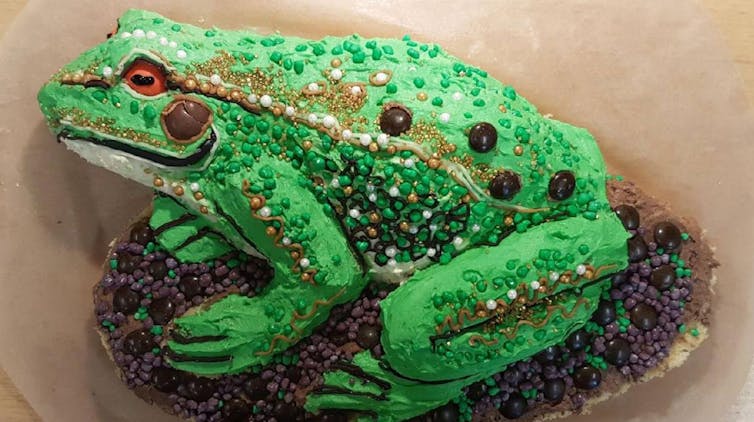
Almost 2,000 native species are officially listed as “threatened” in Australia – but how many have you actually heard of?
Each year, the federal government holds the Threatened Species Bake Off, a social media competition where entrants represent a threatened species in cake form. It aims to build awareness of Australia’s vast diversity of wildlife facing extinction – but our new research found a serious problem with bias towards cute and cuddly animals.
We trawled over 700 entries between 2017 and 2021, and found koalas, echidnas, and wombats consistently depicted. These are the typical poster children of conservation.
Koalas, for example, are frequently allocated large sums of money for conservation. Compare this to many lesser known, more impactful and at-risk species including the grey nurse shark and foundation species such as seaweeds.
Australia is a world leader in extinctions and, indeed, many at-risk plants and animals aren’t even on the official threatened species list, but should be. While the bake off is well-intentioned, our results highlight a massive gap in conservation messaging.
Unless we build the profile of our lesser-loved plants, invertebrates, frogs and fish, we’ll certainly see more species vanish.
What Species Do People Like To Bake?
The Threatened Species Bake off begins on September 7, when Facebook, Instagram, and Twitter get flooded with photos of baked goods with elaborate animal or plant designs. Since its inception in 2017, the competition has become increasingly popular and has even garnered celebrity judges including Dawn French, Costa Georgiadis and Kat Sabbath.
It reflects the urgent need to explore creative and novel ways to engage with diverse audiences about Australia’s extinction crisis. But whether it can actually makes a difference to wildlife depends on what people choose to depict.
The charts below show the top ten most popular species baked in the Threatened Species Bake Off on Instagram and Twitter since 2017. Birds and mammals have proven most popular – koalas, echidnas, orange-bellied parrots and other iconic species come out on top. The corroboree frog is the exception to this trend, topping popularity on Twitter and in the top five on Instagram.
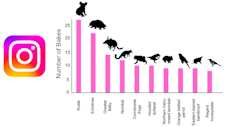
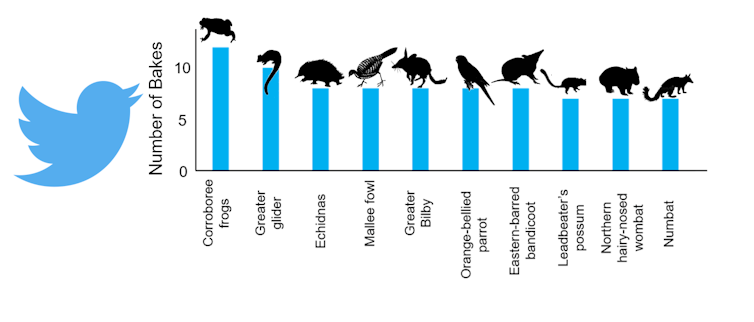
Most of the nearly 2,000 species listed as threatened by the federal government are plants – 1,411 plants compared to 562 animals. But very few contestants depict plants in the Threatened Species Bake Off. Just 3% of the listed threatened plants have been depicted, compared to 40% of the listed mammals and 30% of the listed birds.
This highlights a global issue with “plant blindness” – a phenomenon where plants are frequently forgotten when considering the nature in an area, leading to limited interest and funding for their conservation.
In fact, many of the species in the Albanese government’s 2022-2032 Threatened Species Action Plan are birds and mammals – species considered much more charismatic than a plant or invertebrate. The action plan includes 14% of threatened mammals and 13% of threatened birds – and just 2% of threatened plants.
What The Bake Off Revealed About Conservation Gaps
This brings us to Australia’s invertebrates – the bedrock of ecosystems. We found 50% of invertebrates on the official threatened species list were featured in bake offs (that’s 34 of 68 listed species).
This prevalence, however, is misleading. It masks one of the most significant deficiencies in threatened species management: the lack of invertebrates on threatened species lists. In fact, invertebrates are simply classified as “other animals” under Australia’s threatened species legislation.
Their relative absence from lists of protected groups highlights two major gaps in our knowledge:
many invertebrates are yet to be scientifically described and named – the key entry point to being included on these lists
we know very little about most invertebrates that have been scientifically described and named – we know only where they were found.
To adequately conserve Australia’s biodiversity, we need to urgently prioritise research on such crucial animals.
Social Media Can Help And Hamper Conservation
The bake off’s popularity shows social media can be powerful conservation messaging tool. But promoting conservation via social media walks a fine line between protecting and endangering threatened species.
For example, a social media post of a scenic location inhabited by threatened species may drive increased tourism to the location, adding more pressure to the species and its habitat. Indeed, a study in 2019 drew potential links between the rise in videos posted to YouTube of otters as pets with an increase in illegal otter trade.
On the other hand, the use of social media has led to great success in controlling populations of the invasive Indo-Pacific lionfish in the Western Atlantic and Caribbean.
To reduce populations, the Florida Fish and Wildlife Conservation Commission has held fishing tournaments since 2014, advertising via social media. The event has evolved into a multi-day festival with art booths, lionfish tastings, and filet demonstration.
What these examples and the bake off shows is the need for a tailored approach for each conservation message.
But so far, the conservation message of the bake off is not clear given people have baked species that aren’t even listed as threatened such as the platypus, brolga, and Mount Lewis spiny crawfish, as well as species that aren’t even Australian, such as tigers and pandas.
Try Something Different This Bake Off
We need to find ways to ensure all species, not just koalas, are on the receiving end of conservation action. Here are some ways we can encourage this.
First is to increase their visibility by providing images of threatened species. For example, researchers and nature enthusiasts could make their images free to use on websites such as Wikimedia Commons. Or, they could upload images to iNaturalist or Atlas of Living Australia, two websites that catalogue the sightings of species submitted by researchers and the public.
Giving newly discovered species interesting or funny names can also create emotional connections, encouraging people to care more about them – like the Amazonian Agra beetle species, which include names such as Agra vation and Agra cadabra, or the Australian wasp species Aha ha.
Previous bake offs have incorporated themes including “species I’ve seen” and “ecosystem engineers”. Organisers should introduce a new theme: “species I’ve never heard of”, or “the species under my feet”.
So next bake off, how about baking a small-flowered snottygobble , a Kangaroo Island Assassin Spider, a red handfish, or a cauliflower soft coral?![]()
Eliza Middleton, Biodiversity Management Officer, University of Sydney; Caitlyn Forster, Associate Lecturer, School of Life and Environmental Sciences, University of Sydney, and Dieter Hochuli, Professor, School of Life and Environmental Sciences, University of Sydney
This article is republished from The Conversation under a Creative Commons license. Read the original article.
Why Queensland is still ground zero for Australian deforestation
Michelle Ward, The University of Queensland and James Watson, The University of QueenslandFive years ago, bulldozers with chains cleared forests and woodlands almost triple the size of the Australian Capital Territory in a single year.
Brazil? Indonesia? No – much closer: Queensland. In 2018-19, truly staggering land clearing, mostly by farmers and cattle graziers, saw around 680,000 hectares of habitat destroyed – more than the preceding 18 years. Even though the state Labor government tightened land clearing rules in 2015, the new rules were riddled with loopholes. If Queensland was a country, it would have been the ninth highest forest destroying nation globally in 2019 – just above China.
Clearing is slowing – but nowhere near fast enough. At the end of 2022, Queensland quietly released its latest figures, showing clearing rates in 2019-20 had fallen to under two Australian Capital Territories that year (around 418,000 hectares). The government celebrated it as a win, as did some farming groups. But it’s nothing to be celebrated.
Yes, it’s better than the worst year in the last two decades. But as our climate and extinction crises worsen and as the Great Barrier Reef teeters on the brink, clearing as usual is no longer good enough.
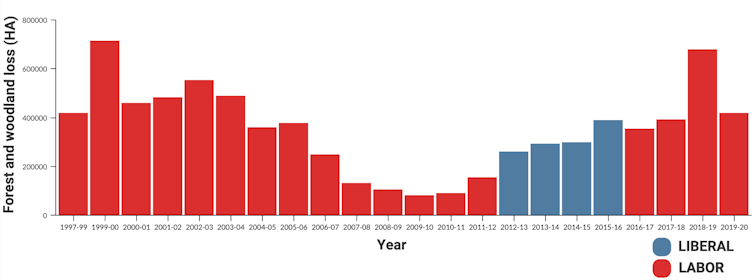
Why Is Queensland Still Clearing So Much – And Why Does It Matter?
In a word, beef. Like Brazil, Queensland tears down its forests and woodlands largely to make way for grass to feed livestock – mainly cattle. The latest 2019-20 figures show 85% of all clearing was done to create new pasture.
You might have heard defenders of land clearing claiming the land being cleared is home to low-value vegetation or trees that regrow easily, such as mulga acacia. This is not true. About 52% of all vegetation cleared in 2019-20 was classified as old growth or older than 15 years. The Brigalow Belt and the Mulga Lands accounted for three-quarters of all clearing. Of the clearing in these regions, 80% was full clearing, meaning bulldozing turned forests or woodlands into areas with less than 10% canopy remaining.
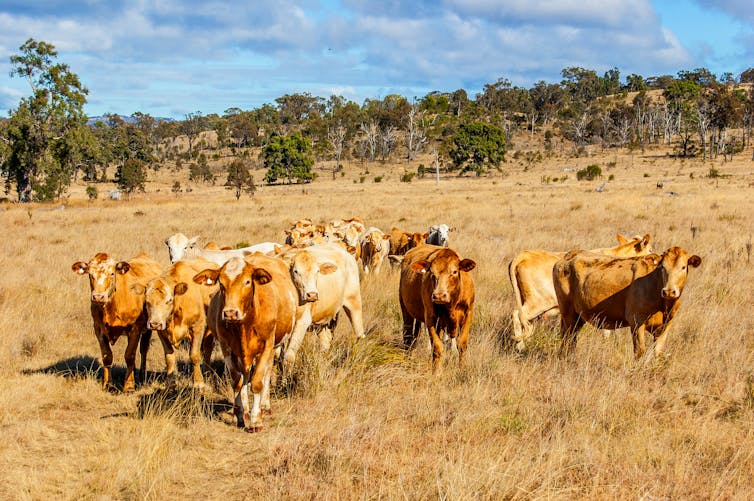
This matters, because Queenslanders are the custodians of more biodiversity than any other Australian state, most of which is found in its woodlands and forests.
Queensland’s thousands of unique plant species provide homes and resources for many of Australia’s famous animals. More than 1,800 species of Australian plants and animals are now threatened with extinction – and Queensland’s land clearing is a key threat for many.
It can be hard to connect bulldozers clearing trees and the reality of what it does to the animals relying on them. So we cross-referenced the cleared land with threatened species distribution maps. Approximately 417 threatened species lost some of their habitat, with the worst hit including grey falcon, the newly endangered koala, and squatter pigeon. The clearing is a double blow, as many of these species were devastated by the Black Summer fires.
This large scale destruction also hampers Australia’s ability to meet climate targets. The agriculture, forestry and other land use sector on average, accounted for almost a quarter (23%) of the world’s human-caused emissions. Of these, 45% were from deforestation.
If we leave woodlands and forests intact, they look after our interests too. They improve water quality and availability for our uses and for nature. They control erosion by protecting soils and riverbanks. And they increase the productivity of nearby cropland by hosting pollinators and species which prey on plant pests. Ripping out the forests and woodlands not only reduces the carbon they sequester but also makes the ground immediately warmer, making many parts of Queensland even hotter and more drought prone.
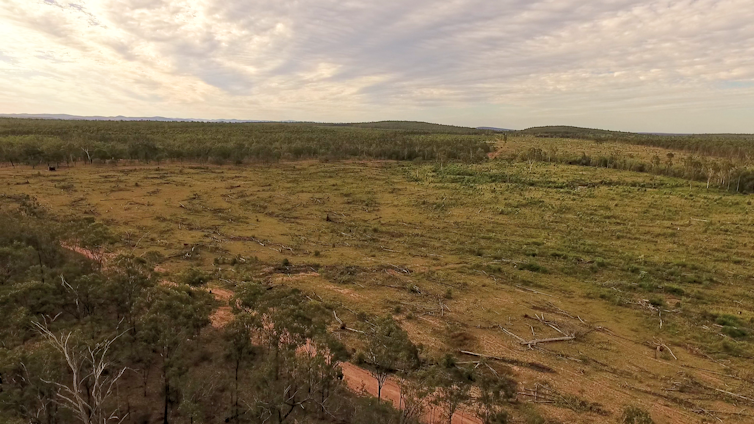
Destroying old, biologically important woodland and forests at such scale is a terrible idea. It flies in the face of global pledges to end deforestation and maintain the integrity of all of Earth’s ecosystems. Australia is a signatory to both of these.
Cynics might wonder whether the rush to clear pasture is linked to the fact many of our trading partners are looking to import beef not linked to deforestation. In December, the European Union passed laws requiring beef exporters to show their operations haven’t contributed to deforestation. Cattle must not have been raised on land cleared after December 2020. Though the EU is not the largest beef market for Australian farmers, the National Farmers Federation reacted angrily.
Even in Australia, huge companies such as Woolworths and McDonalds have committed to remove deforestation from their supply chains.
Some companies are doing the right thing, but the sheer scale of felling and clearing shows many are not. Both the Queensland and federal governments must fix the problem with better regulation and adequate enforcement, access to data to demonstrate deforestation-free credentials, and incentives for producers to improve their land use to the emerging global standards. In the age of ubiquitous satellite imagery, it’s impossible to hide what you’re doing. One option could be to make the deforestation images publicly available in real time.
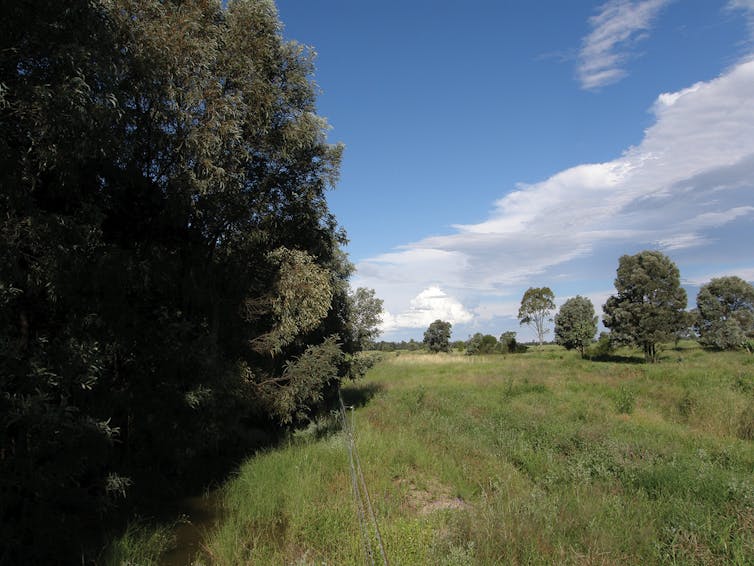
Labor Has Pledged Action Federally – But The State Labor Government Must Do More
There’s a strange disconnect developing where Labor, federally, has signalled they want to reverse Australia’s biodiversity crisis, while at state level, their actions are nowhere near enough. Federal Labor recently signed national and international commitments aimed at halting species extinctions, reversing biodiversity loss, and stopping further land degradation. For that to actually happen, though, it will need the states to play ball – especially Queensland.
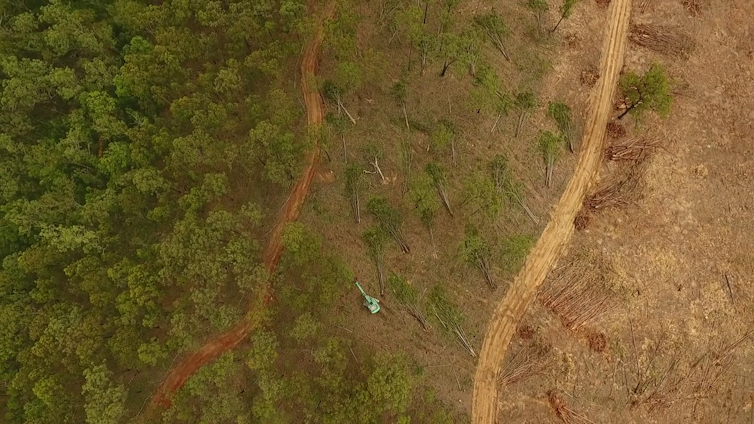
Why is Queensland ground-zero for deforestation in Australia? It has water, arable land, and a decentralised population often reliant on farming or mining work outside the major cities. Sugarcane plantations, mango farms, beef cattle, dairy, bananas – it’s hard to shift a long-set path.
But if the state government is unable to close the obvious loopholes such as Queensland’s questionable land clearing Category X and stop rampant land clearing, the environmental, social and economic bill will come due. Extinctions, coral death, climate damages, degraded human health and the reputational risk of becoming a pariah.
It doesn’t have to be that way. By working with farmers and graziers, they can end the policy ping-pong with laws to encourage all food producers to shift to deforestation-free produce. We can get there. ![]()
Michelle Ward, Postdoctoral research fellow, The University of Queensland and James Watson, Professor, The University of Queensland
This article is republished from The Conversation under a Creative Commons license. Read the original article.
Losing the natural world comes with major risks for your super fund and bank
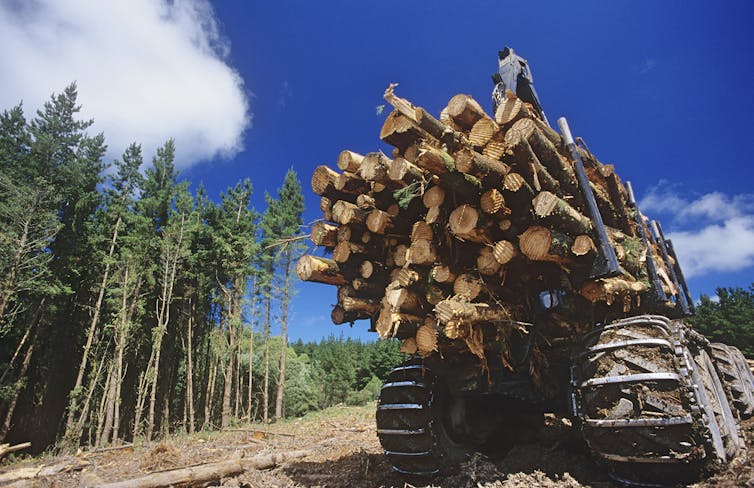
As the economist Herman Daly pithily said, the economy is a wholly owned subsidiary of the environment – not the reverse. Nature makes our lives possible through what scientists call ecosystem services. Think healthy food, clean water, feed for livestock, building materials, medicine, flood and storm control, recreation, and attractions for tourists.
Despite this, Australian businesses and financial institutions have so far failed to track how their activities both rely on and affect nature. This means our investments and superannuation could be exposed to hidden financial risks because of nature loss – and may also contribute to the destruction of nature.
That’s set to change. The private sector is waking up to nature’s value (and the risks of losing it). The world’s biodiversity rescue plan agreed to last year could help motivate governments and businesses to clean up their investments by directing more money to protect nature and less towards bankrolling extinction.
There’s one crucial plank we’re missing though – mandatory reporting of how businesses both depend on and impact nature.
Nature And Financial Health Are Inextricably Linked
Fully half of the world’s total economic activity – around A$61 trillion – is moderately or highly dependent on nature and its services.
In Australia, that figure is very similar: around half of our GDP – $896 billion – has a moderate to very high direct dependence on ecosystem services provided by nature.
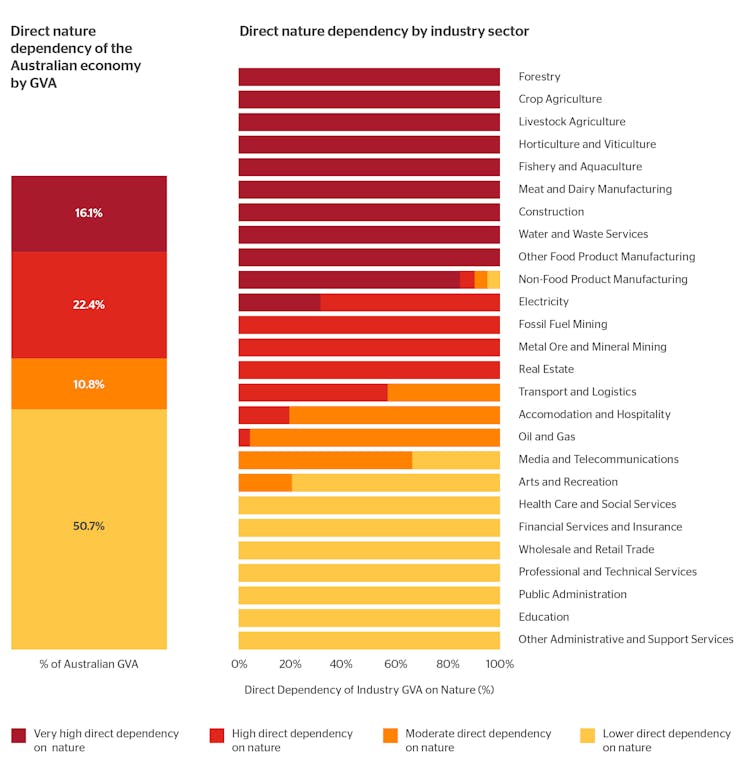
What happens when we breach nature’s limits? Ecosystem services seize up or collapse, eventually disrupting these sectors. The tireless pollination work of honeybees, for instance, is valued at $14 billion a year. Or take Australia’s wheatbelt, where poor soil health is now costing farmers almost $2 billion a year in lost income.
Ecosystem services are not hypothetical. They have real value – and we will absolutely notice if they are gone.
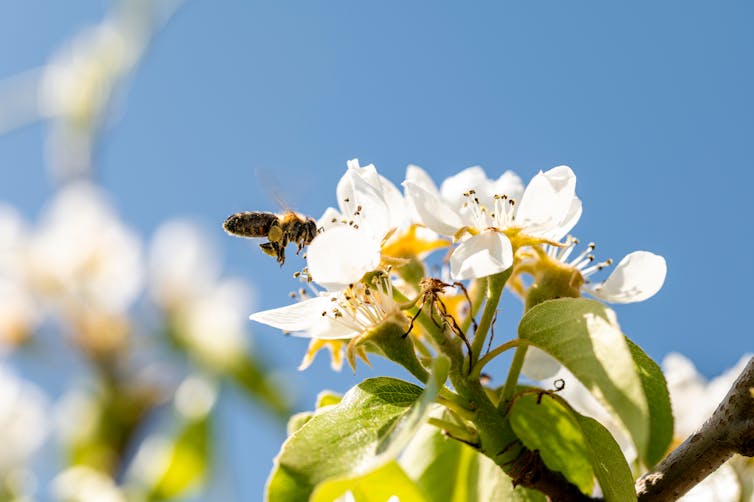
What Does This Have To Do With My Super?
Australia’s super sector is responsible for the retirement savings of around 12 million Australians. Super funds are directly exposed to financial risk from nature loss through their investment portfolios.
Just as farmers can’t grow crops without healthy soils or pollinators, developers can’t build apartments without timber or environmental permits. In turn, that has implications for their value as investments.
And because so many sectors are exposed, classic investment strategies such as diversification may no longer protect your super from losses.
So what are our super funds and banks doing about it?
To find out, we surveyed ten super funds and ten retail banks about their responses to nature-related risks. The survey – commissioned by the Australian Conservation Foundation – is the first time this has been done in Australia.
The findings? Not ideal. Every participating super fund and bank agreed the loss of nature now presented a serious risk to investment returns. They all agreed it was part of their responsibility to members and customers to measure and manage these risks. But only 20% of super funds and 10% of banks had attempted to assess how exposed they were.
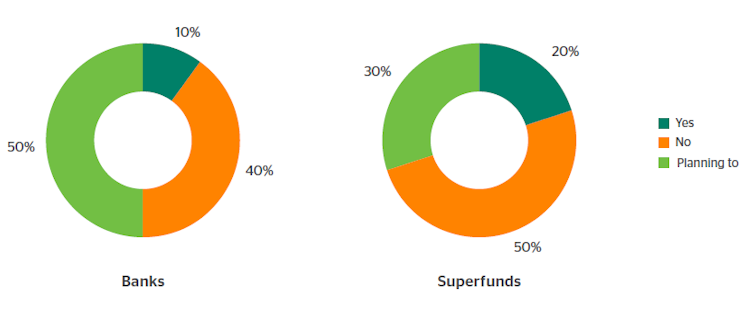
Again, this is not abstract. Super funds often have large holdings in the big four banks. Together, these banks have $170 billion in exposure to agriculture, mining, fisheries, and forestry – sectors directly reliant on a functioning natural world.
So why isn’t it a higher priority? One issue may be that many financial institutions are currently focused on climate change, given how rapidly impacts are mounting. But climate change and the breakdown of natural systems are twin crises. Nature offers far and away the largest method of taking carbon back out of the atmosphere, for instance. But that only works if salt marshes and wetlands and forests are intact.
Net zero targets for our banks and super funds are not fully credible unless there is a commitment to end the financing of deforestation. Only one organisation, Australian Ethical, had made such a commitment.
You would think Australia’s super funds and banks would be interested to find out how exposed their investments were to this growing risk. Tools to do this such as IBAT and ENCORE are readily available.
But to date, our survey findings don’t indicate banks and funds will do this voluntarily.
Banks And Super Funds May Soon Have To Report These Risks
The biodiversity rescue plan agreed to last year – known as the Kunming-Montreal agreement – is intended to set expectations for responsible finance and business globally, as the Paris Agreement did for climate change.
That means Australia will be expected to introduce disclosure requirements. If this comes to pass, banks, super funds, and the businesses they invest our savings in will have to measure and publicly report their impact on nature – as well as how much they rely on nature to make a profit.
First, though, the Australian government must introduce mandatory nature risk reporting. It’s already moving ahead with plans to make climate risk disclosures mandatory.
Treasurer Jim Chalmers has indicated nature is also on his radar.
The question then will be whether making this information public will actually do what we hope it will and use money to help natural systems rather than extract from them.

What Happens Next?
Since taking office, the Labor government has pledged to take action on the perilous decline of the natural world with plans such as bringing the value of nature into our national accounts.
While positive, the real action won’t happen until nature risk reporting is mandatory, environment laws with teeth are introduced, and until both governments and private industry direct serious money into helping nature, not harming it. Risky nature credit markets aren’t going to cut the mustard.
You don’t have to sit back and wait. Why not ask your super fund and bank what nature-related risks they are exposing your money to? ![]()
Madeline Combe, Doctoral student, University of Technology Sydney; Megan C Evans, Senior Lecturer and ARC DECRA Fellow, UNSW Sydney, and Nathaniel Pelle, Honorary Associate, Sydney Environment Institute, University of Sydney
This article is republished from The Conversation under a Creative Commons license. Read the original article.
Win-win: how solar farms can double as havens for our wildlife
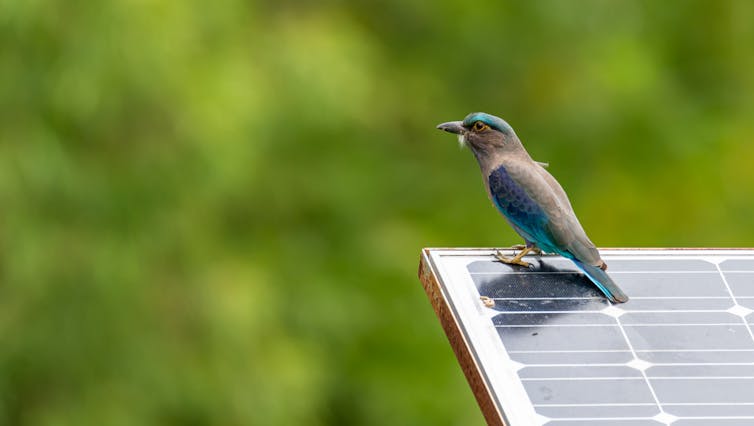
Australia’s renewable energy transition has prompted the construction of dozens of large-scale solar farms. The boom helps reduce Australia’s reliance on fossil fuels, but requires large areas of land to be converted to host solar infrastructure.
Solar farms are mostly built in rural areas. This has raised concerns about a potential decline in both agricultural production – as arable land is used for solar energy production – and wildlife habitat.
But there are ways to expand solar infrastructure so both nature and people win. We’ve already seen this in so called “agrivoltaics”, where land under and around solar panels is used to grow crops and graze livestock. But what about “conservoltaics”, combing conservation and solar energy?
My new research examines whether solar farms could also be used to help conserve native species. I found solar panels can provide valuable habitat for wildlife – and potentially benefit both the land and farmers.
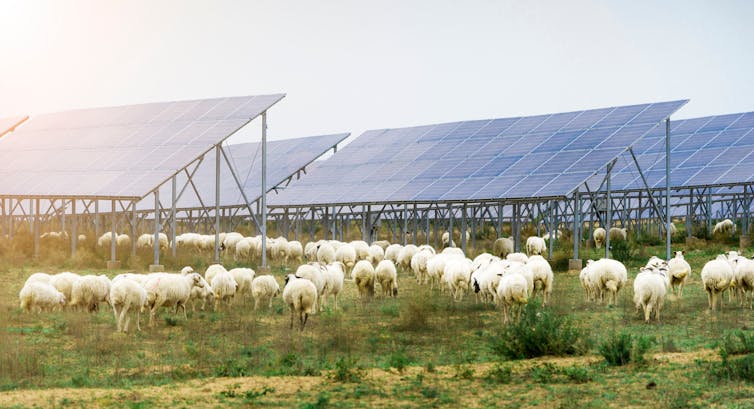
A New Place To Call Home
Our wild landscapes are diminishing and protected areas, such as national parks, cover only about 9% of Australia.
Many agricultural landscapes have been cleared of trees to provide pasture for livestock. It means wildlife that rely on trees have lost vast tracts of habitat.
So we must find new places for wildlife to forage, rest, shelter and breed.
My work examines how solar parks on agricultural land can double as wildlife habitat. It involves surveys and trapping to identify what plants and animals occupy solar farms, how long they take to recolonise, and how we can promote even more biodiversity.
My new paper coins a new term for this dual land-use: conservoltaics. I highlight research from overseas into how solar parks can bring conservation benefits, and describe the research still needed.
Solar panels add three-dimensional structure and complexity to an environment. They can provide animals shelter from predators and the elements, much like artificial reefs in lakes and oceans. They can also act as perch or nesting structures.
Solar infrastructure also creates a mosaic of sun and shade patches – and so provide many “micro-habitats” for plants and animals.
Research from Europe has shown large solar farms can enhance the diversity and abundance of plants, grasses, butterflies, bees and birds.
What’s more, vegetation between solar panel rows can also provide travel corridors, nesting sites and shelter for wildlife.

Management Is Key
Research suggests several management strategies that can maximise the benefits of solar farms for wildlife.
Land managers should provide a diverse mix of flowering plant species to encourage pollinators. And grass between solar panels should not be mowed too short or too often. Pollinators prefer tall vegetation where they can forage – though vegetation should not be so tall that it shades the solar panels.
The use of herbicides and other chemicals should be avoided where possible. And solar farms should be connected to other vegetated areas, using features such as hedgerows and wildflower strips, so wildlife can move between the solar farm and other habitats.
Landholders who combine solar farms with wildlife habitat may reap several benefits.
They could receive financial returns by earning environmental credits through schemes that reward carbon sequestration and biodiversity improvements.
They may also improve the health of their land by, for example, increasing pollination or providing habitat for predators such as raptor perches or nest boxes – which in turn could help control pests.
Much work remains, however, to understand these opportunities.
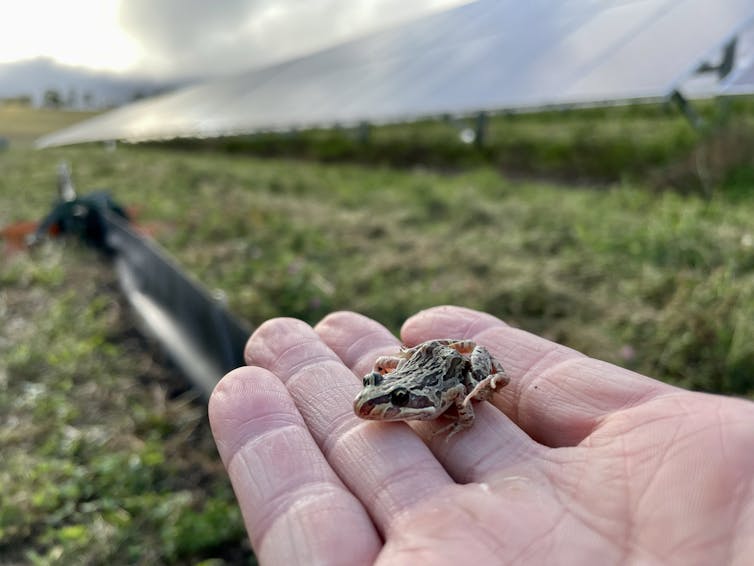
Looking Ahead
The benefit of renewable energy in reducing carbon emissions is well known. But more work is needed to understand how solar farms can benefit wildlife.
Research is also lacking on how to locate, configure and manage solar farms to best enhance biodiversity. Collaboration between industry, land managers and researchers is needed so clean energy production and conservation can go hand-in-hand.![]()
Eric Nordberg, Senior Lecturer (Applied Ecology and Landscape Management), University of New England
This article is republished from The Conversation under a Creative Commons license. Read the original article.
Planting more trees could reduce premature deaths in European cities by a third – new research
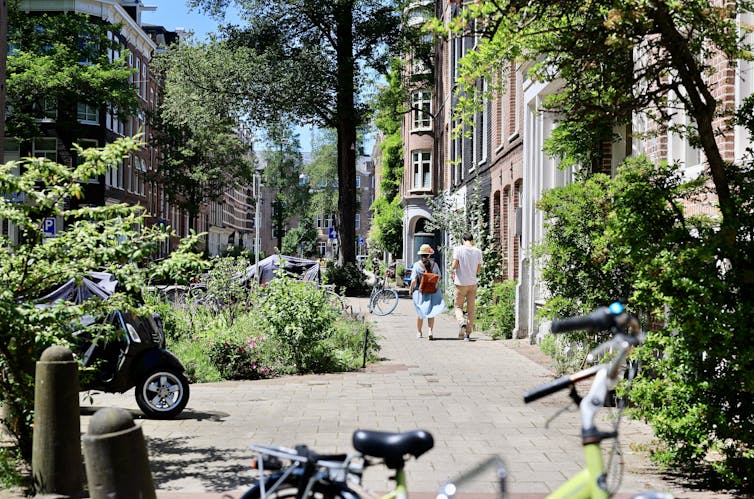
Urban development leads to fewer shaded areas and more heat-absorbing paved surfaces. Cities tend to be warmer than their rural surroundings as a result, a phenomenon known as the urban heat island (UHI) effect. During the summer daytime, cities can be up to 12℃ hotter than rural areas.
UHIs are a major environmental hazard for urban dwellers. Research suggests that for each 1℃ rise in temperature, the risk of death increases by between 1% and 3%. Heat exposure also increases the risk of suffering cardiovascular and respiratory illnesses.
Our research calculated the death rates of urban inhabitants across 93 European cities (57 million people in total) between June and August 2015. We found that 6,700 premature deaths during this period were linked to UHIs.
But the pace of global warming is accelerating and 2–3 billion people are expected to live in cities by 2050. The health impacts of UHIs will likely worsen in the coming years.
Several strategies exist to protect urban residents from the impacts of heat. These include covering roofs and facades in vegetation (green roofs), decorating them in lighter colours, and replacing paved surfaces with areas of vegetation. Our modelling revealed that one-third (2,644) of UHI deaths in Europe could be prevented by increasing tree canopy cover to 30% in every urban neighbourhood.
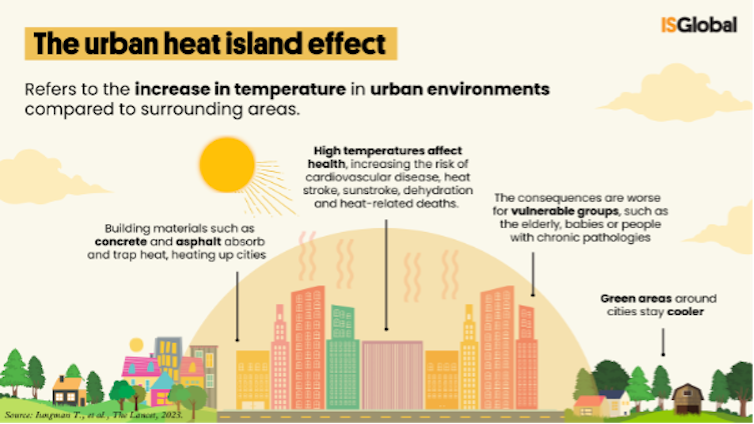
Urban Tree Guidelines
This target was established last year by a study published in the Journal of Forestry Research. Since then it has been adopted by several cities worldwide, including Barcelona (Spain), Bristol (UK), Philadelphia (US), Canberra (Australia) and Seattle (US).
Urban forests regulate a city’s microclimates effectively. Research found that urban forests cooled the average temperature of 601 European cities by 1.1°C and by as much as 2.9°C.
Leafy neighbourhoods are also linked to improved mental and physical health. In California, a 10% increase in neighbourhood tree cover has been associated with a 19% reduction in rates of obesity and type 2 diabetes.
Surrounding greenness, particularly greenness at schools, can be important in the cognitive development of children. Cognitive testing of schoolchildren in Barcelona revealed a 6% better working memory development in children at schools with the highest levels of greenness compared to those at the least-green schools.
More Trees Means Less Heat
We found substantial variation in UHI death rates across European cities. In 2015, Gothenburg in Sweden recorded no premature UHI deaths, while urban heat was responsible for 32 premature deaths per 100,000 people in the Romanian city Cluj-Napoca.
The cities with the highest UHI death rates were in southern and eastern Europe. Most of these cities generally had low tree coverage and recorded the highest UHI effect.
Just 3.3% of Thessaloniki in Greece is covered by trees, resulting in urban temperatures 2.8℃ higher than the surrounding area. By contrast, 27% of Gothenburg is covered by trees, delivering an UHI effect of just 0.4℃.
Overall, southern European cities will benefit most from increasing their tree cover. Our model estimates that Barcelona could reduce its UHI death rate by 60% by meeting the 30% tree coverage target.

The Way Forward
But the intensity of the UHI effect depends on multiple factors and is specific to each city. While vegetation cover influences urban temperatures during the day, nighttime temperatures are driven by the height of the urban canyon.
The cooling capacity of a tree canopy also varies. This depends on the type and size of trees, which are themselves contingent on the city’s natural climate and the degree to which trees are maintained.
Drier climates, like Thessaloniki, favour smaller trees that have fewer leaves. By contrast, Gothenburg’s cooler and wetter climate favours larger and leafier trees that provide better protection from daytime heat.
Due to this variation, we built a tool called the Cooling Efforts Index. The index assesses how much cooling can be achieved in each city for every 1% increase in tree cover. We also generated high-resolution maps for each city to identify the areas where tree coverage is needed most urgently.
In some cities, the majority of urban forests will grow on private land. Tree planting programmes must therefore encourage residents to plant trees.
In Victoria, a city on Canada’s western coast, neighbourhoods are offered a CAD$1,000 (£610) grant to plant residential trees. So far, over 78 trees have been planted on private property across the city.
Space can also be a major constraint in compact urban areas. So increasing tree cover to 30% may be challenging for some European cities.
But each city can adapt this target to its local context. For example, a lower tree canopy target can be combined with alternative measures like green roofs in compact urban areas.
Terrace roofs account for 67% of Barcelona’s roof surface area. As the city’s urban population continues to rise, the city council has launched a guide to transform roofs into areas with partial or total plant cover. The guide sets out the social and environmental benefits of green roofs and offers advice for choosing the right kind of terrace roof for the building.

Incorporating urban green infrastructure into cities should make them more resilient to climate change. But planting trees may not be enough. Tree growth is a long processes and around half of newly-planted trees die within two years. Preserving existing trees and complementing tree planting schemes with other measures that reduce the intensity of UHIs, such as reducing car use, are similarly important.
Urban trees provide substantial public health and environmental benefits. Our study suggests that by increasing tree coverage, premature UHI deaths in European cities can be reduced. But for the resilience of cities to increase, it remains important to combine greater tree coverage with other urban green infrastructure.

Don’t have time to read about climate change as much as you’d like?
Get a weekly roundup in your inbox instead. Every Wednesday, The Conversation’s environment editor writes Imagine, a short email that goes a little deeper into just one climate issue. Join the 10,000+ readers who’ve subscribed so far.![]()
Meelan Thondoo, Research Associate, University of Cambridge; Mark Nieuwenhuijsen, Research Professor ISGlobal Barcelona and Professorial Fellow, ACU Melbourne, Australian Catholic University, and Tamara Iungman, PhD researcher, Barcelona Institute for Global Health (ISGlobal)
This article is republished from The Conversation under a Creative Commons license. Read the original article.
It’s hot, and your local river looks enticing. But is too germy for swimming?
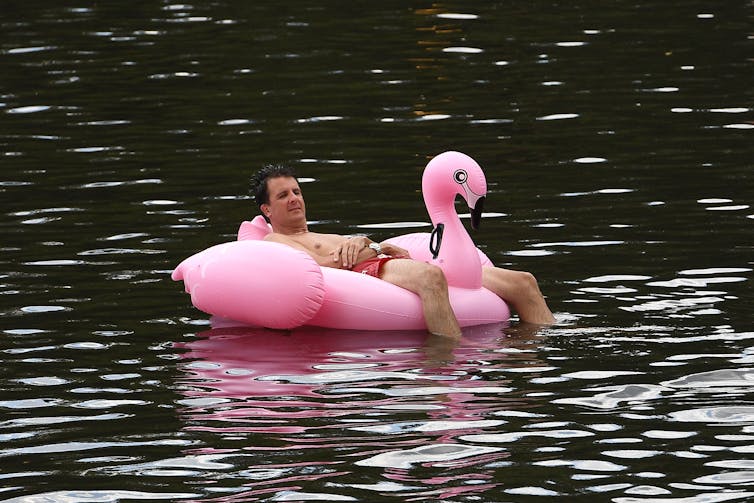
Swimming in rivers, creeks and lakes can be a fun way to cool off in summer. But contamination in natural waterways can pose a risk to human health.
Waterborne pathogens can cause acute gastrointestinal illnesses such as diarrhea and vomiting. Other common illnesses include skin rashes, respiratory problems, and eye and ear infections.
Unfortunately, it can be hard to find out if a waterway in Australia is safe for recreation. By contrast, a comprehensive system in Aotearoa-New Zealand, called Can I Swim Here?, provides timely water quality information for 800 beach, river and lake sites.
We have investigated the benefits and barriers associated with opening up waterways for recreation. Unsurprisingly, ensuring a local swimming site is safe is key to getting people using it. That includes giving people access to accurate information about water quality.
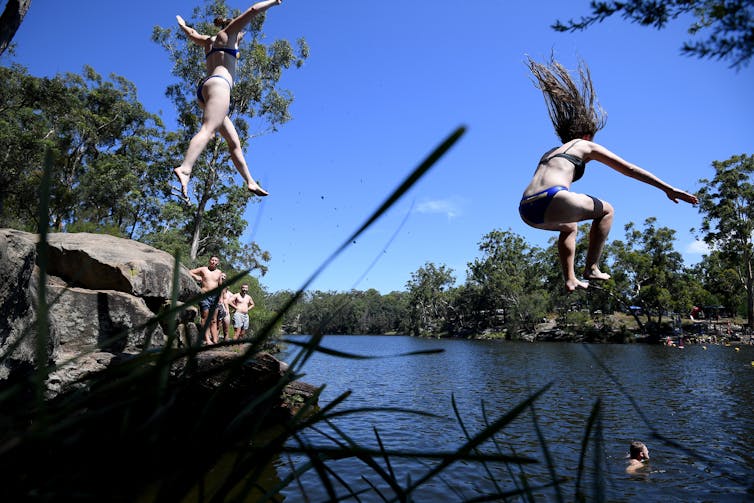
Can Swimming Really Make You Sick?
Contaminated water can exist in swimming pools and spas, as well as oceans, lakes, and rivers, exposing humans to a range of pathogens.
According to official advice in New South Wales, common waterborne pathogens include:
enteric bacteria such as Escherichia coli (E.coli) or Enterococci, that live in the intestinal tracts of all warm-blooded animals and can enter water as faecal matter (or poo). They can cause gastroenteritis, skin and ear infections and dysentery
viruses such as noroviruses and hepatitis. They can cause diarrhoea, vomiting, hepatitis and respiratory disease
protozoa such as giardia which, once ingested, can live as parasites in humans and animals and cause diarrhoea.
Australian research has documented a link between gastroeneritis and people swimming in public pools and freshwater sites such as rivers, lakes and dams.
Other water quality hazards for swimming include toxic blue-green algae and exposure to chemical pollutants.
Recent floods in Australia have led to an elevated risk of water contamination. As others have noted, flood waters can be highly polluted with disease-causing organisms, including from sewerage overflows.
So how do swimming locations get contaminated? Pollution can come from untreated sewage, or runoff containing animal poo or fertilisers. The source could be chemicals from nearby industrial activities, or the water users themselves.
Thankfully, most disease outbreaks from swimming are not fatal. An exception is the amoeba Naegleria fowleri. It lives in warmer waters and can cause amoebic meningitis, a potentially fatal brain disease.
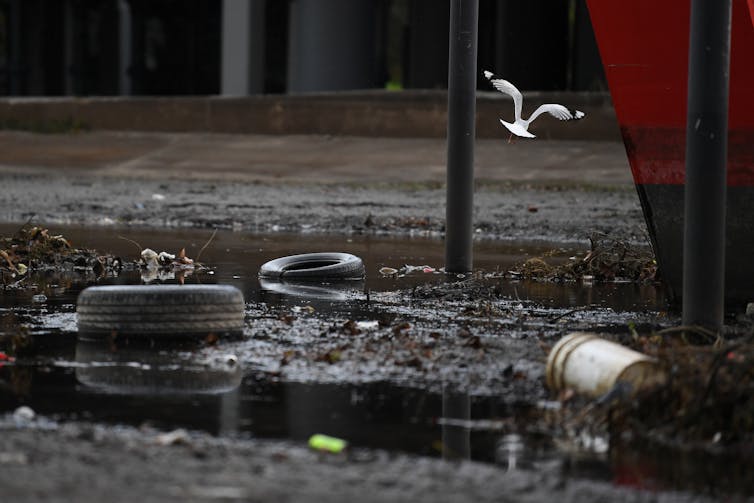
How Safe Is Your Local Swimming Hole?
In Australia, guidance on recreational water quality tends to focus on ocean beaches. For example, NSW’s Beachwatch program cover more than 200 NSW coastal (and some estuary) beaches. The advice is based on likelihood of rain combined with testing swimming sites for faecal bacteria.
The Victorian government also provides coastal swimming guidance for 36 beaches in Port Phillip Bay.
But away from the coast, information on the water quality of our local rivers, creeks and lakes, is sparse.
In NSW, advice exists for swimming and boating at four sites on the Nepean River in Western Sydney. Information is provided for a recently reopened swimming site at Lake Parramatta and for swimming at some Blue Mountains sites.
In Victoria, the Yarra Watch program monitors four swimming sites in freshwater stretches of the Yarra River, upstream of Melbourne.
And authorities in Canberra provide regular water quality monitoring and swimming advice for lakes and rivers.
But in contrast to Australia, New Zealand provides far more detailed and broad guidance.
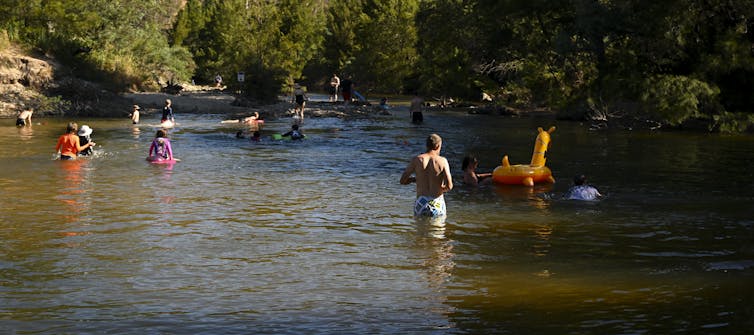
How New Zealand Does It
New Zealand’s world-leading national program Can I swim here? enables people to find the best places to swim across 800 beach, river and lake sites across the country.
The advice is provided by LAWA (Land, Air, Water Aotearoa), a collaboration between regional councils, the New Zealand government, scientific experts and academics, and a philanthropist organisation.
The data available includes both the latest weekly water quality test results, and results dating back five years.
The guidance also includes an interactive map (see below) where users can zoom to swimming sites in their region.

More Work Is Needed
Everyone loves to be around, on and in the water, especially during summer. As well as providing a way to cool down, local swimming holes are great places for people to socialise, exercise and engage with nature – especially for those not near a beach.
Governments are recognising the real opportunity to open up underused waterways for recreation across Australia. But for the sake of our communities, more work is needed on improving water quality and sharing information.
Australia has a lot to learn from New Zealand and other countries on how to manage our waterways for recreational use. And ongoing research, partnering with government and industry, is clearly needed.![]()
Ian A Wright, Associate Professor in Environmental Science, Western Sydney University and Nicky Morrison, Professor of Planning and Director of Urban Transformations Research Centre, Western Sydney University
This article is republished from The Conversation under a Creative Commons license. Read the original article.
Australia’s cotton farmers can help prevent exploitation in the global garment industry
Martijn Boersma, University of Notre Dame Australia; Alice Payne, Queensland University of Technology, and Erin O'Brien, Queensland University of TechnologyTen years ago, the garment industry’s worst industrial accident – the Rana Plaza collapse in Dhaka, Bangladesh – killed more than 1,100 workers and highlighted the travesty of conditions for millions of garment workers globally.
It spurred action to address exploitation, but for many workers little has changed.
Just in the past few months, Britain’s Tesco supermarket chain has been accused of profiting from the “effective forced labour” of workers in Thailand (making Tesco-brand jeans), while the world’s biggest clothing retailer, China’s fast-fashion brand Shein, has been exposed for rampant human rights abuses.
Such incidents are meant to have been eliminated, as big brands are supposed to leverage their power to effect change in global supply chains. Australia’s Modern Slavery Act, for example, requires companies with more than A$100 million in annual revenue to publicly report on their efforts to ensure their supply chains are free of labour exploitation.
The expectation has been that pressure from consumers and investors will be enough for retailers (who profit the most from driving down production costs) to drive change. Campaigners for better conditions say these requirements are all too often a “fig leaf”, because audits can easily be fudged.
Limited attention has been given to what suppliers can do to ensure their products aren’t associated with exploitation.
In this, Australia’s cotton industry could make a valuable contribution, as the world’s fourth-largest exporter (behind the United States, Brazil and India). Most of this cotton goes to low-wage countries in Asia to be spun, knitted or woven into cloth, and then turned into garments.
Producers don’t have anywhere near the same influence of buyers. Yet there is more they can do protect the workers overseas who transform their product into material goods.
Extending Producer Responsibility
We received funding from the Cotton Research and Development Corporation (which is funded by the Commonwealth government and cotton growers) to look at ways the Australian industry can ensure its cotton is not tainted by exploitation.
The idea of sellers taking responsibility for what end users do with a product is not entirely new. The principle of “extended producer responsibility” is credited to a 1990 report by academic Thomas Lindquist.
Since then, producer responsibility (or “product stewardship”) obligations have become accepted as needed to reduce waste and environmental pollution.
In Europe, clothing retailers are being asked by regulators to address the waste caused by consumers disposing of their clothing. They will have to ensure their clothes are more durable and have less impact on the environment. Retailers will also need to provide consumers with information on how to reuse, repair and recycle clothing.
In Australia, the concept has also been applied to animal welfare, following a public furore in 2011 over animal cruelty in Indonesian abattoirs.
In response, the federal government introduced the Exporter Supply Chain Assurance System.
Exporters now require their buyers to provide information about the supply chain including the port of arrival, transport, handling and slaughter of the livestock.
There is also a push to make coal and gas exporters responsible for the greenhouse gas emissions released by the use of their products.
Taking A Book-End Approach
Our report examines how to increase transparency and traceability in cotton supply chains. Among other approaches, it looks at extending the Australian cotton industry’s existing certification scheme.
This scheme helps market Australian cotton on its sustainability credentials. Our idea is to extend the existing “chain of custody” checklist – which serves as proof of the cotton’s Australian origin - to include information about working conditions further along the chain in spinning, fabric and garment production.
This could potentially enable Australian growers to sell their cotton at a premium. Buyers already know Australian cotton isn’t tainted by child or forced labour, unlike cotton from many other exporter nations. This assurance could then be extended to the final products made from Australian cotton too.
There is, of course, some debate about the size of the market for ethical materials. But research and growing commitments to ethical standards by major retailers suggest it is growing.
A “book-end” approach that combines actions by producers and retailers is, in our view, the best way to rid the global cotton supply chain of exploitation.
The authors wish to acknowledge the other report contributors: Rowena Maguire and Justine Coneybeer (Queensland University of Technology), and Timo Rissanen and Karina Kallio (University of Technology Sydney).![]()
Martijn Boersma, Associate Professor, University of Notre Dame Australia; Alice Payne, Professor in Fashion, Queensland University of Technology, Queensland University of Technology, and Erin O'Brien, Associate Professor, Centre for Justice, Queensland University of Technology
This article is republished from The Conversation under a Creative Commons license. Read the original article.
How culling Australia’s feral water buffalo could help tackle climate change
Hugh Davies, Charles Darwin University; Brett Murphy, Charles Darwin University; Clément Duvert, Charles Darwin University, and Georgina Neave, Charles Darwin UniversityThe world’s largest wild population of water buffalo now roam Australia. As does the largest wild herd of camels. We have millions of feral goats and deer. For these introduced species, Australia is a paradise. Plenty of vegetation, and not many predators, other than dingoes, crocodiles and humans.
The problem is, these ruminants burp out the potent greenhouse gas methane from fermenting vegetation in their stomachs. While ferals only produce an estimated 5% of the methane produced by Australia’s 24 million cattle and 74 million sheep, feral ruminant numbers are soaring.
Buffalo, in particular, are high methane emitters, pumping out methane at around the same rate as cattle. Their numbers have rebounded after earlier culls to more than 200,000. Of the world’s animal methane emissions, cattle account for 77% and buffalo for 13%.
At present, culling is expensive. But our new research on feral water buffalo in Kakadu shows this could change. If landowners, land managers and governments could claim carbon credits for culling, it would go from an expense to a profit. At a stroke, we could reduce pressure on ecosystems, cut emissions and add another source of income for those doing the work.
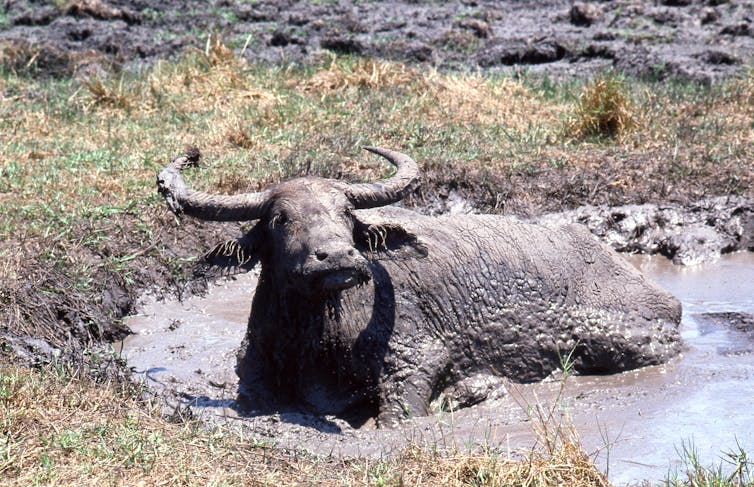
Are Feral Ruminants Really A Big Problem?
If you live in a big city, you’re unlikely to ever see the full scale of the issue. But that’s changing. Residents in Melbourne and Sydney have become more familiar with feral deer, as they spread up and down the Great Dividing Range.
We’re more familiar with the damage done by other introduced species, including foxes, rabbits, rats and cats. Ruminants are a real problem – just usually not in the places where most people live.
These large herbivores are often much heavier than kangaroos and, unlike any native animal, have hard hooves which trample plants, compact soil and increase erosion. They can foul rivers and lakes, and carry diseases to farm animals.
Why is it hard to control these animals at present? The cost. Historically, keeping feral ruminant numbers down has been done by sending shooters up in helicopters. Since the 1960s, we have spent billions controlling feral ruminants.
Despite this, most of these species are more common than ever. How can that be? Once we stop culling, feral animal populations often bounce back very quickly because of their high breeding rates and through migration from neighbouring areas where culling hasn’t been undertaken.
For land managers, the scale of the task is often bigger than their budget, meaning feral ruminant control is often placed in the “too hard” basket, especially for remote areas. That’s where carbon credits could help. As the carbon economy grows, it has begun to change the economics of land use and land management.
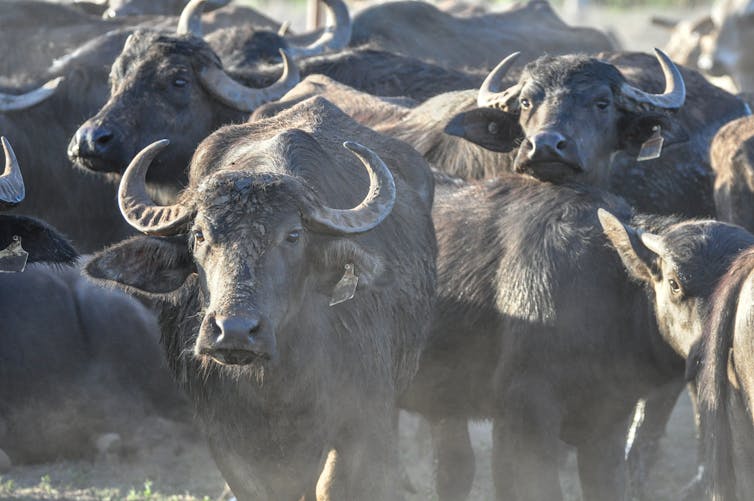
Could Carbon Credits Really Improve Feral Ruminant Control?
Land managers now have incentives to take action to avoid emissions in a way which can be documented and to increase how much carbon their land can sequester in trees, wetlands or soils.
That’s because these actions can earn them carbon credits. Every tonne of carbon dioxide equivalent (CO₂-e) kept out of the atmosphere is currently worth around A$30. Credits can be sold to third parties looking to offset their emissions.
How could land managers create credits by controlling buffalo? We could borrow from the success of farmers and managers across northern Australia’s vast and fire-prone savannas who produce credits by using cool burns to reduce fuel loads and prevent devastating late-season fires which release large volumes of greenhouse gases.
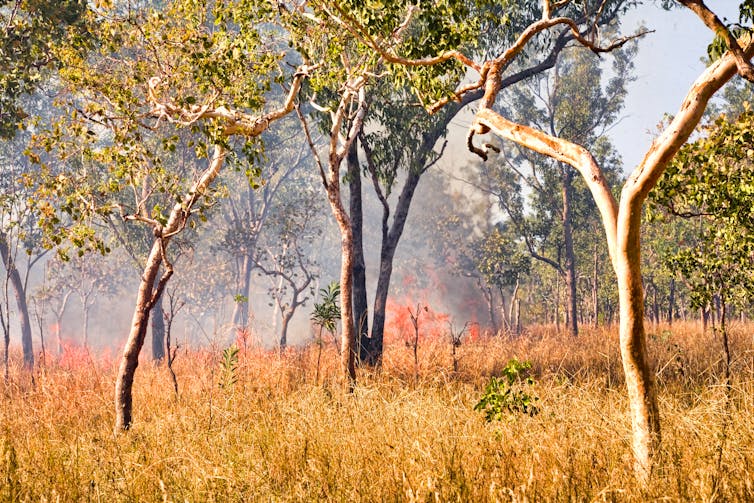
At present, you cannot claim carbon credits for culling. What if you could? We put that to the test in our research to see if the income from carbon credits would make culling self-sustaining.
In short, it would make a major difference. The income from selling carbon credits could far outweigh the costs of culling. Rather than being a huge expense, keeping numbers down on your landholdings would become a substantial source of income.
A water buffalo belches an average of 76 kilograms of methane each year. That’s the equivalent of 2.1 tonnes of CO₂. Over a 25-year lifespan, that’s the equivalent of more than 50 tonnes of carbon dioxide.
A Rare Win-Win?
We examined the feral buffalo population around the South Alligator River in Kakadu National Park, and simulated different culling scenarios. We found effective control would drastically reduce emissions, abating up to 913,000 tonnes of CO₂-e over 20 years. That would make aerial culling very profitable. The net income from these avoided emissions would be more than $26 million in credits – after taking out the cost of culling.
While more research is needed, we hope our research demonstrates the concept is viable. If culling high-emitting ruminants such as buffalo earned carbon credits, we believe it would open the door to far better feral animal control across the Top End.
We could reduce greenhouse gas emissions, open up new income streams for landowners and managers, and give regional ecosystems a health boost.
With buffalo pressure reduced, the wetlands and floodplains they churn into mudpits could recover. That, in turn, would help these natural systems hold their carbon better – and mean the value of buffalo removal would increase even more. At present, however, we haven’t quantified how much extra carbon could be stored.
It’s rare to find an approach in land management that benefits both landholders and the environment. Buffalo carbon credits might just be that rare win-win. ![]()
Hugh Davies, Research Associate, Charles Darwin University; Brett Murphy, Professor, Charles Darwin University; Clément Duvert, Senior Research Fellow, Charles Darwin University, and Georgina Neave, PhD candidate, Charles Darwin University
This article is republished from The Conversation under a Creative Commons license. Read the original article.
Pittwater Reserves: Histories + Notes + Pictorial Walks
A History Of The Campaign For Preservation Of The Warriewood Escarpment by David Palmer OAM and Angus Gordon OAM
A Walk Around The Cromer Side Of Narrabeen Lake by Joe Mills
America Bay Track Walk - photos by Joe Mills
An Aquatic June: North Narrabeen - Turimetta - Collaroy photos by Joe Mills
Angophora Reserve Angophora Reserve Flowers Grand Old Tree Of Angophora Reserve Falls Back To The Earth - History page
Annie Wyatt Reserve - A Pictorial
Avalon's Village Green: Avalon Park Becomes Dunbar Park - Some History + Toongari Reserve and Catalpa Reserve
Bairne Walking Track Ku-Ring-Gai Chase NP by Kevin Murray
Bangalley Headland Bangalley Mid Winter
Banksias of Pittwater
Barrenjoey Boathouse In Governor Phillip Park Part Of Our Community For 75 Years: Photos From The Collection Of Russell Walton, Son Of Victor Walton
Barrenjoey Headland: Spring flowers
Barrenjoey Headland after fire
Bayview Baths
Bayview Wetlands
Beeby Park
Bilgola Beach
Botham Beach by Barbara Davies
Bungan Beach Bush Care
Careel Bay Saltmarsh plants
Careel Bay Birds
Careel Bay Clean Up day
Careel Bay Playing Fields History and Current
Careel Creek
Careel Creek - If you rebuild it they will come
Centre trail in Ku-ring-gai Chase National Park
Chiltern Track- Ingleside by Marita Macrae
Clareville Beach
Clareville/Long Beach Reserve + some History
Coastal Stability Series: Cabbage Tree Bay To Barrenjoey To Observation Point by John Illingsworth, Pittwater Pathways, and Dr. Peter Mitchell OAM
Cowan Track by Kevin Murray
Curl Curl To Freshwater Walk: October 2021 by Kevin Murray and Joe Mills
Currawong and Palm Beach Views - Winter 2018
Currawong-Mackerel-The Basin A Stroll In Early November 2021 - photos by Selena Griffith
Currawong State Park Currawong Beach + Currawong Creek
Deep Creek To Warriewood Walk photos by Joe Mills
Drone Gives A New View On Coastal Stability; Bungan: Bungan Headland To Newport Beach + Bilgola: North Newport Beach To Avalon + Bangalley: Avalon Headland To Palm Beach
Duck Holes: McCarrs Creek by Joe Mills
Dunbar Park - Some History + Toongari Reserve and Catalpa Reserve
Dundundra Falls Reserve: August 2020 photos by Selena Griffith - Listed in 1935
Elsie Track, Scotland Island
Elvina Track in Late Winter 2019 by Penny Gleen
Elvina Bay Walking Track: Spring 2020 photos by Joe Mills
Elvina Bay-Lovett Bay Loop Spring 2020 by Kevin Murray and Joe Mills
Fern Creek - Ingleside Escarpment To Warriewood Walk + Some History photos by Joe Mills
Iluka Park, Woorak Park, Pittwater Park, Sand Point Reserve, Snapperman Beach Reserve - Palm Beach: Some History
Ingleside
Ingleside Wildflowers August 2013
Irrawong - Ingleside Escarpment Trail Walk Spring 2020 photos by Joe Mills
Irrawong - Mullet Creek Restoration
Katandra Bushland Sanctuary - Ingleside
Lucinda Park, Palm Beach: Some History + 2022 Pictures
McCarrs Creek
McCarr's Creek to Church Point to Bayview Waterfront Path
McKay Reserve
Mona Vale Beach - A Stroll Along, Spring 2021 by Kevin Murray
Mona Vale Headland, Basin and Beach Restoration
Mount Murray Anderson Walking Track by Kevin Murray and Joe Mills
Mullet Creek
Narrabeen Creek
Narrabeen Lagoon Catchment: Past Notes Present Photos by Margaret Woods
Narrabeen Lagoon State Park
Narrabeen Lagoon State Park Expansion
Narrabeen Rockshelf Aquatic Reserve
Nerang Track, Terrey Hills by Bea Pierce
Newport Bushlink - the Crown of the Hill Linked Reserves
Newport Community Garden - Woolcott Reserve
Newport to Bilgola Bushlink 'From The Crown To The Sea' Paths: Founded In 1956 - A Tip and Quarry Becomes Green Space For People and Wildlife
Pittwater Reserves: The Green Ways; Bungan Beach and Bungan Head Reserves: A Headland Garden
Pittwater Reserves, The Green Ways: Clareville Wharf and Taylor's Point Jetty
Pittwater Reserves: The Green Ways; Hordern, Wilshire Parks, McKay Reserve: From Beach to Estuary
Pittwater Reserves - The Green Ways: Mona Vale's Village Greens a Map of the Historic Crown Lands Ethos Realised in The Village, Kitchener and Beeby Parks
Pittwater Reserves: The Green Ways Bilgola Beach - The Cabbage Tree Gardens and Camping Grounds - Includes Bilgola - The Story Of A Politician, A Pilot and An Epicure by Tony Dawson and Anne Spencer
Pittwater spring: waterbirds return to Wetlands
Pittwater's Lone Rangers - 120 Years of Ku-Ring-Gai Chase and the Men of Flowers Inspired by Eccleston Du Faur
Pittwater's Parallel Estuary - The Cowan 'Creek
Resolute Track at West Head by Kevin Murray
Resolute Track Stroll by Joe Mills
Riddle Reserve, Bayview
Salvation Loop Trail, Ku-Ring-Gai Chase National Park- Spring 2020 - by Selena Griffith
Seagull Pair At Turimetta Beach: Spring Is In The Air!
Stapleton Reserve
Stapleton Park Reserve In Spring 2020: An Urban Ark Of Plants Found Nowhere Else
Stony Range Regional Botanical Garden: Some History On How A Reserve Became An Australian Plant Park
The Chiltern Track
The Resolute Beach Loop Track At West Head In Ku-Ring-Gai Chase National Park by Kevin Murray
Topham Track Ku-Ring-Gai Chase NP, August 2022 by Joe Mills and Kevin Murray
Towlers Bay Walking Track by Joe Mills
Trafalgar Square, Newport: A 'Commons' Park Dedicated By Private Landholders - The Green Heart Of This Community
Tranquil Turimetta Beach, April 2022 by Joe Mills
Turimetta Beach Reserve by Joe Mills, Bea Pierce and Lesley
Turimetta Beach Reserve: Old & New Images (by Kevin Murray) + Some History
Turimetta Headland
Warriewood Wetlands and Irrawong Reserve
Whale Beach Ocean Reserve: 'The Strand' - Some History On Another Great Protected Pittwater Reserve
Wilshire Park Palm Beach: Some History + Photos From May 2022
Winji Jimmi - Water Maze

New Shorebirds WingThing For Youngsters Available To Download
A Shorebirds WingThing educational brochure for kids (A5) helps children learn about shorebirds, their life and journey. The 2021 revised brochure version was published in February 2021 and is available now. You can download a file copy here.
If you would like a free print copy of this brochure, please send a self-addressed envelope with A$1.10 postage (or larger if you would like it unfolded) affixed to: BirdLife Australia, Shorebird WingThing Request, 2-05Shorebird WingThing/60 Leicester St, Carlton VIC 3053.

 Shorebird Identification Booklet
Shorebird Identification Booklet
The Migratory Shorebird Program has just released the third edition of its hugely popular Shorebird Identification Booklet. The team has thoroughly revised and updated this pocket-sized companion for all shorebird counters and interested birders, with lots of useful information on our most common shorebirds, key identification features, sighting distribution maps and short articles on some of BirdLife’s shorebird activities.
The booklet can be downloaded here in PDF file format: http://www.birdlife.org.au/documents/Shorebird_ID_Booklet_V3.pdf
Paper copies can be ordered as well, see http://www.birdlife.org.au/projects/shorebirds-2020/counter-resources for details.
Download BirdLife Australia's children’s education kit to help them learn more about our wading birdlife
Shorebirds are a group of wading birds that can be found feeding on swamps, tidal mudflats, estuaries, beaches and open country. For many people, shorebirds are just those brown birds feeding a long way out on the mud but they are actually a remarkably diverse collection of birds including stilts, sandpipers, snipe, curlews, godwits, plovers and oystercatchers. Each species is superbly adapted to suit its preferred habitat. The Red-necked Stint is as small as a sparrow, with relatively short legs and bill that it pecks food from the surface of the mud with, whereas the Eastern Curlew is over two feet long with a exceptionally long legs and a massively curved beak that it thrusts deep down into the mud to pull out crabs, worms and other creatures hidden below the surface.
Some shorebirds are fairly drab in plumage, especially when they are visiting Australia in their non-breeding season, but when they migrate to their Arctic nesting grounds, they develop a vibrant flush of bright colours to attract a mate. We have 37 types of shorebirds that annually migrate to Australia on some of the most lengthy and arduous journeys in the animal kingdom, but there are also 18 shorebirds that call Australia home all year round.
What all our shorebirds have in common—be they large or small, seasoned traveller or homebody, brightly coloured or in muted tones—is that each species needs adequate safe areas where they can successfully feed and breed.
The National Shorebird Monitoring Program is managed and supported by BirdLife Australia.
This project is supported by Glenelg Hopkins Catchment Management Authority and Hunter Local Land Services through funding from the Australian Government’s National Landcare Program. Funding from Helen Macpherson Smith Trust and Port Phillip Bay Fund is acknowledged.
The National Shorebird Monitoring Program is made possible with the help of over 1,600 volunteers working in coastal and inland habitats all over Australia.
The National Shorebird Monitoring program (started as the Shorebirds 2020 project initiated to re-invigorate monitoring around Australia) is raising awareness of how incredible shorebirds are, and actively engaging the community to participate in gathering information needed to conserve shorebirds.
In the short term, the destruction of tidal ecosystems will need to be stopped, and our program is designed to strengthen the case for protecting these important habitats.
In the long term, there will be a need to mitigate against the likely effects of climate change on a species that travels across the entire range of latitudes where impacts are likely.
The identification and protection of critical areas for shorebirds will need to continue in order to guard against the potential threats associated with habitats in close proximity to nearly half the human population.
Here in Australia, the place where these birds grow up and spend most of their lives, continued monitoring is necessary to inform the best management practice to maintain shorebird populations.
BirdLife Australia believe that we can help secure a brighter future for these remarkable birds by educating stakeholders, gathering information on how and why shorebird populations are changing, and working to grow the community of people who care about shorebirds.
To find out more visit: http://www.birdlife.org.au/projects/shorebirds-2020/shorebirds-2020-program
Aussie Bread Tags Collection Points

Strengthened Aged Care Quality Standards Pilot Program
- build confidence and trust in aged care
- empower consumers
- support providers to comply with quality standards
- promote best practice service provision.
- granting approval for providers to deliver aged care services
- administering the Serious Incidents Response Scheme
- reducing the use of restrictive practices.
Hugh Mackay A Hit At COTA NSW AGM
Update On In-Home Aged Care Payment Reform
- enhancing integrations with current government portals
- the impact of subcontracting and brokered services on invoices and payments
- the perceived need to increase administrative staff to help manage the service delivery data requirements
- poor uptake by care recipients of the digital offerings
Wellbeing Plus

Possible link between Alzheimer’s disease and gut microbiome found in mice – new study

Researchers may have found an unlikely contributor to the development of Alzheimer’s disease: the bacteria in your gut. Their study, published in the journal Science, suggested that certain gut bacteria increase the brain damage seen in mice with an Alzheimer’s-like disease.
In Alzheimer’s disease – the most common form of dementia – proteins build up abnormally in the brain. One of these proteins is called tau, and its build-up causes the death of brain cells that are involved in memory, causing forgetfulness and eventually permanent memory loss.
The researchers were working with a group of mice with a genetic mutation that causes the accumulation of tau protein in the brain. The mice were split into two groups: one group had a healthy gut microbiome (the collection of bacteria, viruses and fungi which live in the gut), while the other lacked a gut microbiome completely (these mice are nicknamed “germ free”). By the time they reached old age, the germ-free mice had significantly less brain damage caused by tau.
The germ-free mice also had a lower level of tau-associated inflammation in their brains. High levels of inflammation are seen in the brains of people with Alzheimer’s, contributing to brain damage. So the lower level of brain inflammation could be one of the reasons less brain damage was seen in these mice.
One of the main causes of Alzheimer’s-associated brain inflammation is the activation of a certain type of immune cell, known as microglia. Microglia are known to be regulated by the gut microbiome, which might explain why germ-free mice had lower levels of active microglia.
Removing The Gut Microbiome Is Not The Solution
If you’ve heard of the gut microbiome, you might know that it is usually thought of as being important for our overall health. So the suggestion that not having a microbiome could reduce the severity of Alzheimer’s is surprising. However, if you’re wondering whether removing your gut microbiome might reduce your chances of developing the disease, you might be disappointed.
Everyone has a unique gut microbiome, which is home to millions of different types of bacteria, some of which are beneficial and some of which can be damaging to our health. One explanation for the study’s findings is that only a certain type of bacteria is involved in increasing brain inflammation and brain-cell death caused by tau.
The researchers tested this idea by dosing a third group of mice, which had a healthy gut microbiome, with antibiotics. The antibiotics reduced the level of inflammation in the brain, as well as the activation of microglia, although only in male mice. What’s interesting is that only certain types of gut bacteria were reduced by the antibiotics, so it might have been one of these bacteria that was helping cause brain damage in the mice.
It’s unclear why antibiotics only improved outcomes in male mice, but not females. In humans, Alzheimer’s disproportionately affects women. It’s not clear why, but research suggests that one reason women are at greater risk of Alzheimer’s could be the impact of hormone changes that occurs during menopause.
That the gut microbiome can affect the brain is unsurprising. Over a decade of research has revealed that there are strong communication links between the two, known as the gut-brain axis. The gut-brain axis helps regulate multiple bodily processes, including the immune system and, therefore, inflammation.
This is not the first study to have pointed to the role that the gut microbiome may have in developing Alzheimer’s disease in mice. There’s also evidence that the gut microbiome is different in people with Alzheimer’s disease compared to those who are healthy.
While the idea that the gut microbiome is linked to Alzheimer’s is compelling, it’s important to interpret the results of the study with caution. Mice, especially those with genetic mutations, are very different to humans. Their immune system, their genetics and, critically, their gut microbiome all have differences.
Germ-free mice also have an underdeveloped immune system. Their gut-brain axis is affected too, with research in germ-free mice showing changes to their behaviour and brain signalling compared with normal mice. These differences could also be a reason the germ-free mice in the study didn’t develop such severe Alzheimer’s.
Based on current research, it can’t be claimed that bacteria in the gut microbiome contribute to Alzheimer’s disease in humans. Instead, the research points to the possibility that there are specific bacteria within the gut microbiome that could increase the risk of developing Alzheimer’s. If it can be shown that there are similar bacteria in humans that have similar effects, the possibility that targeting them might form a new basis for treating Alzheimer’s is an exciting prospect.![]()
Catherine Purse, PhD Candidate, Quadram Institute
This article is republished from The Conversation under a Creative Commons license. Read the original article.
Macular diseases cause blindness and treatment costs millions. Here is how to look after yours
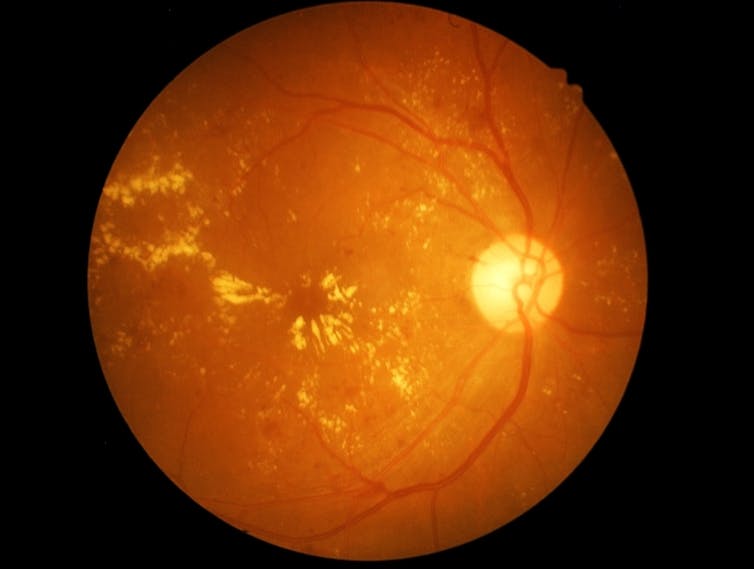
The single most expensive drug for the Australian government today, costing more than A$400 million per year, is one called aflibercept. It stops the growth and “leakiness” of blood vessels, and is given to treat a range of different eye diseases. These diseases have one thing in common: they all affect a piece of tissue inside the eye called the macula.
The macula is a structure that distinguishes us humans, as well as some other primates including apes and monkeys. It is a part of the retina that lets us recognise people’s faces, navigate a car and read the newspaper. Our eye is built to focus images onto the macula to achieve this level of vision.
Like the rest of the retina, the macula consists of cells that detect light – photoreceptors – plus nerve cells and other supporting cells, but they are arranged differently to ensure images are seen in high resolution. The macula also contains the highest body concentration of yellow carotenoid pigments – protective antioxidants which filter out blue light to hone vision.
Scientists are working to understand why so many diseases and conditions, including diabetes, inflammation and parasitic infection, affect the macula. This is likely due to a host of factors: from the special anatomy of cells, to blood supply, the need for carotenoid pigments and a high metabolic rate.
The Many Causes Of Macular Disease
When a person’s macula becomes diseased, they often experience changes in vision. However, because the macula is just one part of the retina, even severe macular disease generally does not cause complete loss of sight.
Dame Judi Dench has talked about her macular disease – macular degeneration – including how friends help her learn lines by repeating them over and over to her, and how fellow performers help her know where to face when she is acting. Having this condition might mean she no longer drives a car, but she continues to live a full life.
Macular degeneration affects about one in seven people over 50 years of age, and can occur as an overgrowth of blood vessels or as a loss of tissue.
Diabetes causes an accumulation of fluid in the macula, called macular oedema; around one in 15 people with diabetes develop this condition. Other causes of macular oedema include a blocked blood vessel or inflammation inside the eye. It can also be a complication after cataract surgery.
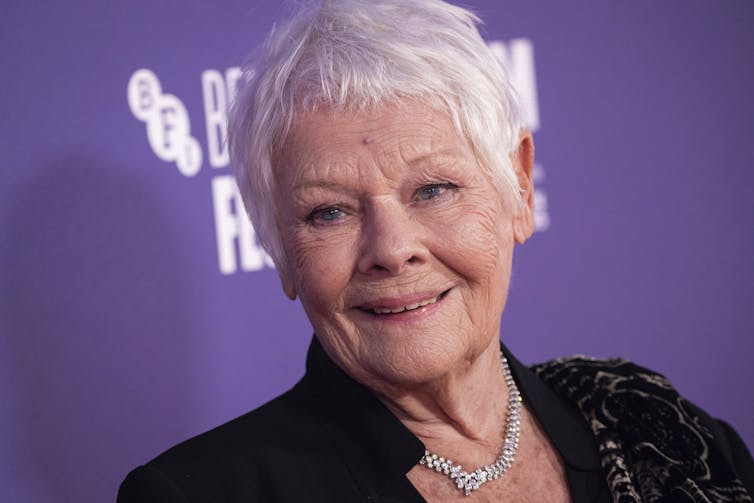
There are many more macular diseases.
Toxoplasmosis – a parasite infection – often affects the macula.
Macular disease is a side effect of some drugs, such as hydroxychloroquine used to treat inflammatory diseases like lupus, and the new immunotherapy drugs for cancers including melanoma.
Central serous chorioretinopathy is a macular disease that affects younger adults and is associated with high levels of the stress hormone cortisol. Rare inherited conditions can affect the macula even earlier in life.

Treatments And Prevention: 5 Ways
Treatments depend on the type of macular disease. Most drugs are given by injection with a fine needle into the back part of the eye, called the vitreous. This quick procedure may be done in the doctor’s office.
But understanding what the causes of disease have in common points to lifestyle changes that can protect the macula or slow the damage of diseases.
1. Diet
Researchers at the United States National Eye Institute have shown the benefits of a Mediterranean diet, heavy in legumes and other vegetables, fruits, nuts and whole grains, and favouring fish over red meat, for protection against macular degeneration. A supplement combining vitamin C and E, lutein and zeaxanthin, zinc and copper is also recommended to limit progression of certain types of degeneration.
2. Avoiding smoking
Not taking up smoking or quitting if you are already a smoker safeguards your macula. Smoking has been linked to a number of macular diseases, including macular oedema and central serous chorioretinopathy, as well as macular degeneration.
3. Sun smarts
Wearing a sunhat and sunglasses from childhood may have benefits beyond skin safety. Some studies suggest sunlight exposure is a risk factor for macular degeneration. Physical activity can also protect against this condition, although there is debate about whether vigorous exercise is protective or potentially dangerous.
4. Shut eye
Quality sleep protects the macula. Sleep apnoea is associated with several macular diseases, including macular degeneration, macular oedema and central serous chorioretinopathy. Moreover, people with these diseases and untreated sleep apnoea may need more frequent drug injections for their condition.
5. Busting stress if possible
Limiting stress in life is difficult, but stress is a well-established risk factor for central serous chorioretinopathy. One group of US researchers reported an unusually high number of people with the disease at their local health network early in the COVID pandemic, which was a highly stressful time.

Controlling other aspects of diseases that affect the macula can be important too. For example, the macula benefits from: keeping blood pressure well-controlled, stabilising blood sugars in people with diabetes, and reducing inflammation in people with uveitis.
Check It And See
You can monitor your own macula using a simple test called the Amsler grid, available for free online.
Testing with an Amsler grid picks up changes in the vision caused by macular diseases.
Self-testing doesn’t take the place of regular checks with your eye health practitioner. They can examine your macula directly, usually after dilating the pupils, and may employ a powerful technology – optical coherence tomography – to scan through it.![]()
Justine R. Smith, Professor of Eye & Vision Health, Flinders University
This article is republished from The Conversation under a Creative Commons license. Read the original article.
Using Big Data To Find The Best Health Care For Older Australians
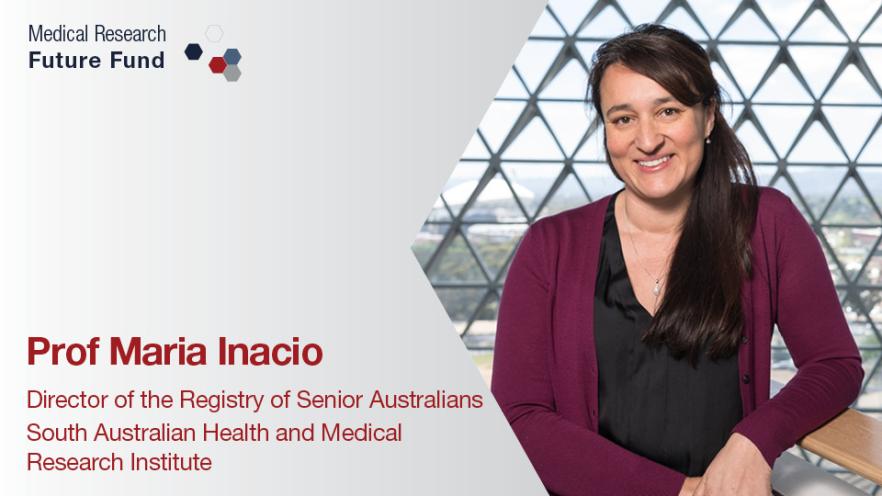
- hospitalisations
- subsequent health encounters
- the length of stay at home or in residential care.
- Older people who have preventive or multidisciplinary health care have the lowest mortality. This includes:
- health assessments
- chronic disease management plans or multidisciplinary care plans
- medication reviews
- allied health services
- People who see a GP a few times a year and receive minimal other services have mid-level mortality. Maria says this is likely due to them having less health issues.
- People who see a GP frequently, including urgent, after-hours consultations have the highest mortality. Maria says this may be because they have declining health, but it also may be because their health care is not well managed. She is trying to work through this question now.
A Serious Backyard Waterslide: + Manly Water Chute
Spotted last weeked - looks like GREAT fun
Situated in Manly at the corner of South Steyne and Ashburner Street (an area known as Steyne Court), the Manly Chute was established in 1903 by a syndicate called the Manly Chute and Amusements Company. The site had previously operated for some three years as a place of amusement known as The Maze, before being purchased sometime around September 1903. Included in the sale was a building that had operated as a refreshment room. The new company was incorporated on November 6th 1903, and shortly afterwards, General Manager, Archibald Baird, struck a deal with previous refreshment room operator, Henry Bardolph, to buy his business.
After securing the rights to the refreshment room, demolition of the maze began. The company then set about erecting the water slides that were to be the park's main attraction. The Manly Chute's official opening, timed to coincide with the school holidays, took place on December 14th in the presence of Sir John See, members of the New South Wales Ministry and the Mayor of Manly. The first entertainment was presented by a military band under the conductorship of Mr L. De Groen. The Sydney Morning Herald indicates that the park was open at night, with illumination provided by "fairy and other lamps."


THE MANLY CHUTE.
The Manly Water Chute and Amusements Company have issued an attractive guidebook profusely illustrated, setting forth the numerous attractions at the company’s grounds at Manly. The chute, toboggan. Bijou Theatre, and the fiery dragon are all depicted, and the letterpress is well and smartly written. Trippers to Manly (the Brighton of Australia) who have not yet experienced the sensation of " chuting" on reading the brochure, will no doubt be tempted to " take the plunge." The little book is a credit alike to its author, printer, and all concerned. THE MANLY CHUTE. (1904, May 7). Watchman (Sydney, NSW : 1902 - 1926), p. 3. Retrieved from http://nla.gov.au/nla.news-article111920950

Water Chute, Manly, N.S.W. , postcards courtesy National Museum of Australia, Image No.: 1986.0117.0258 - from an old Postcard, and Manly Library History collection.
The Manly Shute operated during the warmer months of each year - approximately October to April. While the feature attractions were a Canadian water chute and a Toboggan ride, the management also provided other entertainments, including variety concerts and film exhibitions. The park was leased to music director/manager Lewis De Groen from October 1905 to April 1906. It remained open until the end of June that year, however, and then closed permanently. The site was sold in November 1906, around the same time that the Manly Chute and Amusements Company went into liquidation.
Manly's fascination with fun and water had not ceased though.
In 1981 Manly Waterworks opened and now named Manly Surf'n'Slide, although most people still call it Manly Waterworks and it's still opne on Saturdays and Sundays. Interestingly this site was, apparently, used in the movie BMX Bandits starring Nicole Kidman during which an escape is staged in one of the waterslides.
Moth Eggs
It's that time of year when all the insects that have been busy feeding and flitting during Summer are laying eggs. This one was flapping about in our bathroom, and we though 'oh, pretty.'.
When we went back in a few hours later we noticed it had laid some eggs on the outside of the shower screen. Pretty colour:
This one is Gastrophora henricaria, described by A. Guenée, in 1857, also called a 'Beautiful Leaf Moth' or 'Fallen-bark Looper'.
The Caterpillars of this species are brown, with a pair of protuberances on abdominal segment three. The first three pairs of prolegs are vestigial, and there are dark triangular ventral marks under those segments. Intermediate instars have a dark chevron on the back of each segment, and an orange dorsal patch on the fourth segment.
The Larvae feed on eucalypts and Brush Box.
The male adult moths have fawn forewings, each with a dark brown transverse line, and a prominent dark brown dot near the base of the hind margin.
The female adult moths have fawn forewings, each with a broad slightly darker trapezoidal transverse band, and a faint dark brown dot near the base of the hind margin.
In its resting position, the underside of each hindwing covers the undersides of the forewings, and is pale brown with a large slightly darker patch, and a submarginal arc of black dots. The underside of each forewing is displayed when the moth is disturbed, and is a startling yellow to orange with a large black patch containing a bluish-purple blotch, connected by an orange triangle to the base.
This is quite a large moth - Body length to 35 mm, wingspan to 80 mm.
As you can see, this mum has a bald spot. Moths and butterflies constantly accumulate damage on their wings and bodies over time, and they're especially prone to loosing the delicate scales that coat their exoskeleton (which is usually visible as a 'bald spot' on the top part of a moth's thorax when it's been bumping around a light for a few hours). You can even get a sense of a moth's age by seeing how worn and tattered its wings are; newly emerged individuals are usually pristine, while older ones have frayed wings and patches of missing scales.
The species is found over much of the south-eastern quarter of Australia. Information courtesy and from: http://lepidoptera.butterflyhouse.com.au/chro/henricaria.html - This page also has more great photos.
This photo of a male shows you how they look if they haven't been bumping around too much and thos glorious colours underneath:
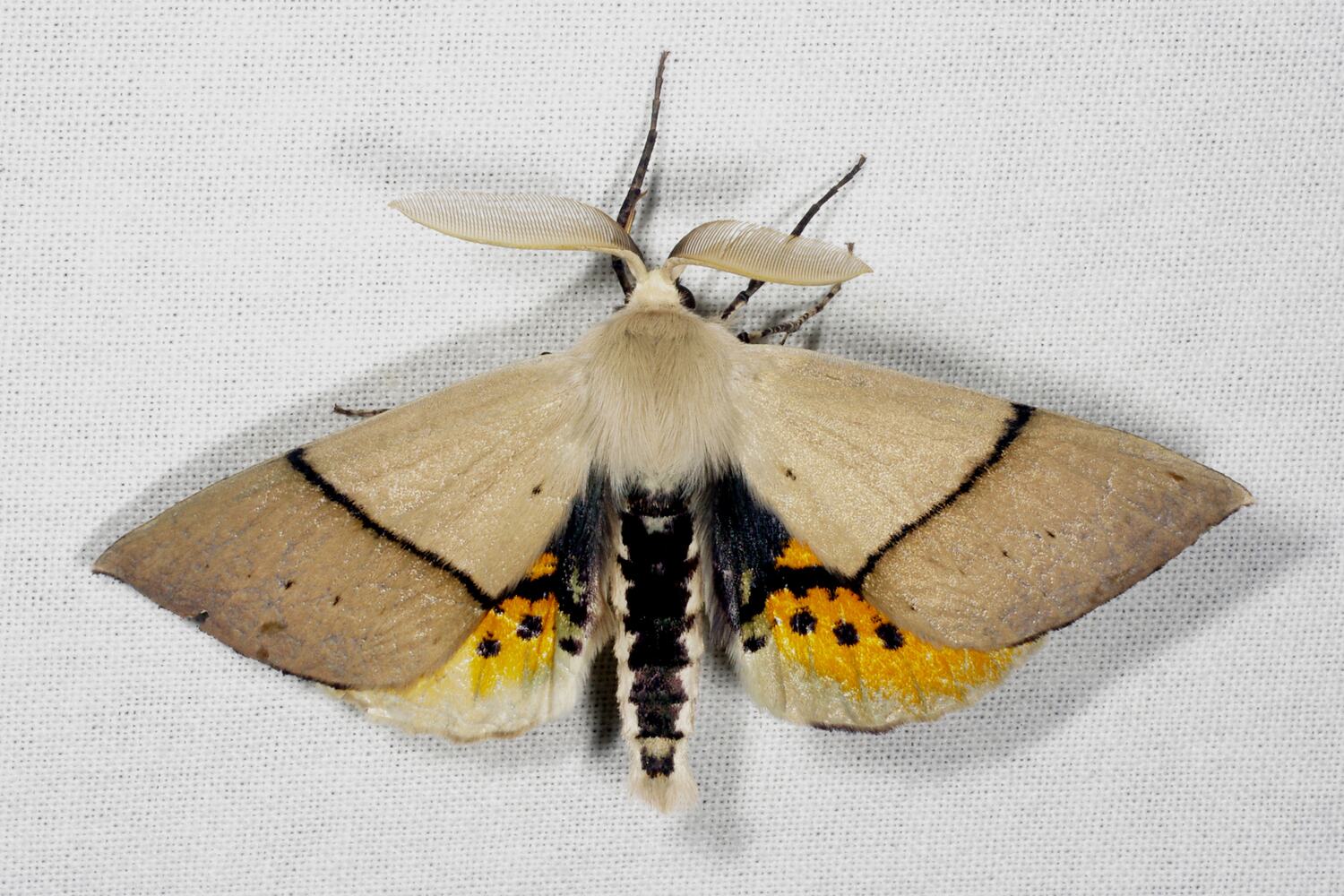
Gastrophora henricaria, moth, male. Great Otway National Park, Victoria. Photographer: Frank Pierce. Source: Museums Victoria. Copyright Museums Victoria / CC BY (Licensed as Attribution 4.0 International)
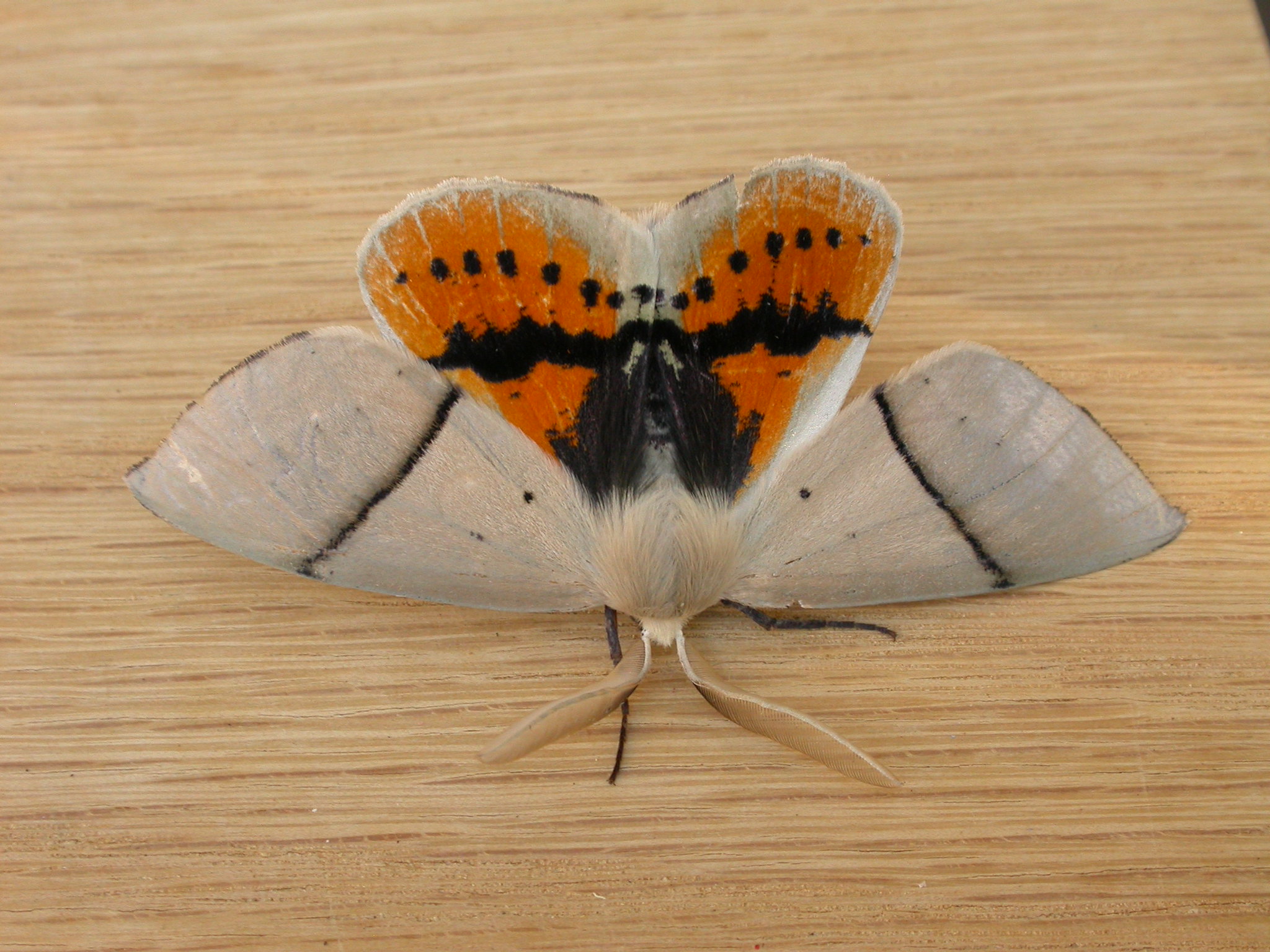
Gastrophora henricaria Guenée, 1857, to MV light, Aranda, ACT, 30 November/1 December 2008. Photo: Donald Hobern via Flickr
How long do eggs take to hatch?
The eggs for this moth are usually laid on eucalyptus leaves.
The female lays the eggs individually and she can lay as many as 220 eggs over a 2 week period. The eggs usually hatch after 4 - 8 days but can take as long as 3 weeks. The hatching larvae begin feeding and spinning immediately. They produce two lengthy tubes that run onto or into the infested material. The larvae can molt over 40 times and the larval stage can take between 1 - 24 months. The larval period can vary greatly because of the ability of the larvae to undergo diapause (phase of dormancy). This period of dormancy usually lasts between 8 - 24 months. Pupating larvae spin a quiver like pupal case which is thicker than the feeding tubes and closed at both ends. Pupation usually lasts between 2 - 6 weeks and the hatching adults normally live between 2 - 4 weeks.
Australia has around 22 000 species of moths. Around half of these have been scientifically named. This one has a lovely soft coat - imagine if there was a cloth made like this that you could wear.
The moths hatching out in the bathroom reminds us of a few years back around this time of year, when we had a huntsman mumma deposit her eggs in the bathroom. Soon we had tiny tiny spiders everywhere - but they went outswide when we opened the window - off into the Great Outdoors to continue the yearly cycles of insects and spiders and all those other tiny living things we share the world with.
Lime Cordiale Is Coming Home: Two Dee Why Gigs Announced, One For ALL AGES - Roll Up For Their Fantastical Country Club Experience
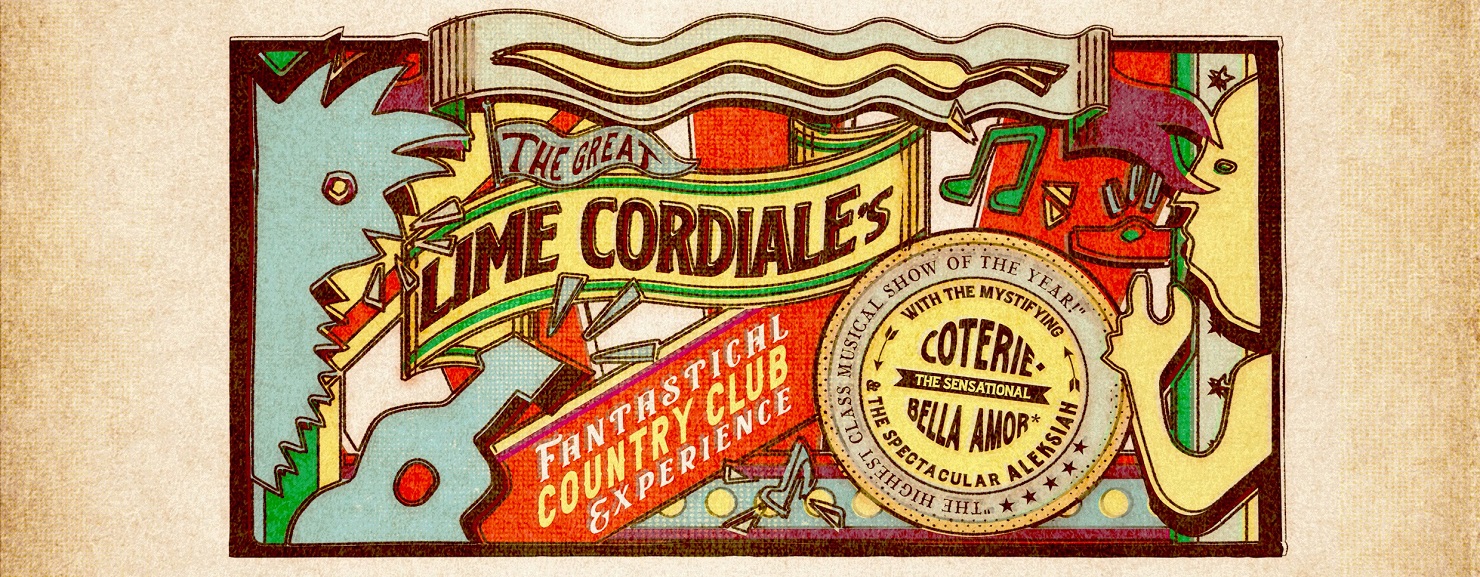
Council Seeks Community Members For LGBTQIA+ Working Group
Belrose Gets A New Mountain Bike Track
On January 30 2023 Council announced the opening of another mountain bike trail at Belrose. Wyatt Ave Bike Park in is a purpose-built facility for youngsters and new riders to safely practice and learn skills before progressing to more challenging trails like Bare Creek and Manly Dam.
Northern Beaches Mayor Michael Regan said Council’s own Landscape Construction Team worked with Trail Care to deliver a high-quality result and ensure the best outcome for the riding community.
“Riders of all ages will be super pumped to have a site they can call their own to practice their skills before they even consider going to the much more advanced Bare Creek and Manly Dam tracks.
“The site’s loop trail includes a beginner loop and mini flow loop; climb and descent, technical features, and gravity zone features, as well as bike launching area, a viewing platform, and so many environmentally conscious elements including 1050 new trees planted.
“This project would not have been possible without the instrumental work of local mountain biking advocacy and consultancy group Trail Care who helped design the park based on feedback from local skills coaches and parents of local riders to gain a clear understanding of what the community needed.” Mayor Regan said.
Trail Care’s Matt Ward is thrilled Council is supporting and investing in this growing sport.
“The new park provides awesome opportunities for kids and new riders to progress. Perhaps they've never ridden a bike on dirt before; here they can build confidence on corners, rock rolls, drops, and jumps. It's the ideal stepping stone towards other Council facilities like Bare Creek and Manly Dam.
“Working in collaboration with Council on this project has led to great outcomes, bringing together amazing landscaping work with local trail design knowledge. The end result is one of the best-looking skills parks I've seen.” Matt Ward said.
“We’re also so grateful to the local member for Davidson, Jonathan O’Dea, for securing use of the site and advocating for this project. He has been instrumental since its inception, and it will be one of the many projects which will become his legacy.” Mayor Regan said.
Member for Davidson, The Hon, Jonathan O’Dea said he’s delighted to see all the hard work on the project has paid off.
“I was pleased to negotiate for the State Government to dedicate the land for community recreation on the basis that Northern Beaches Council took responsibility for planning and developing a new facility.
“Wyatt Ave Bike Park is designed for younger and less experienced riders and provides a safe introduction to an exciting and energetic sport. It is a wonderful complement to the neighbouring Bear Creek Bike Park” Mr O’Dea said.
In addition to 1050 new plants, 950 tonnes of excavated construction material from local construction sites formed the trail subbase, as well as 120 cubic metres of recycled mulch.
Council encourages all riders at any of the bike parks to wear appropriate safety gear.
Northern Composure Band Competition 2023
Due to the pandemic, Council have had the 20th anniversary on hold but pleased to say that the competition is open and running again.
Northern Composure is the largest and longest-running youth band competition in the area and offers musicians local exposure as well as invaluable stage experience. Bands compete in heats, semi finals and the grand final for a total prize pool of over $15,000.
Over the past 20 years we have had many success stories and now is your chance to join bands such as:
- Ocean Alley
- Lime Cordiale
- Dear Seattle
- What So Not
- The Rions
- Winston Surfshirt
- Crocodylus
And even a Triple J announcer plus a wide range of industry professionals
About the Competition
In 2023, the comp looks a little different.
All bands are invited to enter our heats which will be exclusively run online and voted on by your peers and community by registering below and uploading a video of one song of your choice. (if you are doing a cover, please make sure to credit the original band) We are counting on you to spread the word and get your friends, family, teachers voting for you!
The top 8-12 bands will move on through to our live semi finals with a winner from each moving on to the grand final held during National Youth Week. Not only that but we have raised the age range from 19 to 21 for all those musicians who may have missed out over the past two years.
Key dates
- Voting open for heats: Mon 13 Feb – Sun 26 Feb
- Band Briefing: Mon 6 March, Dee Why PCYC
- Semi 1: Sat 18 March Mona Vale Memorial Hall
- Semi 2: Sat 25 March, YOYOs, Frenchs Forest
- Grand Final: Fri 28 April, Dee Why PCYC
For more information contact Youth Development at youth@northernbeaches.nsw.gov.au or call 8495 5104
Stay in the loop and follow Northern Composure Unplugged on KALOF Facebook.
School Leavers Support
- Download or explore the SLIK here to help guide Your Career.
- School Leavers Information Kit (PDF 5.2MB).
- School Leavers Information Kit (DOCX 0.9MB).
- The SLIK has also been translated into additional languages.
- Download our information booklets if you are rural, regional and remote, Aboriginal or Torres Strait Islander, or living with disability.
- Support for Regional, Rural and Remote School Leavers (PDF 2MB).
- Support for Regional, Rural and Remote School Leavers (DOCX 0.9MB).
- Support for Aboriginal and/or Torres Strait Islander School Leavers (PDF 2MB).
- Support for Aboriginal and/or Torres Strait Islander School Leavers (DOCX 1.1MB).
- Support for School Leavers with Disability (PDF 2MB).
- Support for School Leavers with Disability (DOCX 0.9MB).
- Download the Parents and Guardian’s Guide for School Leavers, which summarises the resources and information available to help you explore all the education, training, and work options available to your young person.
School Leavers Information Service
- navigate the School Leavers Information Kit (SLIK),
- access and use the Your Career website and tools; and
- find relevant support services if needed.
Word Of The Week: Happiness
noun
1. the state of being happy. A state of well-being and contentment: joy. : a pleasurable or satisfying experience. 2 : Felicity, aptness: a striking happiness of expression. 3. obsolete : good fortune : Prosperity; all happiness bechance to thee.
From happy + ness.
Happy - From Middle English happy (“fortunate, happy”), perhaps an alteration of Middle English happyn, happen (“fortunate, happy”), possibly related to or from Old Norse heppinn (“fortunate, happy”); and potentially assimilated to be equivalent to hap (“chance, luck, fortune”) + -y. Compare also Icelandic heppinn (“lucky”), Old Scots happin (“fortunate, blessed”).
First known use was in the 15th century in the sense of 3. Prior to that the term happiness comes from the Old Norse term happ meaning “luck” or “chance.” It’s also related to the Old English word hæpic meaning “equal.”
From Middle English hap, happe (“chance, hap, luck, fortune”), potentially cognate with or from Old English ġehæp (“fit, convenient”) and/or Old Norse happ (“hap, chance, good luck”), from Proto-Germanic hampą (“convenience, happiness”), from Proto-Indo-European kob- (“good fortune, prophecy; to bend, bow, fit in, work, succeed”).
Cognate with Icelandic happ (“hap, chance, good luck”). Related also to Icelandic heppinn (“lucky, fortunate, happy”), Old Danish hap (“fortunate”), Swedish hampa (“to turn out”), Old Church Slavonic кобь (kobĭ, “fate”), Old Irish cob (“victory”).
The verb is from Middle English happen, from Old Norse happa, heppa, from Proto-Germanic hampijaną (“to fit in, be fitting”), from the noun. Cognate with Old Danish happe (“to chance, happen”), Norwegian heppa (“to occur, happen”).
While early senses of happiness dating from the 1500s are still very much in use, such as “good luck,” “success,” and “contentment,” Francis Hutcheson, an Irish reverend and philosopher, brought a new, more political interpretation of happiness to English speakers with his 1725 treatise An Inquiry into the Original of Our Ideas of Beauty and Virtue.
His political philosophy: “that Action is best which accomplishes the greatest Happiness for the greatest Numbers; and that worst, which in like manner occasions Misery.”
The popularity of Hutcheson’s philosophies helped tie the concepts of civic responsibility and happiness to one another in the minds of the great political thinkers of the 18th century, including the writers of the Declaration of Independence.
Also:
From Ancient Greek eudaimonía, literally “happiness, well-being”. In Hebrew Simcha (Hebrew: שמחה), happiness more generally, or a celebration (e.g. a wedding, bar/bat mitzvah), it is also a name for both males and females. Osher (Hebrew: אושר), a deeper, lasting happiness.
Both in Spanish and Portuguese (as well as in the Italian felicità), the words for happiness have a root in the Latin word ‘felix’. ‘Felix’ could also mean ‘fertile’. The Romans venerated a goddess called ‘Felicitas‘, which among others represented fertility (although in modern times, people with children tend to see slightly lower happiness rates). But felicitas meant more than fertility: sharing the meaning of the Germanic terms above, felicitas also means happiness in the sense of ‘good luck’.
As Darrin McMahon writes in his history of the philosophy of happiness, Happiness: A History, it doesn’t even stop there:
“It is a striking fact that in every Indo-European language, without exception, going all the way back to ancient Greek, the word for happiness is a cognate with the word for luck. Hap is the Old Norse and Old English root of happiness, and it just means luck or chance, as did the Old French heur, giving us bonheur, good fortune or happiness. German gives us the word Gluck, which to this day means both happiness and chance.”
Happiness, in the context of mental or emotional states, is positive or pleasant emotions ranging from contentment to intense joy. Other forms include life satisfaction, well-being, subjective well-being, flourishing and eudaimonia.
Since the 1960s, happiness research has been conducted in a wide variety of scientific disciplines, including gerontology, social psychology and positive psychology, clinical and medical research and happiness economics.
.jpg?timestamp=1675382873280)
A smiling 95-year-old man, Mario Cañete Farías in 2007, from Pichilemu, Chile. Photo: Diego Grez Cañete - this is his grandfather.
Why social media makes you feel bad – and what to do about it

Have you ever found yourself scrolling through social media and noticed you felt a bit down? Maybe a little envious? Why aren’t you on a yacht? Running a startup? Looking amazing 24/7?
The good news is you are not alone. Although social media has some benefits, it can also make us feel a little depressed.
Why Does Social Media Make Us Feel Bad?
As humans we inherently compare ourselves to others to determine our self-worth. Psychologists call this social comparison theory.
We primarily make two types of comparisons: upward and downward comparisons.
Upward comparisons occur when we compare ourselves to someone else (in real life or on social media) and feel they are better than us (an unfavourable comparison for us) in whatever domain we are assessing (such as status, beauty, abilities, success, and so on).
For example, comparing your day at work to your friend’s post from the ski fields (we’re looking at you Dave!) is likely to be an upward comparison. Another example is making appearance comparisons which can make you feel worse about yourself or your looks .
Although upward comparison can sometimes motivate you to do better, this depends on the change being achievable and on your esteem. Research suggests upward comparisons may be particularly damaging if you have low self-esteem.
In contrast, downward comparisons occur when we view ourselves more favourably than the other person – for example, by comparing yourself to someone less fortunate. Downward comparisons make us feel better about ourselves but are rare in social media because people don’t tend to post about the mundane realities of life.
Comparisons In Social Media
Social media showcases the best of people’s lives. It presents a carefully curated version of reality and presents it as fact. Sometimes, as with influencers, this is intentional but often it is unconscious bias. We are just naturally more likely to post when we are happy, on holiday or to share successes – and even then we choose the best version to share.
When we compare ourselves to what we see on social media, we typically make upward comparisons which make us feel worse. We compare ourselves on an average day to others on their best day. In fact, it’s not even their best day. It’s often a perfectly curated, photoshopped, produced, filter-applied moment. It’s not a fair comparison.
That’s not to say social media is all bad. It can help people feel supported, connected, and get information. So don’t throw the baby out with the bathwater. Instead, keep your social media use in check with these tips.
Concrete Ways You Can Make Yourself Feel Better About Social Media
Monitor your reactions. If social media is enjoyable, you may not need to change anything – but if it’s making you exhausted, depressed or anxious, or you are losing time to mindless scrolling, it’s time for change.
Avoid comparisons. Remind yourself that comparing your reality with a selected moment on social media is an unrealistic benchmark. This is especially the case with high-profile accounts who are paid to create perfect content.
Be selective. If you must compare, search for downward comparisons (with those who are worse off) or more equal comparisons to help you feel better. This might include unfollowing celebrities, focusing on real posts by friends, or using reality focused platforms like BeReal.
Redefine success. Influencers and celebrities make luxury seem like the norm. Most people don’t live in pristine homes and sip barista-made coffee in white sheets looking perfect. Consider what real success means to you and measure yourself against that instead.
Practise gratitude. Remind yourself of things that are great in your life, and celebrate your accomplishments (big and small!). Create a “happy me” folder of your favourite life moments, pics with friends, and great pictures of yourself, and look at this if you find yourself falling into the comparison trap.
Unplug. If needed, take a break, or cut down. Avoid mindless scrolling by moving tempting apps to the last page of your phone or use in-built focus features on your device. Alternatively, use an app to temporarily block yourself from social media.
Engage in real life. Sometimes social media makes people notice what is missing in their own lives, which can encourage growth. Get out with friends, start a new hobby, embrace life away from the screen.
Get amongst nature. Nature has health and mood benefits that combat screen time.
Be the change. Avoid only sharing the picture-perfect version of your life and share (in a safe setting) your real life. You’d be surprised how this will resonate with others. This will help you and them feel better.
Seek help. If you are feeling depressed or anxious over a period of time, get support. Talk to your friends, family or a GP about how you are feeling. Alternatively contact one of the support lines like Lifeline, Kids Helpline, or 13Yarn.![]()
Divna Haslam, Senior Research Fellow, Queensland University of Technology and Sabine Baker, Research Fellow, Queensland University of Technology
This article is republished from The Conversation under a Creative Commons license. Read the original article.
I’ve spent years studying happiness – here’s what actually makes for a happier life

It’s one thing to know what makes people happy, but quite another to live a happy life oneself. I didn’t get a true taste of happiness until I quit my decade-long career as a happiness academic, packed all I’d need for many months onto a bicycle, and began meandering my way around the world to Bhutan.
For those unfamiliar with Bhutan, it’s a small Himalayan kingdom, famed for basing all its national policy decisions on happiness.
Quite the destination, quite the journey.
And I would learn more about happiness than I did as an academic. That’s not to dismiss knowledge acquired through books and letters. Yet there’s a lot to be said for actually getting direct experience in life.
Below are some of the important things I learned on a journey for happiness.
For Sustained Happiness, Go Deep
When people talk about happiness some dismiss it as a viable societal goal because happiness policy can be misconstrued as being about people smiling and laughing all the time.
Yet pleasant as smiling and laughing are, doing them all the time is neither realistic nor desirable. Difficult emotions are a natural part of life. These days I love a cry – it’s an important release. And anxiety, which I’m prone to, is something I’ll be open and curious about rather than hide from.

This article is part of Quarter Life, a series about issues affecting those of us in our twenties and thirties. From the challenges of beginning a career and taking care of our mental health, to the excitement of starting a family, adopting a pet or just making friends as an adult. The articles in this series explore the questions and bring answers as we navigate this turbulent period of life.
You may be interested in:
Houseplants don’t just look nice – they can also give your mental health a boost
How the philosophy behind the Japanese art form of kintsugi can help us navigate failure
How to spend time wisely – what young people can learn from retirees
The kind of happiness I value is deeper – grounded in connection, purpose and hope, yet has room for sadness and anxiety too. Indeed, it’s this kind of happiness that a country like Bhutan aspires to, and I think more countries (and people) should, too.

Have Goals But Prepare To Let Them Go
Goals can be helpful. They give direction in our day-to-day lives. But it’s easy to get wrapped up in attaining an outcome, believing our happiness depends on it.
Rather than being in what psychologists call flow – an immersive, in-the-moment state of being – we might doggedly push on towards a goal. Even though achieving our goals won’t always bring us happiness.
When I was cycling to Bhutan, I let go of the idea of ever reaching Bhutan many times, and through doing so I ensured my journey remained purposeful and enjoyable. And, when I did arrive, beautiful as Bhutan was, exhaustion and homesickness dominated. If we’re not happy along the way, then we ought to question whether it’s worth going at all.

Don’t Be Misled By Stories
There are many stories about what a happy life entails, but they’re not always backed up by reliable evidence. An example would be the “when I achieve this, I will be happy” story described above. Another popular story is that money buys happiness. I spent much of my research career examining this (and travelling humbly for 18 months).
What is clear is that having more money (beyond the point of meeting basic needs) is inconsequential when compared with having good quality relationships, looking after our mental and physical health, and living meaningfully in line with our beliefs and values. Yet, sadly, these things often get sacrificed in pursuit of more.
These stories persist because they support an economic system that is designed to increase GDP rather than improve the wellbeing of people and the planet.
Allow Others To Give
Warm and loving relationships are essential for living a happy life. Yet that doesn’t mean these are easy to come by.
As an academic, I saw how important relationships were for happiness in the data. But like many, I had a difficult time realising them in my own life. We’re not taught that way and often think people will only love us when we meet certain criteria, rather than unconditionally for who we are.

What shocked me most on my cycle journey was people’s kindness and generosity. People would invite me into their lives, offering me food or a place to stay, even when they owned little. When I set off, I was either suspicious of this generosity or racing too quickly onwards to consider stopping. But with time, I learned to let people in, and this led to deeper connections and more happiness.
You Can Get Through A Crisis
I wouldn’t have been able to reach Bhutan on a bicycle without facing a crisis or two. We will all face a crisis at some point. We might lick our wounds and get back in the saddle, but to find our way through a crisis psychologically, we need support from others. We also need to give ourselves time to make sense of what has happened and to ensure we move forward purposefully. These are all essential for resilience, and what helped me on my journey.
You Can’t Beat The Million-Star Hotel
Nothing beats lying under the stars after a full day’s cycle through the mountains. Humans are of nature, yet we spend so much of our time indoors in built-up, often contrived, social spaces that do not meet fundamental needs. Nature is essential for our wellbeing – not just to feel calm and peaceful in the moment, but to sustain human life for generations to come.![]()
Christopher Boyce, Honorary Research Associate at the Behavioural Science Centre, University of Stirling
This article is republished from The Conversation under a Creative Commons license. Read the original article.
Australia is to have a poet laureate – how will the first appointment define us as a nation?
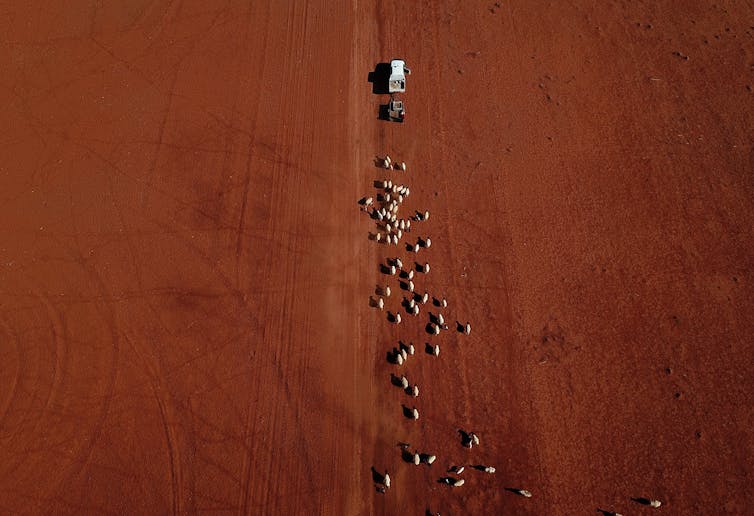
Poetry has often been a matter of nation building, including in Australia. Who hasn’t learnt by heart at school some verses from My Country (1908) by Dorothea Mackellar?
I love a sunburnt country,
A land of sweeping plains
Of ragged mountain ranges,
Of droughts and flooding rains.
I love her far horizons,
I love her jewel-sea,
Her beauty and her terror –
The wide brown land for me!
I discovered this poem when I first visited Canberra, many years before becoming an Australian citizen, when I saw its words sculpted on a hill next to the National Arboretum. There it was: all the emotional strength of local attachment against the deep blue sky of the Australian capital city.
At the launch of Revive, Australia’s new cultural policy, Prime Minister Anthony Albanese announced “the establishment of a poet laureate for Australia”. The statement was welcomed by the audience with cheer and applause. Sarah Holland-Batt read a poem about her late father, called The Gift. “Wonderful to have poetry, books and stories as a central part of the #NationalCulturalPolicy launch,” tweeted the Australian Publisher’s Association.
The enduring links between the arts and national identity could not have been stronger. The prime minister said it is “through the arts that we build our identity as a nation and as a people”.
A new literary funding body, Writers Australia, will oversee the selection of the poet laureate. But some questions remain. Will Australia make a brave choice? And even before this, what is a poet laureate in the first place?
The Concept Of A Poet Laureate

On April 8, 1341, poet Francesco Petrarca from the Tuscan town of Arezzo, more widely known as Petrarch (1304–1374), attended an official ceremony that was inspired by revived classical traditions dating back at least 12 centuries. On Rome’s Capitoline Hill, the Campidoglio, a crown of laurels was placed upon his head as an eternal consecration of his poetry.
Since then, Petrarch has been known as il poeta laureato, the poet laureate. Portraits of Petrarch depict him wearing this crown of laurel leaves, the evergreen tree that has symbolised victory since Ancient Greece.
The tradition of the poet laureate has continued through the centuries, all around the world, where the election of a poet laureate has become a national matter.
In the United Kingdom, the position was recognised as a royal office in 1668, when John Dryden (1631–1700) became England’s first official poet laureate. The honorary 10-year appointment, currently held by Simon Armitage, still comes from the monarch, on the advice of the prime minister.

The United States Poet Laureate, a title that dates back to 1937, is appointed by the Librarian of Congress, who is, in turn, appointed by the president. The current laureate is Ada Limón, appointed in 2022, the 24th official laureate and first Latina poet to occupy the position, the present title having been sanctioned by an act of Congress in 1985. The position has previously been held by the likes of Joy Harjo, Rita Dove, Elizabeth Bishop, Robert Lowell, Philip Levine, Mark Strand, Joseph Brodsky and Louise Glück.
Historian Anne-Marie Thiesse has noted that in France “writers are given the power to make – or break – the national consciousness”. In Ireland, upon the death of Nobel Laureate Seamus Heaney (1939–2013), Enda Kenny, the then Taoiseach of the Republic of Ireland, professed that the poet had been “keeper of our language, our codes, our essence as a people”.
But nationalistic conceptions of literature create other issues. The poet laureate embodies the voice of an entire nation. The poet can thus become a highly political and politicised figure. Historically, the formation of national literatures has meant many voices have been excluded.
As Thiesse notes, until very recently “feminine originality has seldom been grounds for recognition as a writer of national significance”. The first woman to be appointed poet laureate of the UK was Carol Ann Duffy only in 2009; she was also the first openly gay writer in this role.
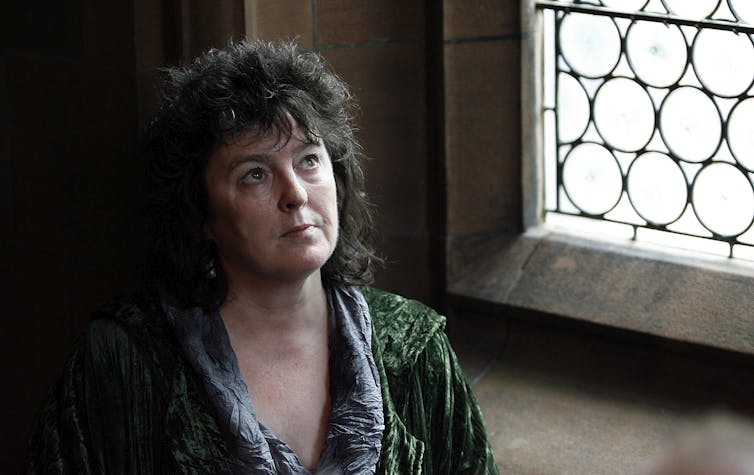
The same goes for poets writing in minority languages, writers from diverse backgrounds, First Nations writers, or whoever questions or challenges the status quo. The current poet laureate of New Zealand, Chris Tse, for example, has sought to address the question of how to negotiate matters of identity alongside the responsibilities of his official position.
Australia’s new arts policy, which includes a commitment to the full adoption of the Uluru Statement from the Heart, takes as its fundamental pillar the principle of “First Nations First” – a recognition of the fact the arts and stories of the oldest continuing living culture in the world are the foundation of who we are as a people and a country.
With the appointment of its very first poet laureate, Australia has an unmissable opportunity. We can only hope that, in keeping with the spirit of Revive, the decision will reflect its call for diversity and honour this foundational pillar. ![]()
Valentina Gosetti, Associate Professor in French and Australian Research Council DECRA Fellow, University of New England
This article is republished from The Conversation under a Creative Commons license. Read the original article.
The pleasure and pain of cinephilia: what happened when I watched Groundhog Day every day for a year
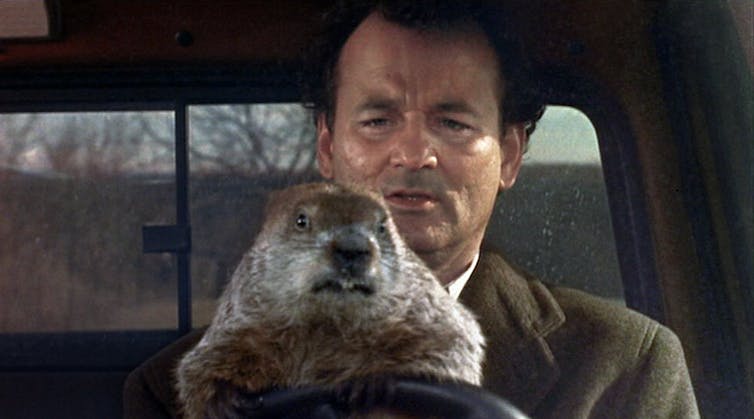
“What would you do if you were stuck in one place, and every day was exactly the same, and nothing that you did mattered?”
So asks time-stranded weatherman Phil Connors, played by Bill Murray, as he begins to come to grips with his predicament in the 1993 comedy classic Groundhog Day.
On February 2, while reporting on the annual Groundhog Festival in the quaint Pennsylvanian town of Punxsutawney, Phil becomes trapped in a time warp where he lives the same day over and over again.
In 2021 I was wrestling with the same question. Living in lockdown, I was feeling frustration, ennui, and like forward progress had ground to a halt. The circumstances created an opportunity to subject myself to a very unusual challenge: to watch the same film once a day, every day, for a year.
As a film scholar and cinephile, I wanted to find out how well a movie would sustain this kind of viewing and what a viewer might get out of the experience. Groundhog Day was the natural candidate.
On a Monday morning in September of 2021, I sat down on my couch and hit play.
The Act Of Watching
In the first month, my primary engagement was with the narrative.
Like many previous viewers, I found myself asking how long Phil was trapped in the loop for (my own approximation is 30 years, which sits between the 10 years offered by director Harold Ramis and the 10,000 years in the original screenplay by Danny Rubin).
I questioned the credibility of Rita (Andie MacDowell) falling in love with Phil having only known him for a day. I wondered how much of Murray’s performance was improvised (in Rubin’s words, some “colouring” but proportionally less than is assumed).
Gradually, my familiarity with the narrative led me to shift focus. Rewatching became about exploration, as I sought to discover details the average viewer may have missed.
I began to notice the re-occurrence of certain extras from scene to scene, building my own narrative around their identities. I realised the boy in a wheelchair in the background of the hospital scene is the same boy Phil will eventually save from breaking his leg every day.
I consumed as much extra material on the film as possible. Rubin’s screenplay and accompanying commentary, film critic Ryan Gilbey’s detailed monograph and Harold Ramis’s commentary were all illuminating. I realise in hindsight that I was following my natural inclination as a scholar, to try to understand something more fully by diving more deeply into it.
And then I reached the doldrums.
Shifting Perspectives
By the midway point, my viewing had shifted into a mode of cataloguing and memorisation. Phil Connors’ weather reports ran through my head unbidden, and I had built myself a mental map of Punxsutawney to the extent I felt like I could give directions to a visitor. I began to talk to the film as it played.
Some days, the viewing felt like a curse.
When Rita discovers Phil’s dilemma, she says: “Maybe it’s not a curse. Maybe it depends on how you look at it.”
My own shift in perspective came into play in the final three months. I found myself returning to the exploratory mode of viewing, encouraged by sharing and discussing theories with others who liked the film but who weren’t nutty enough to watch it hundreds of times.
New theories emerged.
I decided the bartender at the Pennsylvanian Hotel is clearly aware of Phil’s predicament (make note of his knowing looks and how quickly he serves them their favourite drinks), and that one of the Punxsutawney townspeople is clearly having an affair, as he can be seen visiting the Groundhog Festival with his wife and the banquet with his mistress.
I’m not the first to posit alternative readings of the film, but I understood in my final stretch of viewing that a film can transform with us, revealing new layers from viewing to viewing.
Films As Friends
In recent years, many scholars have examined the practice of repeat viewing, particularly with the emergence of technologies that provide flexibility to view when and where we like.
Film theorist Barbara Klinger suggests familiar movies have the capacity to become our “friends” and she introduced the term “karaoke cinema” to describe the joy of deep familiarity and quotability, arguing this experience provides the audience with an element of both comfort and mastery.
My experience certainly affirms her claims. Watching Groundhog Day every day for a year provided me with a deeper appreciation for how a film may contain multitudes – particularly those we choose to willingly re-experience.
The legacy of Groundhog Day can be seen in the recurring appeal of the time loop narrative in TV shows and films such as Palm Springs, Russian Doll and Happy Death Day.
And, like every piece of worthwhile art, it can also sustain its own deep interrogation and reveal to the curious rewatcher its multifaceted layers and dimensions.
On reaching the finish line I was elated and celebrated with a final viewing on the big screen. I have a feeling it will be some time before I revisit the film, but it’s comforting to know it will be there when I’m ready, an old friend who welcomes visitors. ![]()
Adam Daniel, Tutor / Lecturer in Film and Media Studies, Western Sydney University
This article is republished from The Conversation under a Creative Commons license. Read the original article.
Streaming platforms will soon be required to invest more in Australian TV and films, which could be good news for our screen sector

Streaming platforms like Netflix, Amazon Prime Video, and Disney+ will soon face regulations to invest in Australian content, as Australian regulations catch up to other world players.
Nearly eight years since the launch of Netflix in Australia in 2015, redressing the “regulatory gap” between unregulated streaming platforms and regulated traditional television is front-of-mind for Arts Minister Tony Burke.
Streaming Regulations In Australia
Announced as part of the Labor Party’s new National Cultural Policy, a 6-month consultation period will commence looking at the shape and intensity of new streaming regulations. The implementation deadline for the new streaming regulations will be no later than 1 July, 2024.
The regulation is shaping up as a revenue levy, where a percentage of a streaming platform’s Australian-derived revenues will be required to be spent on local television and films. Existing television regulations in Australia include the transmission quota of 55% local content on commercial free-to-air television, and the 10% expenditure requirement on pay-TV drama content. A revenue levy would be a new policy mechanism in Australia’s television regulation arsenal.
There is a particular urgency to regulating local content on streaming platforms for the government – in 2020-21, Australians for the first time were more likely to watch online video than traditional television. Major American streaming platforms now dominate the viewing landscape, with Netflix a mass service in Australia reaching over 50% of television households.
The government is concerned with the growth of online video that lacks cultural regulation, and fears this, combined with the prominence of American platforms, could contribute to a “drowning out” of Australian voices and stories. Regulating local content on streaming platforms is a way to underpin Australian cultural identity, to ensure Australians will continue to see themselves reflected onscreen, and to support the screen sector with jobs and investment.
Some industry stakeholders like Screen Producers Australia are on record arguing strongly for a high revenue levy of 20%. There are estimates a levy of 20% would result in around $500 million a year alongside 10,000 jobs in the screen sector.
However, some experts have warned such a high levy on local and global platforms could backfire and reduce the competitive edge domestic service Stan might have with Australian content. If every service is required to invest in Australian content, there is less to distinguish Stan’s place in the sector.
Opposition To The New Regulation
Unsurprisingly, the major streaming platforms have previously expressed their opposition to new regulation, believing their current levels of investment in Australia are sufficient. The Australian Communications and Media Authority reported Australian content expenditure from five major platforms at $335.1 million in the 2021-22 financial year.
While lobbying against new regulations, the streaming platforms have also been planning ahead for potential obligations. Amazon’s revival of Neighbours for instance would be a big help towards meeting future Australian content obligations.
The government has not been drawn on what percentage a revenue levy would be set at – that’s what the consultation period is for, they say. Nonetheless, no figure has been ruled out either.
Streaming Regulations Around The World
Some countries around the world have much more advanced regulatory frameworks than Australia for regulating streaming platforms. There are important lessons to impart from these countries, both in terms of seeing what sort of regulation is possible, but also understanding the pitfalls of potential regulation.
The European Union is widely considered the global leader in the regulation of digital platforms. The EU legislated a 30% catalogue quota for European works on streaming platforms in 2018 under the Audiovisual Media Services Directive, which was intended to come into force in 2021. However, several EU member states were slow in implementing this.
The catalogue quota considers the overall size of a streaming library and requires that 30% of these titles are European. For example, the average Netflix library in major markets was around 5,300 movies and TV shows in 2021, which would result in approximately 1,590 European titles. The catalogue quota uses a broad definition of “European” works which includes a range of countries across Europe beyond the EU itself, such as Turkey and ironically the United Kingdom.
Australia’s focus on a revenue levy on streaming platforms looks more like some of the additional regulations from EU member states legislated under the Audiovisual Media Services Directive. France, which has a history of strong cultural policy and “cultural exception”, has been aggressive in legislating a high revenue levy. The French levy of 20-25% is at the higher end in Europe and is also a country that Screen Producers Australia explicitly referenced when arguing for a 20% levy in Australia.
The French levy is not without quirks nor criticisms, and was even considered too high by the European Commission. Part of the 20-25% revenue requirement can be satisfied with spending money on generally European content (which again could include UK content), as well as investing in things like restoring archival footage, and subbing and dubbing of content.
The variety of expenditure options are worth keeping in mind when attempting to compare potential regulation in Australia to the French setting. There are a range of other percentages that have been implemented across EU member states – after extensive negotiations in Denmark, the level reached was 6%. The process in Denmark demonstrated some of the challenges that can come during negotiation of new regulation – during a difficult period, Netflix and other services stopped ordering Danish productions entirely in light of what the services saw as over-burdensome proposals.
As well as the importance of debating the intricacies of policy mechanisms for regulating streaming platforms in Australia, the forthcoming consultation period is a vital opportunity to reflect on the cultural dividend Australian content can pay, as well as how much of the raised money should go to drama, children’s, or independent production. So far, Labor has prioritised First Nations stories and perspectives as the first pillar of the National Cultural Policy, which is a worthy goal to consider for streaming and local content regulation.![]()
Oliver Eklund, PhD Candidate in Media and Communication, Queensland University of Technology
This article is republished from The Conversation under a Creative Commons license. Read the original article.
The world’s oldest fossils or oily gunk? New research suggests these 3.5 billion-year-old rocks don’t contain signs of life
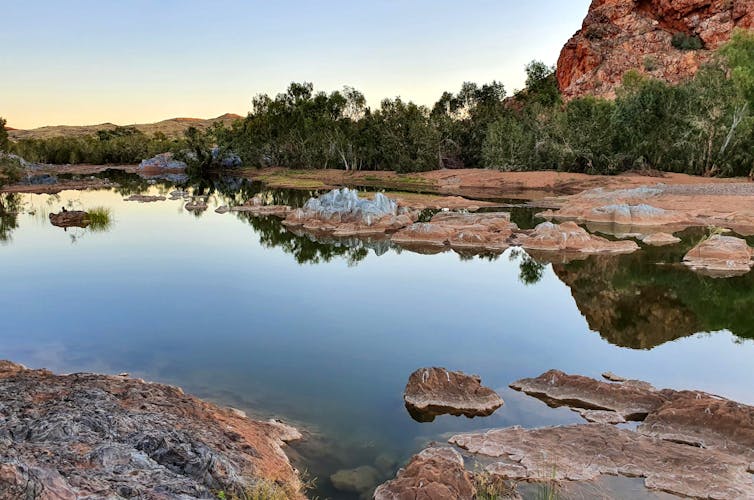
The Pilbara region of Western Australia is home to one of the most ancient surviving pieces of Earth’s crust, which has been geologically unchanged since its creation some 3.5 billion years ago.
Some of the oldest signs of life have been found here, in the North Pole area west of the town of Marble Bar, in black rocks composed of fine-grained quartz called chert.
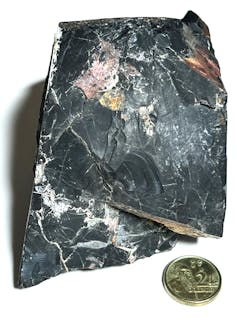
Some features in the so-called “Apex chert” have been identified as the fossilised remains of microbes much like the bacteria that still survive today. However, scientists have debated the true origin of these features ever since they were discovered 30 years ago.
In new research published in Science Advances, we show the carbon-rich compounds also found in the chert may have been produced by non-biological processes. This suggests the supposed “fossils” are not remnants of early lifeforms but rather artefacts of chemical and geological processes.
Controversial Pilbara Fossils
In 1993, American palaeobiologist William Schopf spotted carbon-rich filaments in outcrops of the 3.45 billion year old Apex chert. He interpreted them as the charred remains of fossilised microbes similar to cyanobacteria, which were Earth’s first oxygen-producing organisms and are still abundant today.
The existence of fossilised cyanobacteria in such old rocks would imply that life was already pumping oxygen into the air more than a billion years before Earth’s atmosphere became rich in oxygen.
A key piece of evidence in favour of life was the association of organic compounds with the ancient fossils. This is because living cells are made up of large organic molecules, which comprise mainly carbon as well as hydrogen, nitrogen, oxygen and other elements.
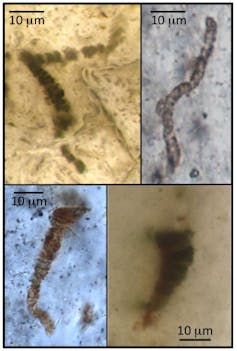
In 2002, Schopf’s interpretation was challenged by English palaeobiologist Martin Brasier and his team. They showed the “fossils” displayed a variety of shapes and sizes uncharacteristic of cyanobacteria, and indeed, inconsistent with microbial life. What’s more, they also showed the fossil-bearing black cherts were not horizontal beds deposited on the seafloor, but angled veins cutting across the underlying layers of rock.
The fossil-bearing cherts appeared to have formed at high temperatures during volcanic activity. Brasier argued this environment was hostile to life and the “fossils” were, in fact, formed from graphite impurities in the rock. They also speculated that the carbon associated with the “fossils” may not even be biological in origin.
A lively debate ensued, and it has continued ever since.
Microbes Or Hot Fluids?
To try to determine where the carbon-rich deposits in the black chert veins came from, we took a very close look at them with a high-magnification electron microscope.
We found it did not come from fossilised bacteria. The oil-like substance occurs as residues in fractures and as petrified droplets, which have previously been mistaken for ancient fossils.
The textures in the black chert veins indicate they were formed when hot fluids rich in silica and carbon moved through cracks in lava flows below vents in the seafloor similar to modern “black smoker” vents. Upon approaching the seafloor, the hot fluids infiltrated layers of volcanic sediment, replacing it with black chert.

If the carbon came from such a hot fluid, this supports findings that the carbon-rich filaments in the Apex chert are not fossils. However, it also raises a new question.
Typically, organic compounds such as oil and gas, which are referred to as “fossil fuels” because they form from the dead remains of algae, bacteria and plants, are generated when these remains are buried and heated to temperatures above 65℃. Chemical reactions release organic compounds, which may accumulate to form oil and gas fields.
However, the sediments from the North Pole area are very thin (less than 50m thick), poor in organic molecules, and sandwiched between kilometres of lava flows. So, how did the organic compounds form in such surroundings?
Seafloor Vents On Early Earth
A possible alternative pathway is suggested from experimental evidence and research on Martian meteorites. In the absence of traditional biological sources, some of the organic molecules in the chert veins could have formed by non-biological processes.
For instance, when hot water circulates through lava or other igneous rock, water and carbon dioxide can react with mineral surfaces to form organic compounds. Similar reactions have been proposed to explain the presence of organic molecules in Martian meteorites and in some igneous rocks on Earth.
The carbon in black cherts from the Pilbara outback may therefore represent relics of organic compounds that were produced by reactions between water and rock. Indeed, on the early Earth seafloor vents may have created more organic compounds than biological processes did, making it difficult to distinguish between authentic carbon-bearing fossils and oily artefacts.
While more work is underway, early results suggest life was only just surviving 3.5 billion years ago, struggling to gain a foothold in an inhospitable environment. The world then was wracked by regular volcanic eruptions that covered Earth’s surface in lava, and bathed in harsh solar radiation streaming through an atmosphere with no protective ozone layer.
Looking further back in time, the black cherts offer a glimpse of a lifeless planet. Reactions between water and rock at seafloor vents produced a cocktail of organic compounds, perhaps supplying the raw materials for the assembly of the first living cells.![]()
Birger Rasmussen, Adjunct Professor, The University of Western Australia and Janet Muhling, Adjunct Research Fellow, Earth Sciences, The University of Western Australia
This article is republished from The Conversation under a Creative Commons license. Read the original article.
Australia is finally getting a last-chance view of a green comet not seen for 50,000 years

Over the past few weeks, social media has been abuzz with excited posts about the green comet that is currently “whizzing” or “flying through the sky”.
Now, comets don’t so much whizz as crawl. Despite that, there is a grain of truth in the reports – along with a whole heap of hype.
There is a relatively bright, green comet in the sky at the moment. Sadly, despite the hyperbole, you’re unlikely to spot it with the unaided eye – unless you have great eyesight, a dark sky, and know where to look.
People in the Northern Hemisphere have been following the comet for weeks. Now, for us in Australia, it will finally become visible, just a few days after its closest approach to Earth. So what’s all the fuss about?
Green And Rare
Comet C/2022 E3 (ZTF) is a small dirty snowball discovered in March 2022 by the automated Zwicky Transient Facility (hence the name ZTF).
Unlike asteroids, which are made of rock, comets are icy bodies. When they approach the Sun and the temperature rises, that icy surface sublimates (changes directly from a solid to a gas). The comet thus becomes shrouded in a fuzzy “coma” of gas and dust. Radiation pressure from the Sun, along with the effects of the solar wind, pushes the gas and dust outwards, and the comet grows a “tail”.
The gas released by the comet is exposed to sunlight in the vacuum of space. That radiation, particularly the ultraviolet light, excites the gas. This means the gas gets rid of the energy it absorbs by shining in specific colours.
Much of the work astronomers do is based on breaking the light from distant objects into its component colours, to study what they are made of. Comet tails are usually blue, but comet ZTF has a very distinct greenish hue. Green is the telltale sign the comet is emitting large amounts of diatomic carbon and cyanogen, which both create a greenish glow when excited.
So, by looking at the comet’s colour, we can immediately learn a bit about its composition – which is pretty cool!
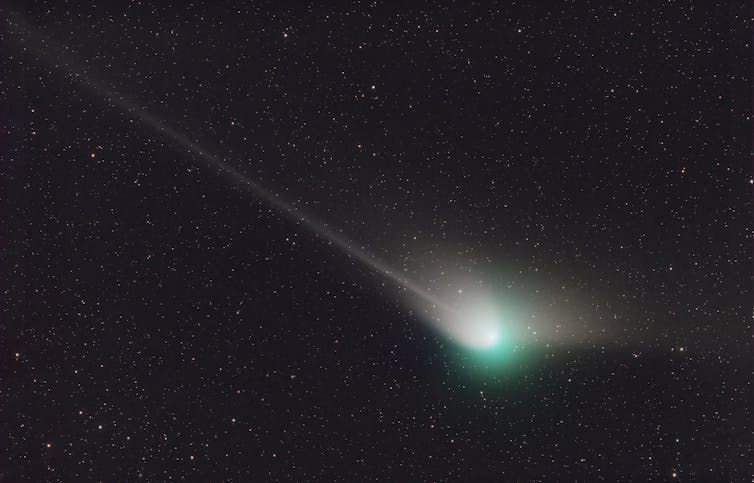
Upon discovery, the comet was just inside the orbit of Jupiter. Astronomers soon realised it would come relatively close to Earth in January and February this year, just a couple of weeks after its closest approach to the Sun (perihelion, which came on January 12).
Comet ZTF is a “long period comet”, which means it’s moving on an extremely elongated orbit around the Sun. It originated in the Oort cloud – a vast cloud of trillions of cometary nuclei that stretches halfway to the nearest star, leftovers from planetary formation 4.5 billion years ago. Those comets are held in cold storage until something nudges them inwards.
The last time comet ZTF graced the inner Solar System was around 50,000 years ago. While long period comets are not uncommon, interestingly this is likely ZTF’s final swing past our star. Thanks to a quirk of celestial mechanics, it is going to leave the Solar System altogether, travelling just fast enough to escape the Sun’s gravity.
Our Solar System (and all other planetary systems) are continually shedding comets like dandruff – with ZTF being just one more flake to add to the interstellar snowstorm.
A Perfect Ringside Seat
Now, under normal circumstances, comet ZTF would be solely of interest to keen amateur and professional astronomers. It is actually a relatively small comet, with a nucleus likely no more than a few hundred metres across.
Were it not for the fact of its relatively close approach, it would never get bright enough to be noteworthy.
Instead, pure chance has led to the comet passing through the inner Solar System at just the right time to come close to us. Instead of a dim and distant view, our planet has a perfect ringside seat to see the comet at its finest.
When And Where Can We See It In Australia?
At 17:54 UT on February 1 (that’s in the early morning of February 2 in Australia, around 5am on the east coast, but earlier in west), comet ZTF will be just under 42.5 million kilometres (0.284 au) from Earth.
Just as expected, the comet is now at its brightest – visible to observers in the Northern Hemisphere as a faint fuzzy blob (with the naked eye, from dark skies), albeit one that is made significantly harder to spot thanks to the glare of the nearly full Moon.
For observers in the Southern Hemisphere, we had to wait because the comet was too far in the northern sky – essentially “above” our planet in space.
Fortunately, the comet is now moving southwards at a rate of around five or six degrees per day for the first ten days of February. Observers in the far north (Cairns and Darwin) might catch a glimpse low in the northern sky on the evening of February 2. Those in Hobart will have to wait until February 7 or 8 before it creeps high enough above the horizon to be spotted.
A good resource to check when the comet will be above the horizon from your home town is the free web-based planetarium package Stellarium. Go to the site, pan around to the north, and set the clock (at the bottom right) to an hour or two after sunset – then step forward day by day until ‘C/2022 E3 (ZTF)’ is visible above the northern horizon.
Get Your Gear Ready
Technically, the comet is currently bright enough to see with the naked eye. Eagle-eyed northern observers have been reporting sightings without optical aid since mid-January.
However, the comet is only just visible in this way – which means you need to know exactly where to look, and to have a really dark sky. And even if you can, what you see will likely be underwhelming – a dim fuzzy blob.
By the time the comet is visible in Australia, it will be dimming quite rapidly, making it harder to see from one night to the next.
If you’re keen to see it, your best bet is to at least get a pair of binoculars. Work out where it should be, and scan the sky slowly, looking for a fuzzy patch of light.
The best time to find the comet will likely be February 11, when it will be within a degree of Mars, which currently shines bright and red, high to the north in the evening sky.
On the night of the 11th, find Mars with your binoculars, and pan just slightly to the right – you should be able to find the comet there.
But the best way to view the comet will be online. Astronomers worldwide are capturing incredible images of our celestial visitor. Taken with exposures many minutes in length, these photos reveal a view far better than anything possible with the naked eye.![]()
Jonti Horner, Professor (Astrophysics), University of Southern Queensland
This article is republished from The Conversation under a Creative Commons license. Read the original article.
Women’s Health Experts Appointed To Tackle ‘Medical Misogyny’
- health equity in healthcare and services
- health literacy for women in priority populations
- strengthening and diversifying medical research
- health workforce training and education
Elevating People With Lived Experience Of Mental Ill-Health To Drive Reform
2023 NSW Women Of The Year Awards Finalists Announced
- Dr Rebecca Deans - Randwick
- Anne Dennis - Walgett
- Arabella Gibson - Mosman
- Unis Goh - Turramurra
- Jodie Ward - Heathcote
- Natalie Ahmat - Gladesville
- Debbie Barwick - Rutherford
- Jodi Edwards - Flinders
- Lynda Edwards - Narromine
- Kirsty Hargraves - Dubbo
- Naomi Moran - Lismore
- Elly Bird - Lismore
- Randa Habelrih - Maroubra
- Mary Hollingworth - Glen Innes
- Angela McCann OAM - Coolamon
- Emma Bracken - Suffolk Park
- Gayle Dunn - Ulladulla
- Dannielle Pickford - Banora Point
- Sally Rogers - Eatonsville
- Ashna Basu - Randwick
- Chanel Contos - Sydney
- Lua Pellegrini - Toongabbie
- Daniya Syed - Oran Park
- Jiahui Diana Zhang - Blacktown
- Abbie - Epping
- Matilda Gibson - Cessnock
- Jorja O’Brien - Young
- Grace Salkeld - Garthowen
- Jasmine Seidel - New Lambton Heights
- Coralie Smith - Ulladulla
- Haniya Syed - Oran Park
- Penelope Towney - Corrimal
- Lucy Trease - Alstonville
- Audrey Wood - Mount Kuring-gai
Antibiotics Shortage In Australia
AI is helping us search for intelligent alien life – and we’ve found 8 strange new signals

Some 540 million years ago, diverse life forms suddenly began to emerge from the muddy ocean floors of planet Earth. This period is known as the Cambrian Explosion, and these aquatic critters are our ancient ancestors.
All complex life on Earth evolved from these underwater creatures. Scientists believe all it took was an ever-so-slight increase in ocean oxygen levels above a certain threshold.
We may now be in the midst of a Cambrian Explosion for artificial intelligence (AI). In the past few years, a burst of incredibly capable AI programs like Midjourney, DALL-E 2 and ChatGPT have showcased the rapid progress we’ve made in machine learning.
AI is now used in virtually all areas of science to help researchers with routine classification tasks. It’s also helping our team of radio astronomers broaden the search for extraterrestrial life, and results so far have been promising.
Discovering Alien Signals With AI
As scientists searching for evidence of intelligent life beyond Earth, we have built an AI system that beats classical algorithms in signal detection tasks. Our AI was trained to search through data from radio telescopes for signals that couldn’t be generated by natural astrophysical processes.
When we fed our AI a previously studied dataset, it discovered eight signals of interest the classic algorithm missed. To be clear, these signals are probably not from extraterrestrial intelligence, and are more likely rare cases of radio interference.
Nonetheless, our findings – published today in Nature Astronomy – highlight how AI techniques are sure to play a continued role in the search for extraterrestrial intelligence.

Not So Intelligent
AI algorithms do not “understand” or “think”. They do excel at pattern recognition, and have proven exceedingly useful for tasks such as classification – but they don’t have the ability to problem solve. They only do the specific tasks they were trained to do.
So although the idea of an AI detecting extraterrestrial intelligence sounds like the plot of an exciting science fiction novel, both terms are flawed: AI programs are not intelligent, and searches for extraterrestrial intelligence can’t find direct evidence of intelligence.
Instead, radio astronomers look for radio “technosignatures”. These hypothesised signals would indicate the presence of technology and, by proxy, the existence of a society with the capability to harness technology for communication.
For our research, we created an algorithm that uses AI methods to classify signals as being either radio interference, or a genuine technosignature candidate. And our algorithm is performing better than we’d hoped.
What Our AI Algorithm Does
Technosignature searches have been likened to looking for a needle in a cosmic haystack. Radio telescopes produce huge volumes of data, and in it are huge amounts of interference from sources such as phones, WiFi and satellites.
Search algorithms need to be able to sift out real technosignatures from “false positives”, and do so quickly. Our AI classifier delivers on these requirements.
It was devised by Peter Ma, a University of Toronto student and the lead author on our paper. To create a set of training data, Peter inserted simulated signals into real data, and then used this dataset to train an AI algorithm called an autoencoder. As the autoencoder processed the data, it “learned” to identify salient features in the data.
In a second step, these features were fed to an algorithm called a random forest classifier. This classifier creates decision trees to decide if a signal is noteworthy, or just radio interference – essentially separating the technosignature “needles” from the haystack.
After training our AI algorithm, we fed it more than 150 terabytes of data (480 observing hours) from the Green Bank Telescope in West Virginia. It identified 20,515 signals of interest, which we then had to manually inspect. Of these, eight signals had the characteristics of technosignatures, and couldn’t be attributed to radio interference.
Eight Signals, No Re-Detections
To try and verify these signals, we went back to the telescope to re-observe all eight signals of interest. Unfortunately, we were not able to re-detect any of them in our follow-up observations.
We’ve been in similar situations before. In 2020 we detected a signal that turned out to be pernicious radio interference. While we will monitor these eight new candidates, the most likely explanation is they were unusual manifestations of radio interference: not aliens.
Sadly the issue of radio interference isn’t going anywhere. But we will be better equipped to deal with it as new technologies emerge.
Narrowing The Search
Our team recently deployed a powerful signal processor on the MeerKAT telescope in South Africa. MeerKAT uses a technique called interferometry to combine its 64 dishes to act as a single telescope. This technique is better able to pinpoint where in the sky a signal comes from, which will drastically reduce false positives from radio interference.
If astronomers do manage to detect a technosignature that can’t be explained away as interference, it would strongly suggest humans aren’t the sole creators of technology within the Galaxy. This would be one of the most profound discoveries imaginable.
At the same time, if we detect nothing, that doesn’t necessarily mean we’re the only technologically-capable “intelligent” species around. A non-detection could also mean we haven’t looked for the right type of signals, or our telescopes aren’t yet sensitive enough to detect faint transmissions from distant exoplanets.
We may need to cross a sensitivity threshold before a Cambrian Explosion of discoveries can be made. Alternatively, if we really are alone, we should reflect on the unique beauty and fragility of life here on Earth.![]()
Danny C Price, Senior research fellow, Curtin University
This article is republished from The Conversation under a Creative Commons license. Read the original article.
3 in 4 people experience abuse on dating apps. How do we balance prevention with policing?

A 2022 survey by the Australian Institute of Criminology found three in four app users surveyed had experienced online abuse or harassment when using dating apps. This included image-based abuse and abusive and threatening messages. A further third experienced in-person or off-app abuse from people they met on apps.
These figures set the scene for a national roundtable convened on Wednesday by Communications Minister Michelle Rowland and Social Services Minister Amanda Rishworth.
Experiences of abuse on apps are strongly gendered and reflect preexisting patterns of marginalisation. Those targeted are typically women and members of LGBTIQA+ communities, while perpetrators are commonly men. People with disabilities, Aboriginal and Torres Strait Islander people, and people from migrant backgrounds report being directly targeted based on their perceived differences.
What do these patterns tell us? That abuse on apps isn’t new or specific to digital technologies. It reflects longstanding trends in offline behaviour. Perpetrators simply exploit the possibilities dating apps offer. With this in mind, how might we begin to solve the problem of abuse on dating apps?
Trying To Find Solutions
Survivors of app-related abuse and violence say apps have been slow to respond, and have failed to offer meaningful responses. In the past, users have reported abusive behaviours, only to be met with a chatbot. Also, blocking or reporting an abusive user doesn’t automatically reduce in-app violence. It just leaves the abuser free to abuse another person.
Wednesday’s roundtable considered how app-makers can work better with law enforcement agencies to respond to serious and persistent offenders. Although no formal outcomes have been announced, it has been suggested that app users should provide 100 points of identification to verify their profiles.
But this proposal raises privacy concerns. It would create a database of the real-world identities of people in marginalised groups, including LGBTIQA+ communities. If these data were leaked, it could cause untold harm.
Prevention Is Key
Moreover, even if the profile verification process was bolstered, regulators could still only respond to the most serious cases of harm, and after abuse has already occurred. That’s why prevention is vital when it comes to abuse on dating apps. And this is where research into everyday patterns and understanding of app use adds value.
Often, abuse and harassment are fuelled by stereotypical beliefs about men having a “right” to sexual attention. They also play on widely held assumptions that women, queer people and other marginalised groups do not deserve equal levels of respect and care in all their sexual encounters and relationships – from lifelong partnerships to casual hookups.
In response, app-makers have engaged in PSA-style campaigns seeking to change the culture among their users. For example, Grindr has a long-running “Kindr” campaign that targets sexual racism and fatphobic abuse among the gay, bisexual and trans folk who use the platform.

Other apps have sought to build safety for women into the app itself. For instance, on Bumble only women are allowed to initiate a chat in a bid to prevent unwanted contact by men. Tinder also recently made its “Report” button more visible, and provided users safety advice in collaboration with WESNET.
Similarly, the Alannah & Madeline Foundation’s eSafety-funded “Crushed But Okay” intervention offers young men advice about responding to online rejection without becoming abusive. This content has been viewed and shared more than one million times on TikTok and Instagram.
In our research, app users told us they want education and guidance for antisocial users – not just policing. This could be achieved by apps collaborating with community support services, and advocating for a culture that challenges prevailing gender stereotypes.
Policy Levers For Change
Apps are widely used because they promote opportunities for conversation, personal connection and intimacy. But they are a for-profit enterprise, produced by multinational corporations that generate income by serving advertising and monetising users’ data.
Taking swift and effective action against app-based abuse is part of their social license to operate. We should consider stiff penalties for app-makers who violate that license.
The United Kingdom is just about to pass legislation that contemplates time in prison for social media executives who knowingly expose children to harmful content. Similar penalties that make a dent in app-makers’ bottom line may present more of an incentive to act.
In the age of widespread data breaches, app users already have good reason to mistrust demands to supply their personal identifying information. They will not necessarily feel safer if they are required to provide more data.
Our research indicates users want transparent, accountable and timely responses from app-makers when they report conduct that makes them feel unsafe or unwelcome. They want more than chatbot-style responses to reports of abusive conduct. At a platform policy level, this could be addressed by hiring more local staff who offer transparent, timely responses to complaints and concerns.
And while prevention is key, policing can still be an important part of the picture, particularly when abusive behaviour occurs after users have taken their conversation off the app itself. App-makers need to be responsive to police requests for access to data when this occurs. Many apps, including Tinder, already have clear policies regarding cooperation with law enforcement agencies.![]()
Kath Albury, Professor of Media and Communication and Associate Investigator, ARC Centre of Excellence for Automated Decision-Making + Society, Swinburne University of Technology and Daniel Reeders, PhD Candidate, ANU School of Regulation and Global Governance (RegNet), Australian National University
This article is republished from The Conversation under a Creative Commons license. Read the original article.
Nope, coffee won’t give you extra energy. It’ll just borrow a bit that you’ll pay for later
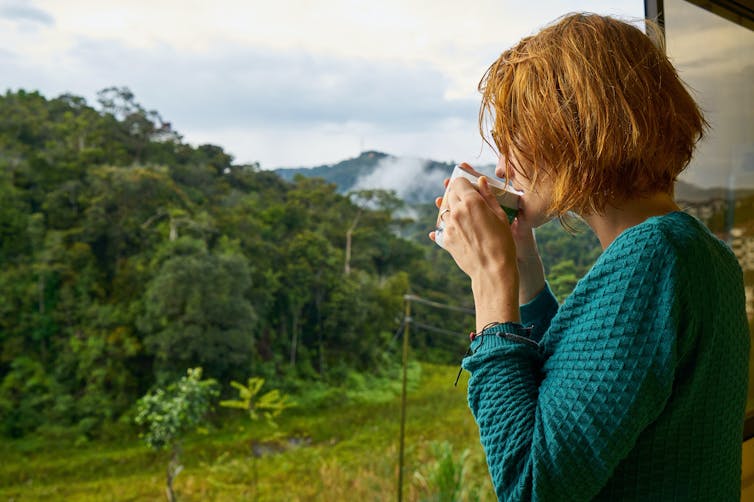
Many of us want (or should I say need?) our morning coffee to give us our “get up and go”. Altogether, the people of the world drink more than two billion cups of coffee each day.
You might think coffee gives you the energy to get through the morning or the day – but coffee might not be giving you as much as you think.
The main stimulant in coffee is the caffeine. And the main way caffeine works is by changing the way the cells in our brain interact with a compound called adenosine.
Getting Busy, Getting Tired
Adenosine is part of the system that regulates our sleep and wake cycle and part of why high levels of activity lead to tiredness. As we go about our days and do things, levels of adenosine rise because it is released as a by-product as energy is used in our cells.
Eventually adenosine binds to its receptor (parts of cells that receive signals) which tells the cells to slow down, making us feel drowsy and sleepy. This is why you feel tired after a big day of activity. While we are sleeping, energy use drops lowering adenosine levels as it gets shuffled back into other forms. You wake up in the morning feeling refreshed. Well, if you get enough sleep that is.
If you are still feeling drowsy when you wake up caffeine can help, for a while. It works by binding to the adenosine receptor, which it can do because it is a similar shape. But it is not so similar that it triggers the drowsy slow-down signal like adenosine does. Instead it just fills the spots and stops the adenosine from binding there. This is what staves off the drowsy feeling.
No Free Ride
But there is a catch. While it feels energising, this little caffeine intervention is more a loan of the awake feeling, rather than a creation of any new energy.
This is because the caffeine won’t bind forever, and the adenosine that it blocks doesn’t go away. So eventually the caffeine breaks down, lets go of the receptors and all that adenosine that has been waiting and building up latches on and the drowsy feeling comes back – sometimes all at once.
So, the debt you owe the caffeine always eventually needs to be repaid, and the only real way to repay it is to sleep.

Timing Is Everything
How much free adenosine is in your system, that hasn’t attached to receptors yet, and how drowsy you are as a consequence will impact how much the caffeine you drink wakes you up. So, the coffee you drink later in the day, when you have more drowsy signals your system may feel more powerful.
If it’s too late in the day, caffeine can make it hard to fall asleep at bedtime. The “half life” of caffeine (how long it takes to break down half of it) is about five hours). That said, we all metabolise caffeine differently, so for some of us the effects wear off more quickly. Regular coffee drinkers might feel less of a caffeine “punch”, with tolerance to the stimulant building up over time.

Caffeine can also raise levels of cortisol, a stress hormone that can make you feel more alert. This might mean caffeine feels more effective later in the morning, because you already have a natural rise in cortisol when you wake up. The impact of a coffee right out of bed might not seem as powerful for this reason.
If your caffeinated beverage of choice is also a sugary one, this can exacerbate the peak and crash feeling. Because while sugar does create actual energy in the body, the free sugars in your drink can cause a spike in blood sugar, which can then make you feel tired when the dip comes afterwards.
While there is no proven harm of drinking coffee on an empty stomach, coffee with or after a meal might hit you more slowly. This is because the food might slow down the rate at which the caffeine is absorbed.
What About A Strong Tea Or Fizzy Cola?
Coffee, of course, isn’t the only caffeinated beverage that can loan you some energy.
The caffeine in tea, energy drinks and other beverages still impacts the body in the same way. But, since the ingredients mostly come from plants, each caffeinated beverage has its own profile of additional compounds which can have their own stimulant effect, or can interact with caffeine to change its impacts.
Caffeine can be useful, but it isn’t magic. To create energy and re-energise our bodies we need enough food, water and sleep.
![]()
Emma Beckett, Senior Lecturer (Food Science and Human Nutrition), School of Environmental and Life Sciences, University of Newcastle
This article is republished from The Conversation under a Creative Commons license. Read the original article.
Beware The Barbie Drug: The Dangers Of Using Melanotan
Farming More Seaweed To Be Food, Feed And Fuel
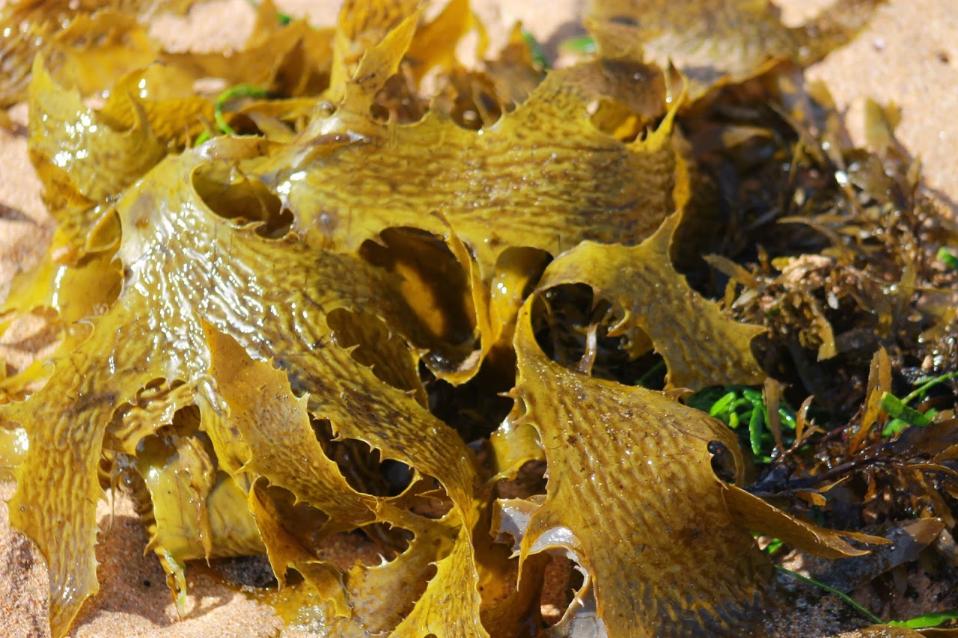
World-First Guidelines Created To Help Prevent Heart Complications In Children During Cancer Treatment
Disclaimer: These articles are not intended to provide medical advice, diagnosis or treatment. Views expressed here do not necessarily reflect those of Pittwater Online News or its staff.